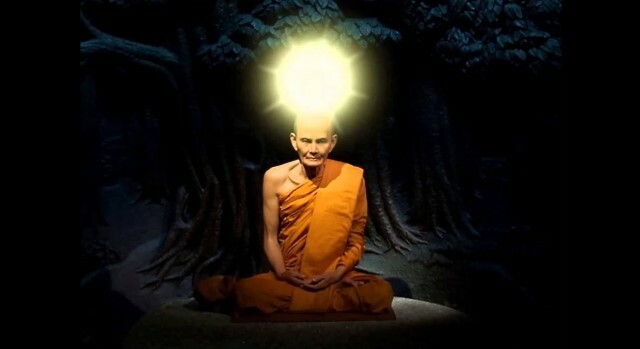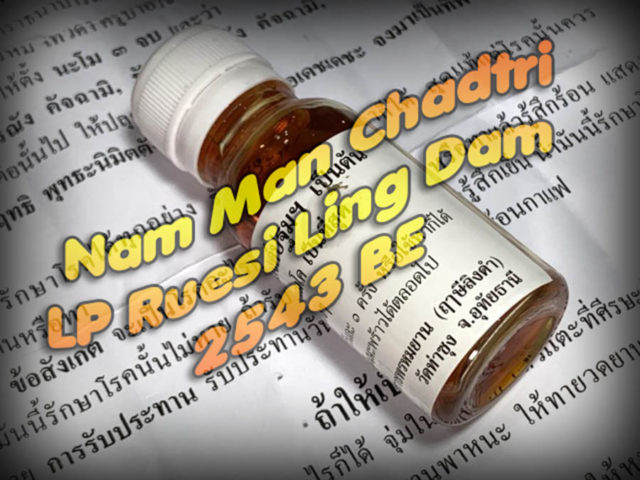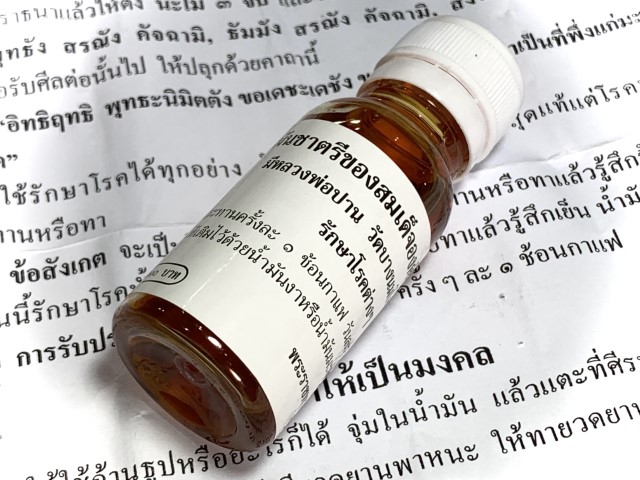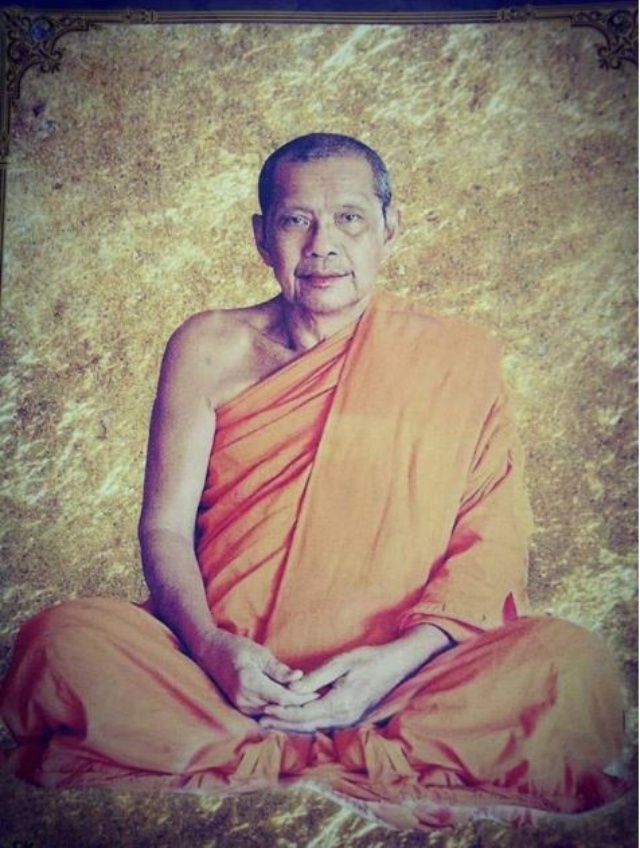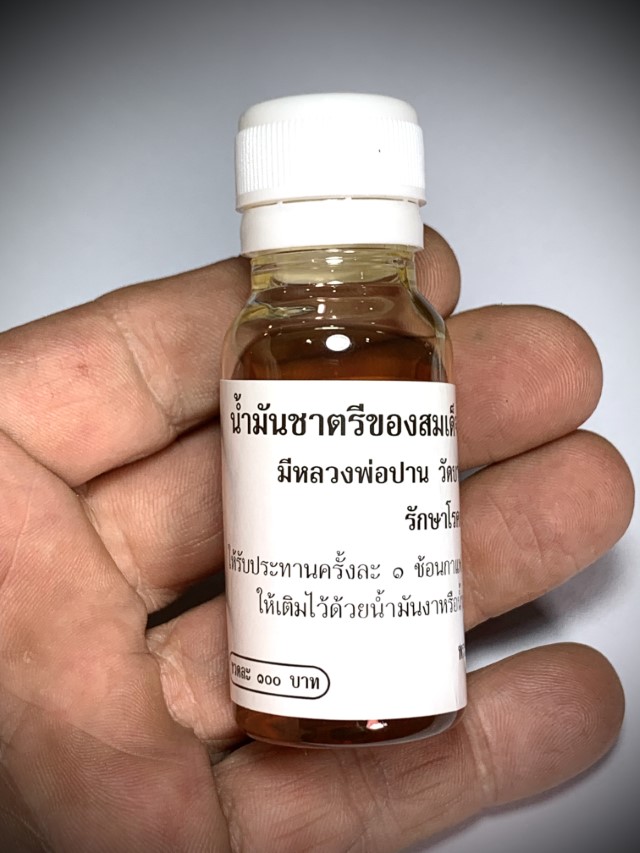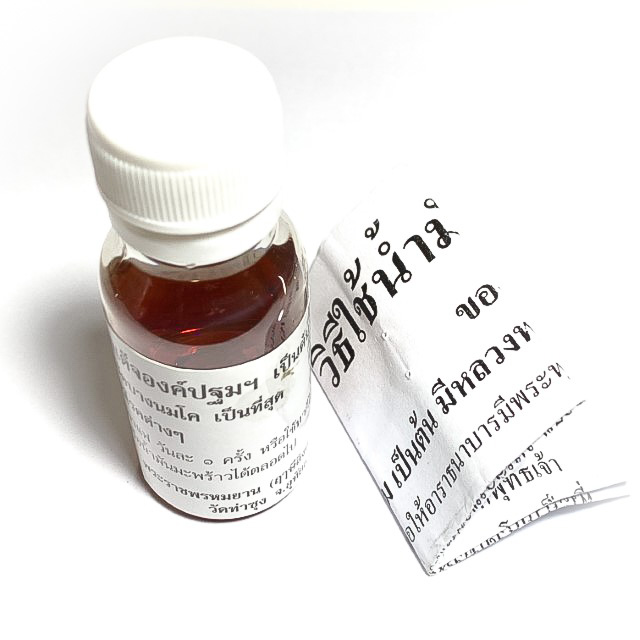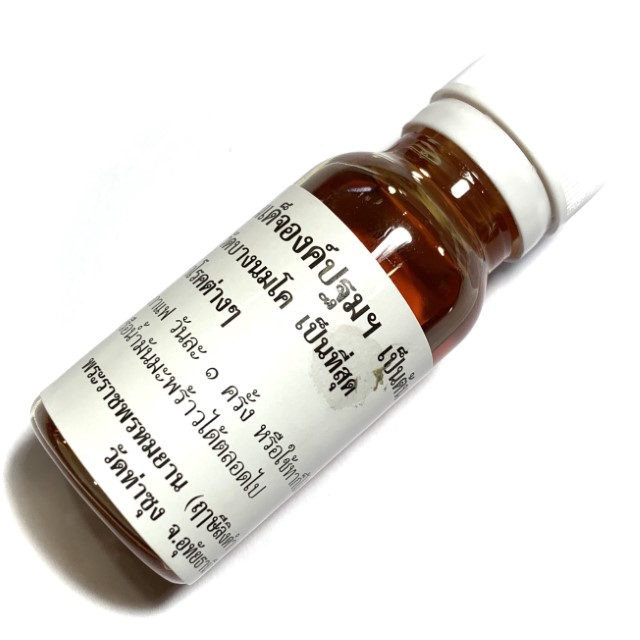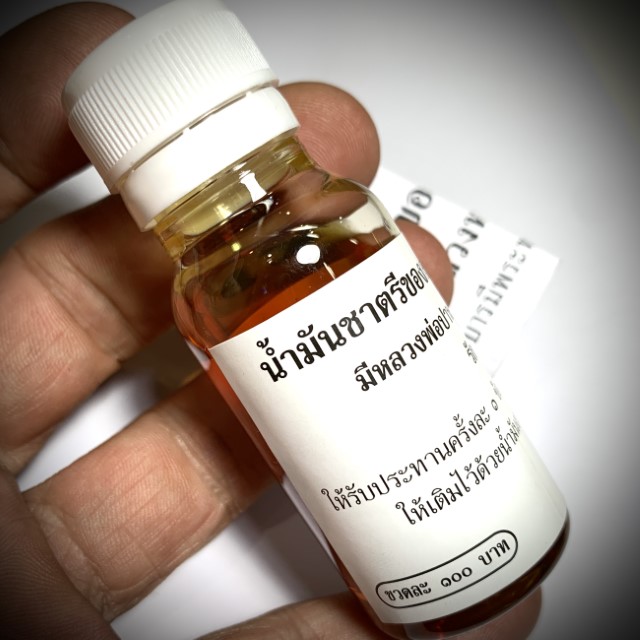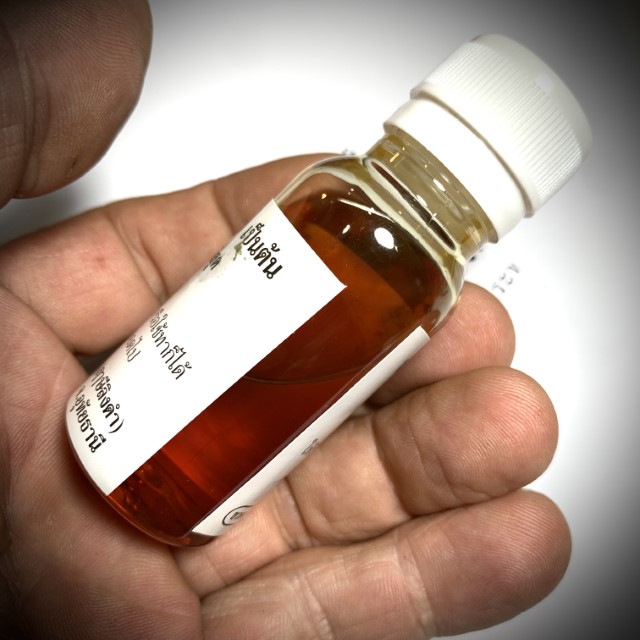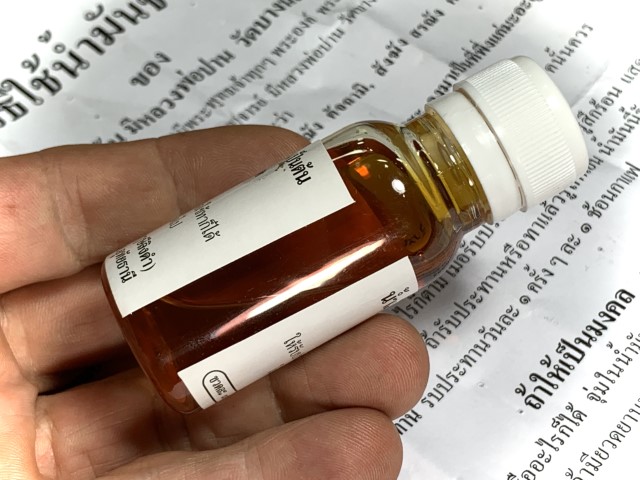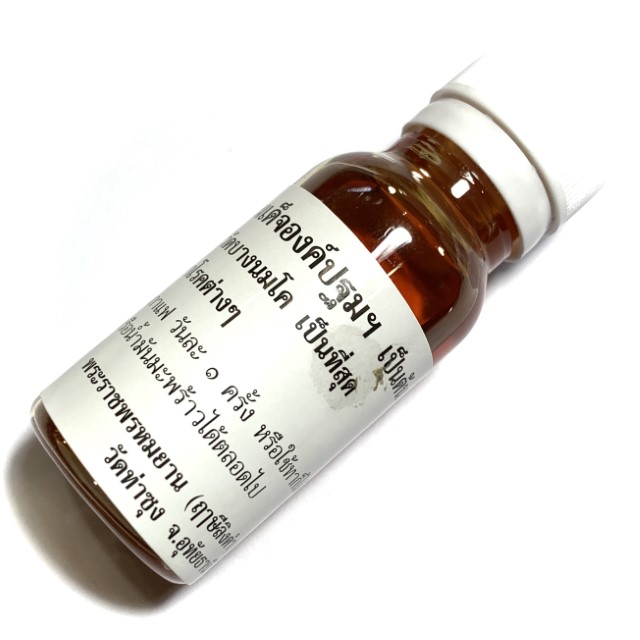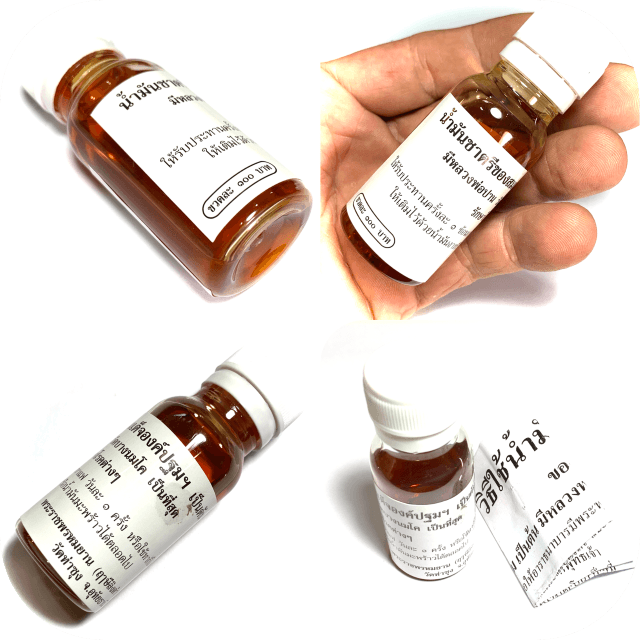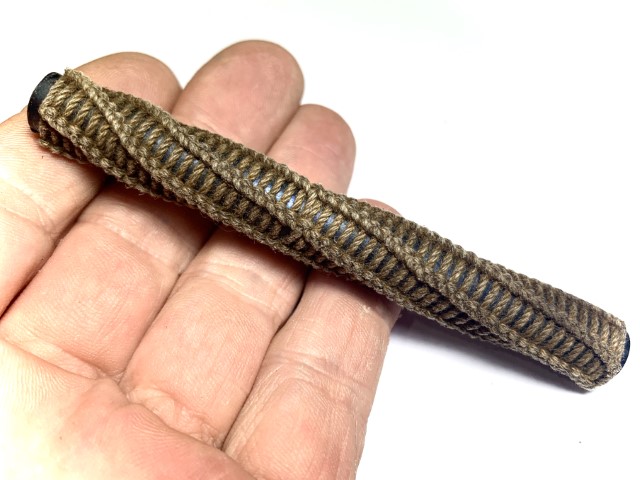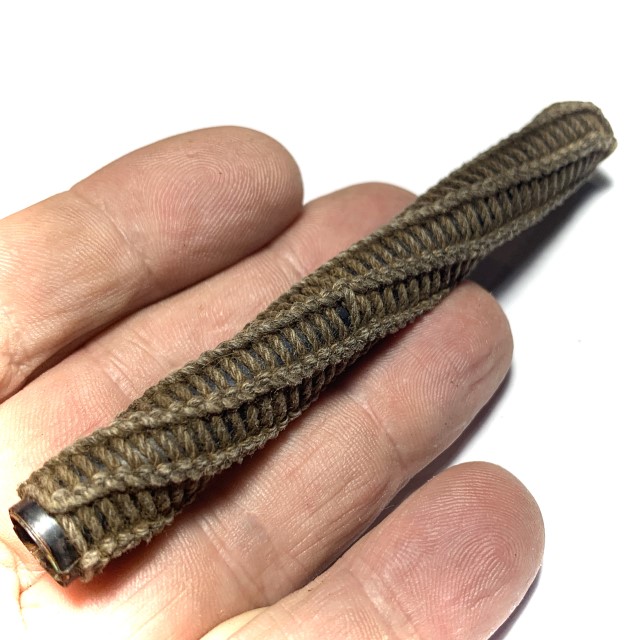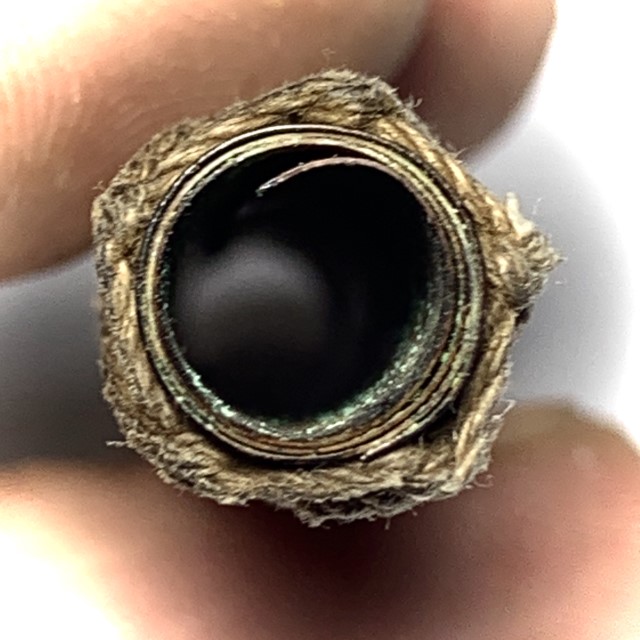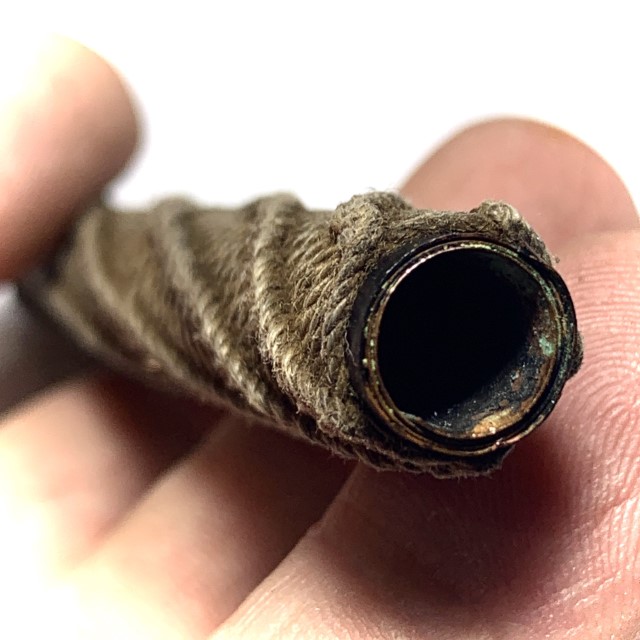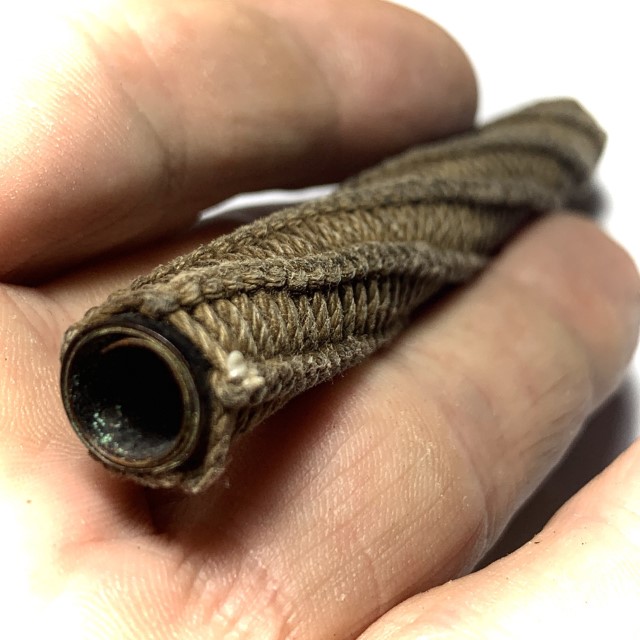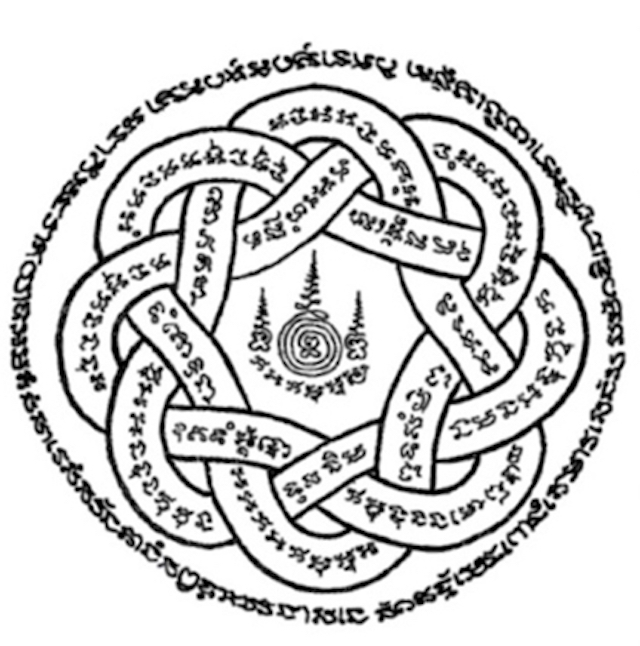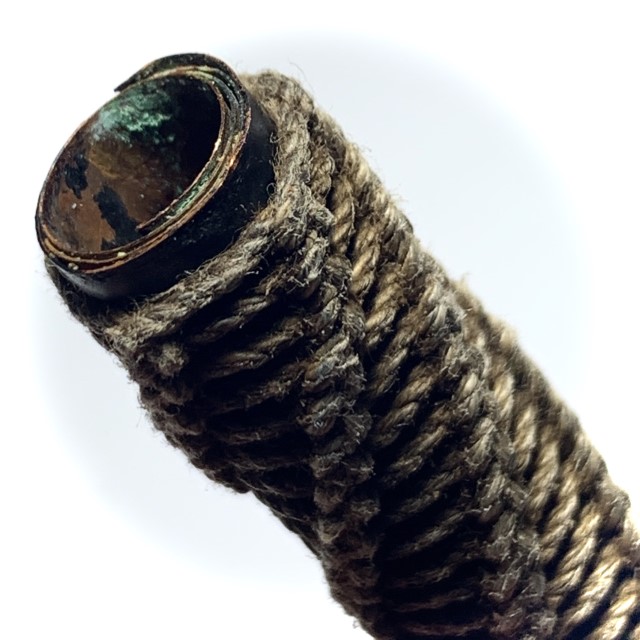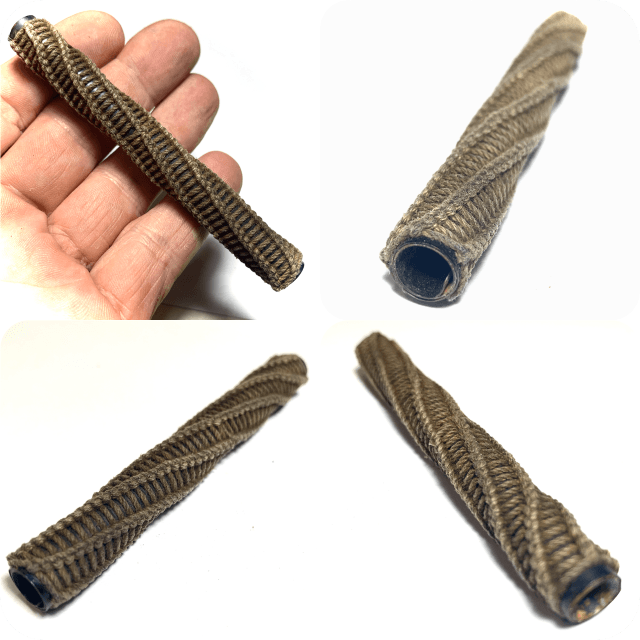The Revered Legend of Phra Somdej Wat Rakhang: A Scholarly Examination of its Origins, Significance, and Enduring Legacy
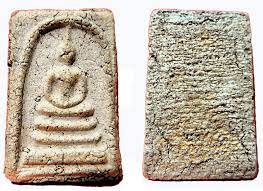 Phra Somdej Wat Rakhang, often hailed as the “King of Amulets” within Thailand, stands as an icon of profound cultural and religious significance. Its very name evokes a sense of history, spirituality, and the revered figure of Somdej Phra Phutthachan (To) Phrommarangsi, the esteemed monk credited with its creation. This amulet is not merely an object of veneration but represents a deep-seated cultural narrative interwoven with faith, artistry, and the legacy of one of Thailand’s most respected Buddhist figures. This report aims to provide a comprehensive and scholarly examination of the legend surrounding Phra Somdej Wat Rakhang, delving into the life of its creator, the history of its sacred origins, the intricate details of its making, the diverse forms it takes, and the myriad stories of its perceived miraculous power. The enduring reverence for this amulet across all levels of Thai society underscores its unique position as a unifying symbol within Thai Buddhism.
Phra Somdej Wat Rakhang, often hailed as the “King of Amulets” within Thailand, stands as an icon of profound cultural and religious significance. Its very name evokes a sense of history, spirituality, and the revered figure of Somdej Phra Phutthachan (To) Phrommarangsi, the esteemed monk credited with its creation. This amulet is not merely an object of veneration but represents a deep-seated cultural narrative interwoven with faith, artistry, and the legacy of one of Thailand’s most respected Buddhist figures. This report aims to provide a comprehensive and scholarly examination of the legend surrounding Phra Somdej Wat Rakhang, delving into the life of its creator, the history of its sacred origins, the intricate details of its making, the diverse forms it takes, and the myriad stories of its perceived miraculous power. The enduring reverence for this amulet across all levels of Thai society underscores its unique position as a unifying symbol within Thai Buddhism.
The narrative of Phra Somdej Wat Rakhang is inextricably linked to the life and times of Somdej Phra Phutthachan (To) Phrommarangsi, a monk whose influence permeated Thai society during the early to mid-Rattanakosin period. Born in Ayutthaya on April 17, 1788 (B.E. 2331) during the reign of King Rama I, his early life is shrouded in some mystery, with varying accounts suggesting a possible connection to the royal lineage, either as an unacknowledged son of King Rama I or King Rama II 4. At the age of 13, he embarked on his monastic journey, taking his novice vows in Phichit before moving to study Buddhist scriptures in the centers of learning at Chainat and Bangkok. His exceptional piety and intellectual prowess garnered royal attention, leading to his royal ordination as a monk at the esteemed Wat Phra Si Rattana Satsadaram (Temple of the Emerald Buddha) at the age of 20, where he received the monastic name “Phrommarangsi”. The differing accounts surrounding his parentage, particularly the potential for royal blood, likely contributed to the elevated regard in which he was held throughout his life 6. This element of ambiguity in his early history only adds to the mystique surrounding this revered figure.
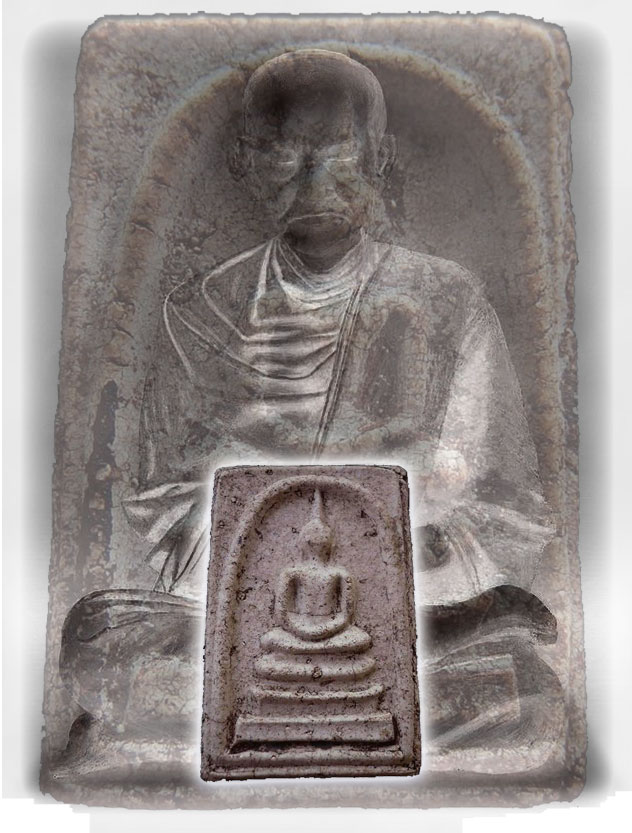
Somdej Pra Puttajarn (Dto) Prohmrangsri Wat Sadter Amulets
Somdej Toh’s dedication to his monastic studies was evident in his rapid acquisition of knowledge and the high praise he received from his teachers, including the venerable Sangkharat Suk. He embraced ascetic practices, adhering strictly to the traditional dhutanga, which included eating only from his alms bowl, possessing a mere three robes, and engaging in meditative practices in secluded and often challenging environments such as cemeteries. Despite his profound understanding of Buddhist scriptures, he initially displayed a notable disinterest in pursuing high monastic ranks during the reign of King Rama III, preferring the simple designation of “Phra Maha To”.
Phra Somdej: Unveiling the Secrets of Thailand’s “King of Amulets” Download Link
This reluctance to seek worldly recognition for his spiritual achievements underscores his focus on inner development. However, the reign of King Rama IV marked a turning point. The King held Somdej Toh in great esteem, and in 1852 (B.E. 2395), at the age of 65, bestowed upon him his first official monastic title, “Phra Thammakiti,” concurrently appointing him as the abbot of the historically significant Wat Rakhang. His ascent within the Sangha continued, with promotions to “Phra Thep Krawee” in 1854 (B.E. 2397) and ultimately to the highest monastic rank of “Somdej Phra Phutthachan” in 1864 (B.E. 2407). Somdej Toh’s initial resistance to formal titles, followed by his eventual acceptance and rapid progression under King Rama IV, reveals a nuanced relationship with authority. It suggests a leader who prioritized spiritual practice yet recognized the potential to serve the Buddhist community more effectively from a position of influence, particularly under the patronage of a supportive monarch.
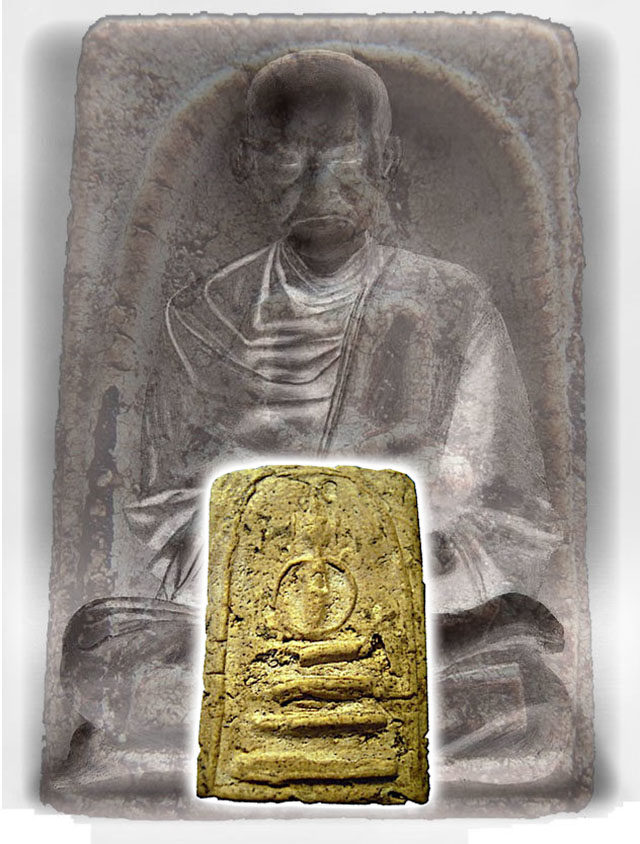
Somdej Dto with the famous Pra Somdej Gang Pla amulet of the Kru Tap Khaw Hiding Place Find
Somdej Toh’s contributions to Buddhism extended far beyond his administrative roles. He was widely celebrated as an exceptional preacher and teacher of the Dharma, considered unparalleled in the Siam of his time, and known for his distinctive and engaging teaching methods. A significant aspect of his legacy is his rediscovery and popularization of the Chinabanchorn Katha, a powerful Buddhist prayer. Recognizing the ancient text’s profound spiritual efficacy, he adapted and simplified it, making it more accessible for contemporary recitation by the laity. Furthermore, Somdej Toh was a driving force behind the construction and restoration of numerous temples and Buddha images across Thailand. His patronage extended to significant projects such as the massive Buddha image at Wat Intharawihan (Wat Bangkhunprom Nai) in Bangkok, the revered reclining Buddha at Wat Satoe in Ayutthaya, and the large Buddha image at Wat Chaiyo in Ang Thong. His life, dedicated to the propagation and preservation of Buddhist teachings and sacred sites, came to a close in 1872 (B.E. 2415) during the reign of King Rama V, at the venerable age of 84. Somdej Toh’s multifaceted contributions as a teacher, builder, and spiritual leader underscore his profound dedication to the flourishing of Buddhism in Thailand, placing the creation of Phra Somdej within the broader context of his remarkable life and work.
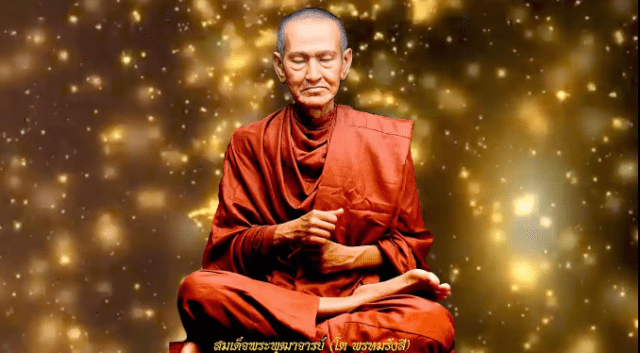
Somdej Pra Puttajarn (Dto) Prohmrangsri Wat Rakang Kositaram
The origins of Phra Somdej Wat Rakhang are deeply rooted in the history and sanctity of Wat Rakhang Khositaram Woramahawihan itself. The temple’s history traces back to the Ayutthaya period, where it was originally known as Wat Bang Wa Yai, situated in proximity to Wat Bang Wa Noi (later known as Wat Amarinthraram). Its status was elevated during the Thonburi period under King Taksin, who established his royal palace near the temple, recognizing its importance and bestowing upon it the status of a royal temple. A significant event in the temple’s history occurred during the reign of King Rama I in the early Rattanakosin period. An ancient bell with a particularly melodious sound was discovered within the temple grounds. This discovery led to the temple being renamed Wat Rakhang, meaning “Temple of the Bell”. King Rama I, recognizing the bell’s unique quality, had it moved to Wat Phra Si Rattana Satsadaram but compensated Wat Rakhang by commissioning five new bells for the temple. Wat Rakhang also enjoyed the patronage of King Rama I’s sister, Princess Thepsudawadi, who, along with the King, oversaw significant restoration efforts at the temple. Further highlighting its religious significance, Wat Rakhang served as a primary residence for the Supreme Patriarch during the early Rattanakosin period, with Somdej Sangkharat Si holding the distinction of being the first Supreme Patriarch of Bangkok to reside there. The temple’s deep historical roots and its close association with the early Rattanakosin dynasty underscore its pivotal role in the religious and political landscape of the time, establishing it as a sacred and historically significant location.
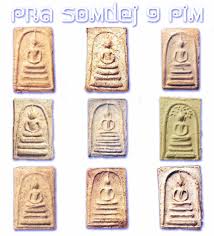
The connection between Somdej Phra Phutthachan (To) and Wat Rakhang solidified when he was appointed as the sixth abbot of the temple in 1852 (B.E. 2395) during the reign of King Rama IV. His tenure as abbot is widely regarded as a golden era for Wat Rakhang, a period marked by his profound spiritual influence and, most notably, the creation of the Phra Somdej amulet. Even before Somdej Toh’s abbacy, Wat Rakhang housed significant structures with royal connections, such as the Ho Phra Trai Pidok (Tripitaka Hall). This hall, a beautiful example of Thai architecture, was originally King Rama I’s residence during the Thonburi period before being moved to Wat Rakhang and renovated at his command to serve as the temple’s scripture hall. The murals adorning the interior of this hall are particularly noteworthy for their artistic and historical value. The strong and enduring association between Somdej Toh and Wat Rakhang is perhaps best exemplified by his popular appellation, “Somdej Wat Rakhang”. This almost synonymous relationship underscores the temple as the central stage for his most significant contributions, with his long period as abbot firmly cementing this connection in the collective memory and highlighting Wat Rakhang as the birthplace of the revered Phra Somdej legend.
The genesis of the Phra Somdej Wat Rakhang legend is attributed to Somdej Toh’s inspiration drawn from the ancient traditions of Buddhist monks who created amulets as a means to preserve and propagate the teachings of the Buddha. These venerable practices often involved embedding sacred objects within the structures of pagodas and other religious monuments. It is also believed that Somdej Toh’s inspiration may have been kindled by his discovery of ancient amulets during a visit to his relatives in Kamphaeng Phet around 1849 (B.E. 2392), a city renowned for its rich history of producing sacred amulets. His primary motivation in creating the Phra Somdej was to provide a tangible spiritual anchor for people, guiding them towards virtuous actions and away from harmful ones, while also encouraging the practices of prayer and adherence to the principles of the Eightfold Path. The very form of the Phra Somdej, a rectangular tablet featuring an image of the Buddha, is seen by many as a symbolic representation of Buddhist cosmology, with the earth as the foundation and the Buddha figure embodying enlightenment. Additionally, historical accounts suggest that some Phra Somdej amulets were created to commemorate specific auspicious occasions or as tokens of gratitude for donors who provided financial support for various temple projects. The diverse motivations behind the creation of Phra Somdej reveal a multifaceted intention, encompassing the preservation of Buddhist heritage, the provision of moral and spiritual guidance, and the practical needs of the temple community.

Wat Rakang Kositaram Woramahaviharn Temple, in Bangkok.
The creation of Phra Somdej Wat Rakhang was not a singular event but rather a process that unfolded over several distinct periods, generally categorized as the early, middle, and late eras. These periods roughly correspond to the reigns of Kings Rama III, IV, and V, although some historical accounts suggest an even earlier commencement of amulet production during the reign of King Rama II, around 1812 (B.E. 2355). The early period, likely during the reign of King Rama III, saw the creation of Phra Somdej using simpler molds, possibly crafted by local artisans or even by Somdej Toh himself. These early amulets often exhibit a less refined appearance compared to later examples, lacking the sharp definition and intricate details that would become characteristic of subsequent molds. The middle period, coinciding with the reign of King Rama IV, witnessed the development of more refined molds and a greater variety of designs. It was during this time that the iconic Phim Prok Pho (Bodhi Leaf Covered Mold) is believed to have been introduced. The late period, occurring during the reign of King Rama V, is notable for the involvement of Luang Vicharn Chearanai, a royal goldsmith, who crafted more elaborate and standardized molds. This is particularly significant around 1866 (B.E. 2409), with the ambitious intention of producing 84,000 Phra Somdej amulets. The extended timeline of Phra Somdej’s creation and the evolution of the molds employed reflect a gradual refinement in both the amulet’s form and its perceived significance. The engagement of a royal artisan in the later period underscores the increasing prestige and importance of the amulet, aligning with Somdej Toh’s own growing stature within the religious and royal spheres. The intended large-scale production in the later years suggests a burgeoning demand and widespread recognition of the amulet’s spiritual power and cultural value.
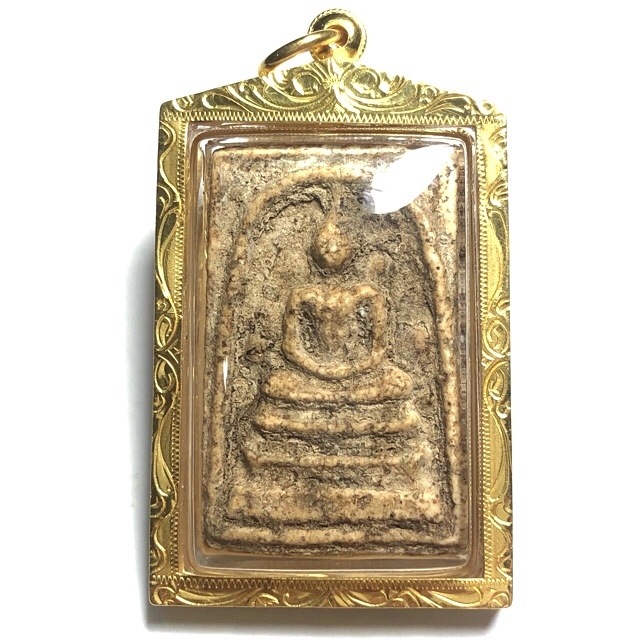
Phra Somdej Wat Rakhang Kes Talu Sum
The creation of Phra Somdej Wat Rakhang involved a meticulous selection and combination of sacred materials, each imbued with its own spiritual significance and often sourced from revered locations. The primary binding agent and a key component of the amulet’s substance was white lime, derived from the burning of seashells. Various types of lime, including limestone and “poon phet” (diamond lime), were also incorporated into the mixture. Central to the spiritual potency of Phra Somdej are the five sacred powders, collectively known as Pong Wised Ha Praphet. These include Pong Pathamang, believed to confer invulnerability; Pong Itthije, associated with popularity and kindness; Pong Maharach, thought to bestow authority and power; Pong Phutthakhun, representing general merit and the virtues of the Buddha; and Pong Trinisinghe, known for its power to attract and charm. The creation of these powders was a ritualistic process, involving the inscription and erasure of sacred formulas on slate boards, often performed within the consecrated space of the temple’s main prayer hall. In addition to these core ingredients, other sacred materials were commonly included, such as burnt rice collected from the bottom of Somdej Toh’s alms bowl, various types of sacred soils gathered from seven forests, seven salt licks, and the pillars of important cities, pollen from 108 different types of flowers, and fragments of old, broken amulets, including those from the historically significant amulet-producing region of Kamphaeng Phet. The careful and deliberate selection of these diverse materials, each carrying its own symbolic weight and perceived spiritual power, underscores the profound intention behind the creation of Phra Somdej Wat Rakhang. The inclusion of substances from revered sites and fragments of previous sacred objects suggests a desire to amplify the amulet’s spiritual efficacy and connect it to a broader lineage of sacred power.
To bind these diverse materials together, Somdej Toh employed natural binding agents such as tang oil (tung oil), honey, and mashed banana 33. Sugar cane juice was also occasionally used as a binding agent. Furthermore, the amulets often contained other significant items that held personal and spiritual meaning, such as remnants of saffron robes worn by monks, fragrant incense ash collected from temple altars, and even food offered to monks, particularly leftover rice and ripe bananas that Somdej Toh himself would dry and grind into the mixture. Less common but still notable ingredients included paper pulp, derived from soaking straw or mulberry paper, betel nut residue from Somdej Toh’s own chewing, and various types of auspicious woods and medicinal herbs believed to possess protective and beneficial properties. The inclusion of these everyday items, particularly those directly associated with Somdej Toh’s personal practices and the temple’s rituals, suggests a deep and intimate connection between the creator and the creation of the amulets. It reinforces the notion that the sacredness of Phra Somdej originates not solely from rare or exotic materials but also from the blessings, intentions, and personal touch of Somdej Toh, imbuing even seemingly mundane substances with spiritual significance through his dedication and prayers.
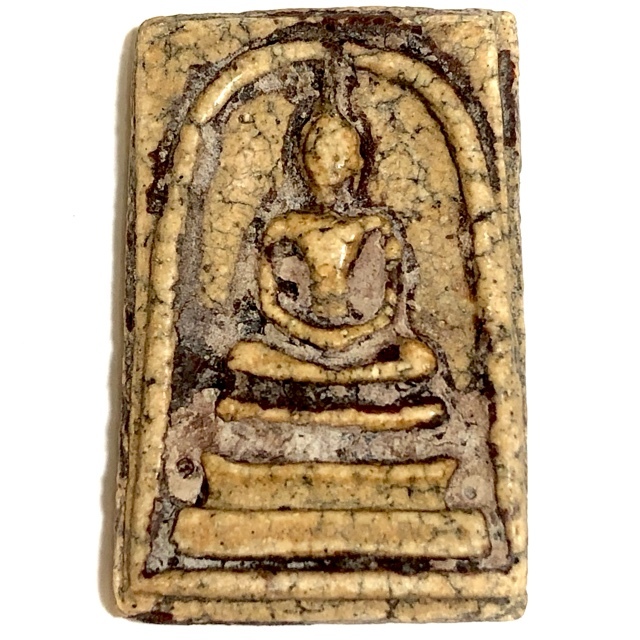
The traditional process of crafting Phra Somdej Wat Rakhang was a hands-on and deliberate undertaking, reflecting the personal involvement of Somdej Toh in the creation of these sacred objects. The various sacred materials and binding agents were meticulously mixed and pounded together in a mortar until they formed a cohesive, clay-like substance. This mixture was then carefully shaped into rectangular tablets, often referred to as “chin fak,” a term that likens their form to pieces of winter melon. These tablets were subsequently pressed firmly into molds, which were typically made of slate, stone, or occasionally wood. After pressing, the edges of the amulets were meticulously trimmed into a neat rectangular shape using a thin, sharp bamboo tool traditionally employed for the delicate art of weaving flowers. To ensure the clay filled the mold completely and to eliminate any air pockets, a flat wooden board was often placed behind the mold, and gentle tapping with another piece of wood or a hard object was applied to the back. This relatively simple yet careful creation process underscores the personal dedication and intention that Somdej Toh invested in each Phra Somdej amulet. The direct connection between the revered monk and the crafting of these sacred objects likely contributed significantly to their subsequent revered status and the strong belief in their inherent sacredness.
Beyond the physical creation, the spiritual efficacy of Phra Somdej Wat Rakhang is deeply attributed to the rituals and blessings bestowed upon them by Somdej Toh himself. It is widely believed that Somdej Toh personally blessed each amulet through his extensive meditative practices and the recitation of powerful sacred incantations. A particularly significant aspect of these blessings was the prominent use of the Chinabanchorn Katha, the powerful Buddhist prayer that Somdej Toh had popularized. This Katha is believed to imbue the amulets with profound protective qualities, safeguarding the wearer from harm and misfortune. Historical accounts also describe Somdej Toh placing the newly created amulets in bowls or baskets within the temple’s main prayer hall, positioning them in front of sacred Buddha images, and connecting them with a sacred thread known as “sai sin.” This thread was believed to channel the blessings and sacred vibrations emanating from the Buddha images to the amulets during monastic chanting sessions. Notably, Phra Somdej amulets were primarily created for distribution directly to devotees as acts of merit and spiritual guidance, rather than being stored or buried within temple crypts. It is estimated that Somdej Toh created a vast number of these amulets, potentially as many as 84,000, a figure that aligns with the traditional number of teachings within the Buddhist canon. The direct involvement of Somdej Toh in both the creation and the blessing of Phra Somdej, particularly through the powerful Chinabanchorn Katha, is central to their perceived efficacy and sacredness. The act of personally distributing them to devotees further emphasizes their intended purpose as objects of faith, protection, and spiritual benefit for the wider community.

Phra Somdej Wat Rakhang is not a monolithic entity but rather exists in several distinct forms, known as Phim (molds), each possessing its own unique characteristics and often associated with different periods of creation. The five widely recognized standard molds, revered by collectors and devotees alike, are Phim Yai (พิมพ์ใหญ่), Phim Song Chedi (พิมพ์ทรงเจดีย์), Phim Ket Bua Toom (พิมพ์เกศบัวตูม), Phim Than Saem (พิมพ์ฐานแซม), and Phim Prok Pho (พิมพ์ปรกโพธิ์) 31. These different molds not only represent variations in artistic style but also potentially reflect the evolution of the amulet’s design and production over time. The existence of these distinct forms underscores a deliberate artistic and possibly symbolic progression in the creation of Phra Somdej, providing a rich tapestry of visual diversity for those who study and collect these sacred objects.
The Phim Yai (พิมพ์ใหญ่), translating to “Grand Mold” or “Principal Mold,” holds the distinction of being the most popular and highly regarded among the five main Phim. It is often referred to as the “Phim Pra Prathan,” signifying its representation of the Principal Buddha Image. The general characteristics of Phim Yai include a depiction of the Buddha seated in a cross-legged meditative posture atop a three-tiered base. Early examples of this mold often lack intricate facial details 54. However, later iterations, particularly those attributed to the royal goldsmith Luang Vicharn Chearanai, tend to exhibit more defined features. Within the Phim Yai category, several variations exist, most notably differences in the style of the Buddha’s chest, classified as Ok Wi (อกวี – V-chest) and Ok Krabok (อกกระบอก – cylindrical chest), as well as the presence or absence of a subtle horizontal line beneath the Buddha’s lap, known as Sen Saem Tai Na Tap (เส้นแซมใต้หน้าตัก). Experts in the field have further identified up to four distinct sub-variations within the Phim Yai mold, based on minute differences in the lines, curves, and overall proportions of the Buddha figure and the surrounding arch. The existence of these numerous variations within the Phim Yai mold suggests a continuous process of refinement and evolution of this most popular design. These subtle distinctions are highly valued by collectors and serve as crucial identifiers for determining the authenticity and approximate age of individual Phim Yai amulets, reflecting the deep level of scrutiny and nuanced understanding applied to this primary mold by amulet enthusiasts.
The Phim Song Chedi (พิมพ์ทรงเจดีย์), translating to “Chedi Shaped Mold” or “Stupa Shaped Mold,” is characterized by the depiction of a stupa-like structure (chedi) situated above the image of the Buddha. This chedi symbolizes the relics and the teachings of the Buddha, adding a distinct symbolic layer to this particular mold. Notably, the size of Phim Song Chedi amulets can vary; some examples are larger than certain variations of the Phim Yai, while others are smaller and referred to as Phim Yom (พิมพ์ย่อม – smaller version). Specific identifying features of this mold include a smaller and more slender arch (Sen Sum Krop Kaew – เส้นซุ้มครอบแก้ว) compared to the Phim Yai, and a pointed tip on the second tier of the base, often referred to as “Hua Rua Iam Chun,” a term that evocatively describes its resemblance to the prow of a small traditional boat. The distinctive chedi shape clearly distinguishes this mold, while the variations in size and the specific details of the arch and base provide further characteristics for identification and appreciation by collectors.
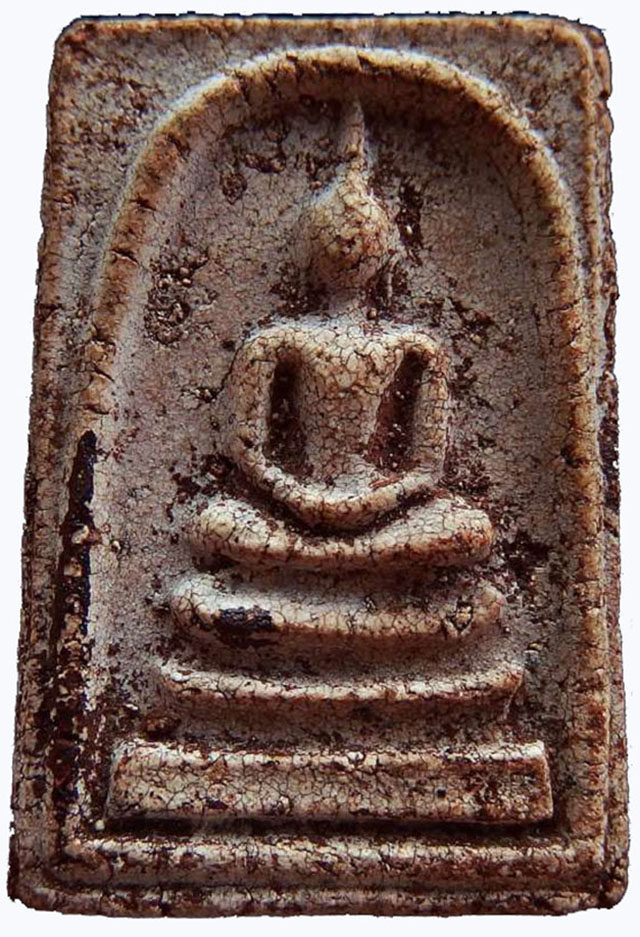
The Phim Ket Bua Toom (พิมพ์เกศบัวตูม), translating to “Lotus Bud Topknot Mold,” is readily identifiable by the distinctive lotus bud-shaped topknot (Yot Ket Muean Bua Toom – ยอดเกศเหมือนบัวตูม) that adorns the Buddha’s head. This lotus bud shape is a powerful symbol of purity and the potential for spiritual enlightenment within Buddhism. Amulets of this mold often feature a thicker and more rounded arch (Sen Sum Krop Kaew) surrounding the Buddha figure, and the earlobes (Phra Kan – พระกรรณ) sometimes exhibit an outward curve, resembling the graceful shape of “Bai Sri,” traditional ceremonial decorations, adding an element of elegance to the overall design. Within the Phim Ket Bua Toom category, variations exist, most notably the “Than Singh Kwang” (ฐานสิงห์กว้าง – wide lion base) and “Than Singh Khaep” (ฐานสิงห์แคบ – narrow lion base). These terms refer to the shape and width of the second tier of the base, which is designed to resemble the paws of a lion, a symbol of strength and majesty. The unique lotus bud topknot and the variations in the base design, along with the distinctive arch and earlobes, contribute to the aesthetic diversity and symbolic richness of the Phim Ket Bua Toom mold, making it a cherished form among collectors and devotees.
The Phim Than Saem (พิมพ์ฐานแซม), translating to “Layered Base Mold,” is characterized by the presence of additional, smaller tiers (Than Saem – ฐานแซม) that are inserted between or below the main three-tiered base of the Buddha image. These “saem” tiers often appear as subtle protrusions or additions to the standard base structure. Compared to the more robust figures found in other Phim, the Buddha figure in the Phim Than Saem generally exhibits a more slender and elegant artistic style. Variations within this mold include differences in the number and prominence of the “saem” tiers, with some amulets displaying more pronounced additions than others 63. The layered base is believed by many to carry symbolic meaning related to the different levels of Buddhist teachings or stages of spiritual attainment, representing a more complex and nuanced understanding of Buddhist philosophy. The variations observed in the “saem” tiers may reflect differences in the mold’s origin or intended symbolism, possibly representing specific interpretations of Buddhist principles or the artistic preferences of the mold maker.
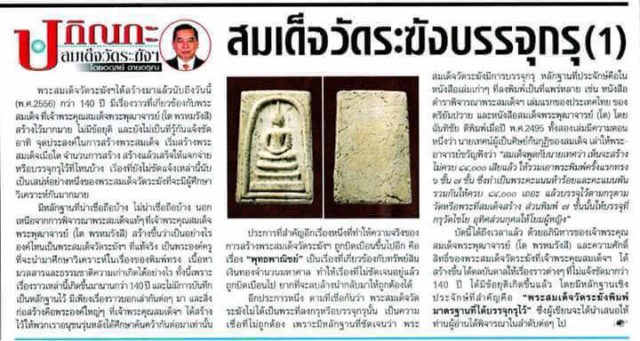
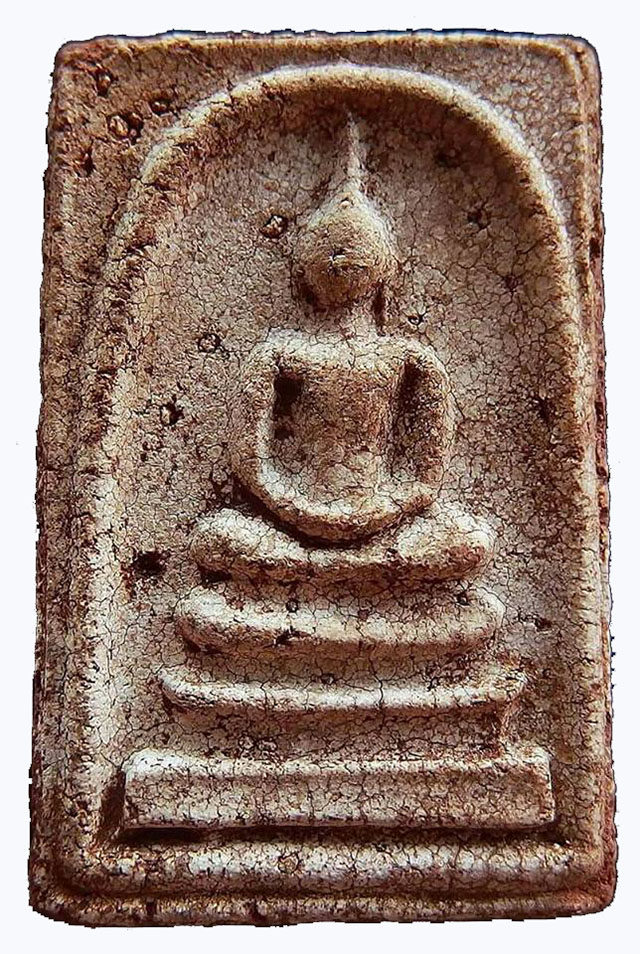
The Phim Prok Pho (พิมพ์ปรกโพธิ์), translating to “Bodhi Leaf Covered Mold,” is distinguished by the depiction of Bodhi leaves (Bai Pho – ใบโพธิ์) that surround the image of the Buddha 29. These leaves directly reference the pivotal moment of the Buddha’s enlightenment under the Bodhi tree, making this mold particularly symbolic of spiritual awakening. Variations exist in the number of leaves depicted, with common arrangements including six, seven, eight, or nine leaves on each side of the Buddha figure. Some interpretations associate the number of leaves with the age of Somdej Toh during the time the amulet was created. Notably, this mold sometimes appears in combination with other characteristic features, such as a layered base (Phim Than Saem) or a lotus bud topknot (Phim Ket Bua Toom), blending symbolic elements from different mold types. The inclusion of the Bodhi leaves directly links the amulet to the foundational narrative of Buddhism, while the variations in leaf number and the combination with other mold features add layers of symbolic meaning and artistic diversity to this revered form.

The legend of Phra Somdej Wat Rakhang is further enriched by a multitude of stories, legends, and perceived miracles associated with the amulet, illustrating its profound impact on the lives and faith of devotees. Numerous accounts exist of individuals who have miraculously survived accidents, recovered from severe illnesses such as cholera, and escaped other life-threatening dangers, all attributed to the protective power and sacred blessings of Phra Somdej. One particularly well-known tale recounts the story of a woman named Thup who, during a major cholera epidemic in Bangkok in 1873 (B.E. 2416), made a remarkable recovery after consuming water that had been blessed by a Phra Somdej amulet. The amulet is also widely believed to offer potent protection against black magic, malevolent spirits, and various forms of negative energies and curses. These narratives of miraculous protection and recovery are central to the amulet’s enduring legendary status, fueling the unwavering faith of those who venerate it. They transform the Phra Somdej from a mere religious artifact into a tangible source of spiritual intervention and a powerful symbol of hope and resilience in the face of life’s challenges.
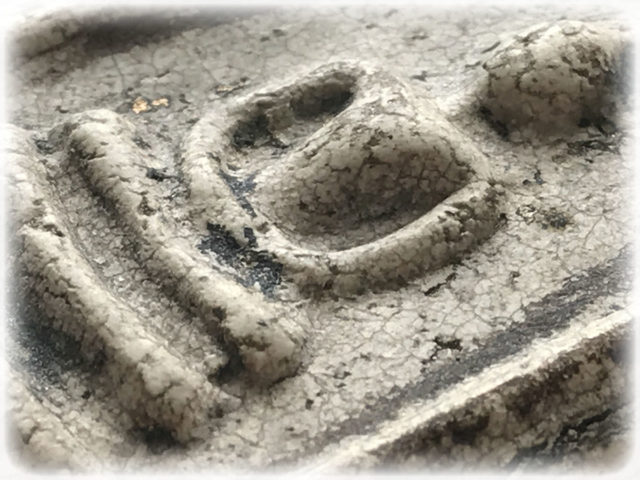
Beyond protection, Phra Somdej Wat Rakhang is strongly associated with the power of Metta, or loving-kindness. It is a widespread belief that possessing and venerating the amulet fosters loving-kindness within the wearer, attracting kindness, assistance, and popularity from those around them. Furthermore, the amulet is believed to bring good fortune, facilitate career advancement, promote financial success, and contribute to overall prosperity in life. Many devotees believe that Phra Somdej helps to attract positive opportunities and material wealth into their lives. The attribution of both protective qualities and the ability to attract Metta and prosperity highlights the multifaceted benefits associated with the amulet, extending its influence beyond safeguarding from harm into the realm of everyday well-being and aspirations for success and happiness. This dual appeal makes Phra Somdej Wat Rakhang a highly sought-after amulet for those seeking both spiritual and worldly blessings.
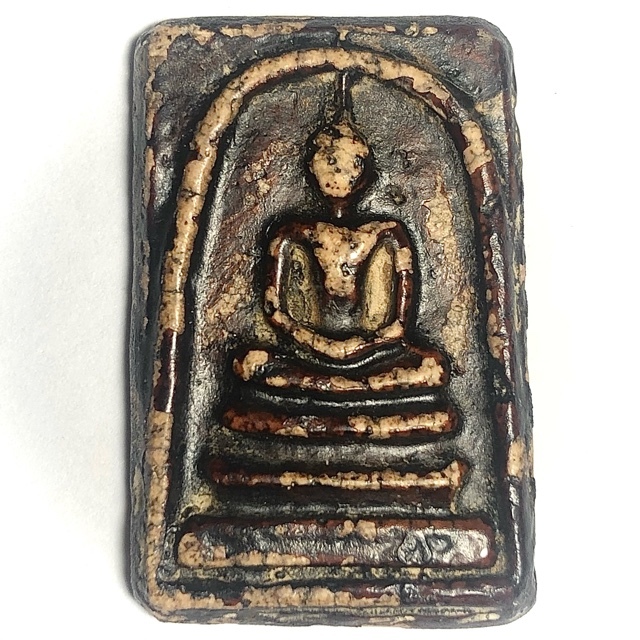
Adding to the rich tapestry of the Phra Somdej legend are the numerous personal experiences reported by devotees. Many individuals recount feeling a distinct sense of coolness, profound peace, or a tangible spiritual energy emanating from the amulet when they hold or wear it. These personal sensations are often interpreted as direct evidence of the amulet’s sacred power and its connection to Somdej Toh’s spiritual presence. Ultimately, the perceived power and efficacy of Phra Somdej Wat Rakhang are deeply personal and intrinsically linked to the individual’s faith, devotion, and adherence to Buddhist principles. These subjective experiences serve to strengthen the devotee’s connection to the amulet and its creator, solidifying their belief in its power and fostering a deeper sense of spiritual reassurance and connection to the sacred.
In conclusion, the legend of Phra Somdej Wat Rakhang stands as a testament to the enduring power of faith, the artistry of sacred objects, and the lasting legacy of a truly remarkable spiritual figure. Revered as the “King of Amulets,” Phra Somdej embodies not only the spiritual prowess of Somdej Phra Phutthachan (To) Phrommarangsi but also the rich history and deep-seated religious beliefs of Thailand. From the enigmatic details of Somdej Toh’s early life and his eventual rise to the highest echelons of the Sangha, to the sacred history of Wat Rakhang and the meticulous process of the amulet’s creation using a unique blend of sacred materials and blessed through potent rituals, the story of Phra Somdej is a captivating narrative. The diverse forms of the amulet, each with its distinct characteristics and symbolic nuances, and the countless stories of its perceived miracles, all contribute to its unparalleled status and enduring appeal. Phra Somdej Wat Rakhang remains more than just a religious artifact; it is a powerful symbol of faith, protection, artistry, and the enduring spiritual heritage of Thailand.
Table: Chronology of Somdej Phra Phutthachan (To) Phrommarangsi’s Life and Key Events
| Year (B.E.) | Year (C.E.) | Age | Key Event | Source Snippet(s) |
| 2331 | 1788 | 0 | Birth in Ayutthaya | 4 |
| 2343 | 1800 | 12 | Ordination as a novice in Phichit | 4 |
| 2350 | 1807 | 19 | Royal patronage for ordination | 6 |
| 2351 | 1808 | 20 | Royal ordination as a monk at Wat Phra Si Rattana Satsadaram | 4 |
| 2395 | 1852 | 65 | Appointed Abbot of Wat Rakhang and given the title Phra Thammakiti | 4 |
| 2397 | 1854 | 67 | Promoted to Phra Thep Krawee | 4 |
| 2407 | 1864 | 76 | Elevated to Somdej Phra Phutthachan | 4 |
| 2415 | 1872 | 84 | Passing | 6 |
Table: The Five Main Phim (Molds) of Phra Somdej Wat Rakhang and Their Key Characteristics
| Phim Name (Thai) | Phim Name (English Translation) | Defining Characteristics | Associated Symbolism | Source Snippet(s) |
| พิมพ์ใหญ่ | Grand/Principal Mold | Buddha seated in meditation, three-tiered base, variations in chest style and base details | Represents the Principal Buddha Image | 33 |
| พิมพ์ทรงเจดีย์ | Chedi/Stupa Shaped Mold | Stupa depicted above the Buddha, smaller arch, pointed tip on the second base tier | Symbolizes Buddhist monuments and the preservation of Dharma | 29 |
| พิมพ์เกศบัวตูม | Lotus Bud Topknot Mold | Lotus bud-shaped topknot, often thicker arch, earlobes resembling Bai Sri, variations in base (wide/narrow lion base) | Lotus bud symbolizes purity and enlightenment | 29 |
| พิมพ์ฐานแซม | Layered Base Mold | Additional smaller tiers inserted in or below the main base, more slender Buddha figure | Layered base may symbolize different levels of Buddhist teachings | 29 |
| พิมพ์ปรกโพธิ์ | Bodhi Leaf Covered Mold | Bodhi leaves surrounding the Buddha image, variations in the number of leaves, sometimes combined with other Phim features | Bodhi leaves symbolize the Buddha’s enlightenment | 29 |
Wat Rakang Kositaram
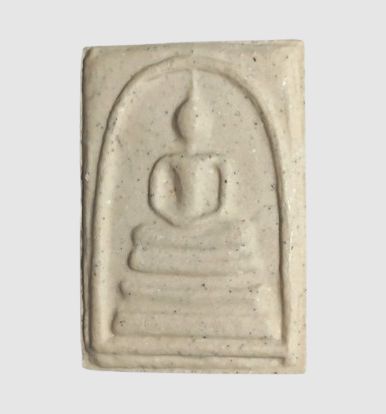
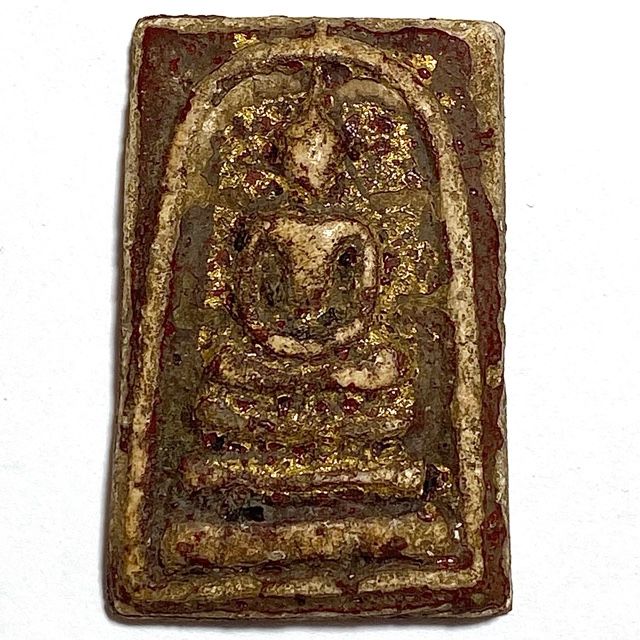
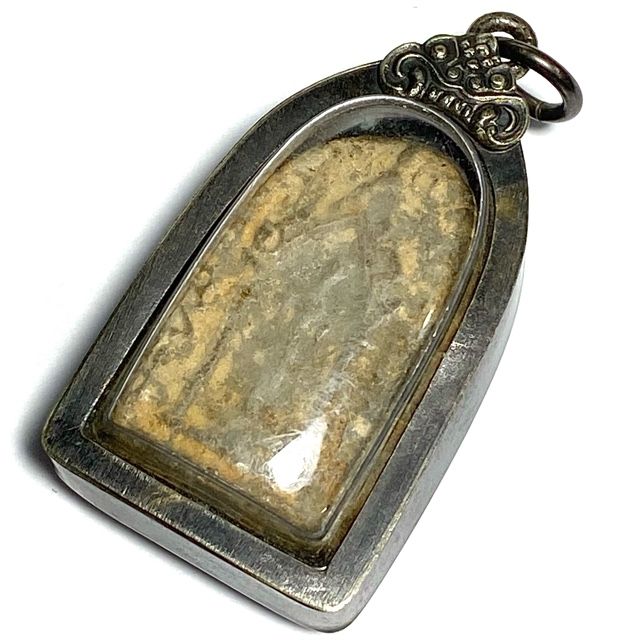
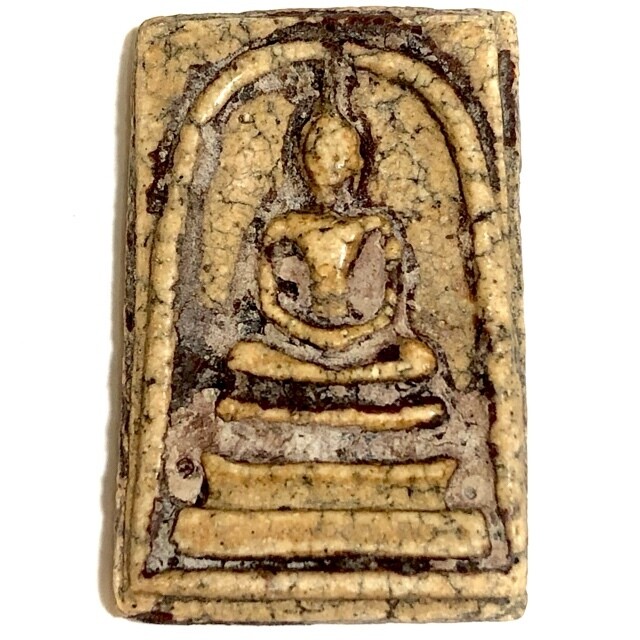
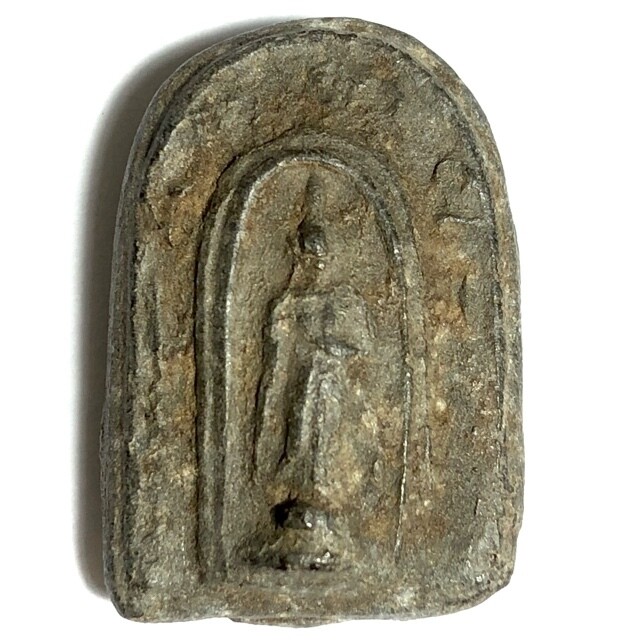
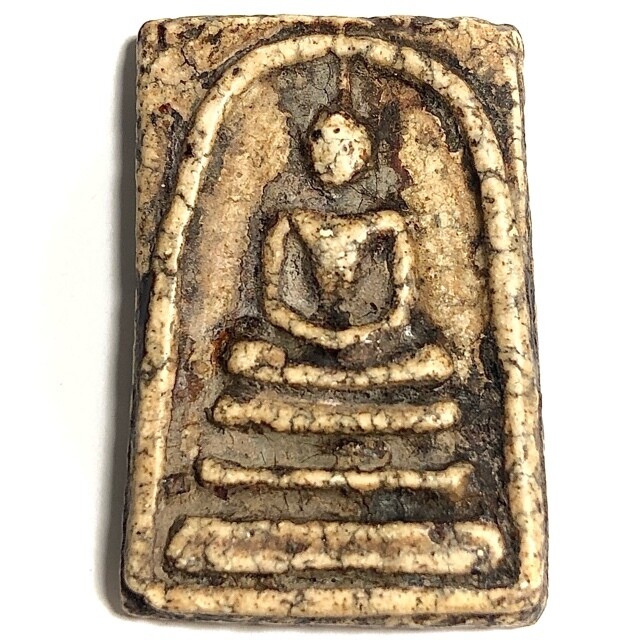
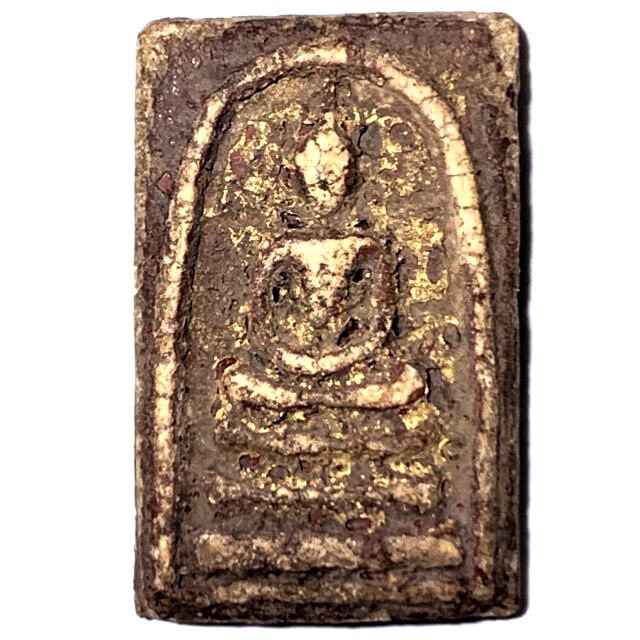
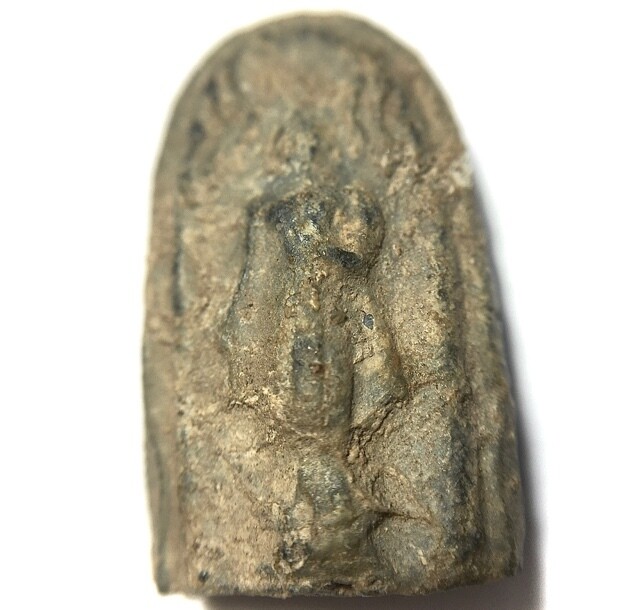
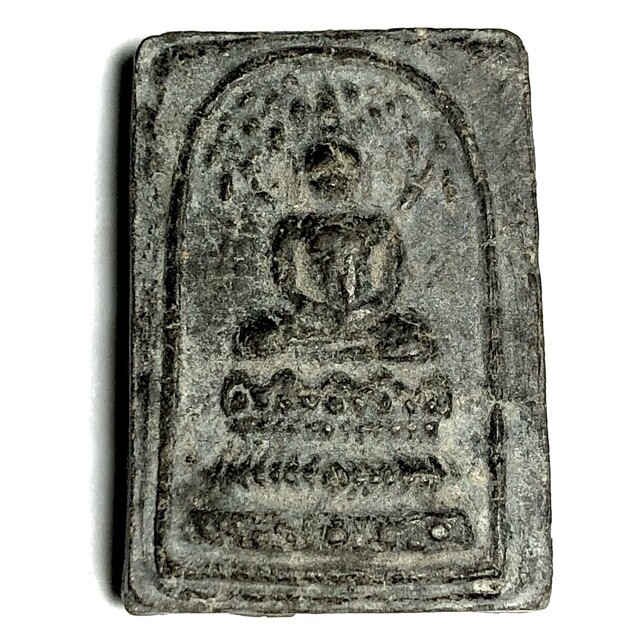
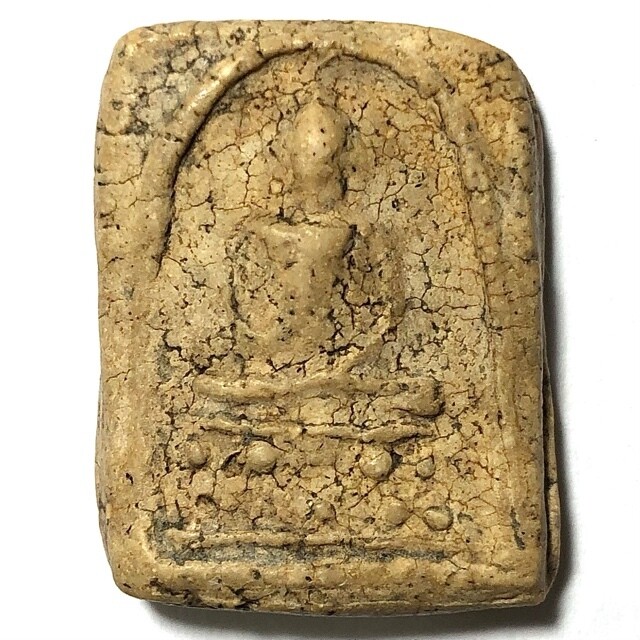
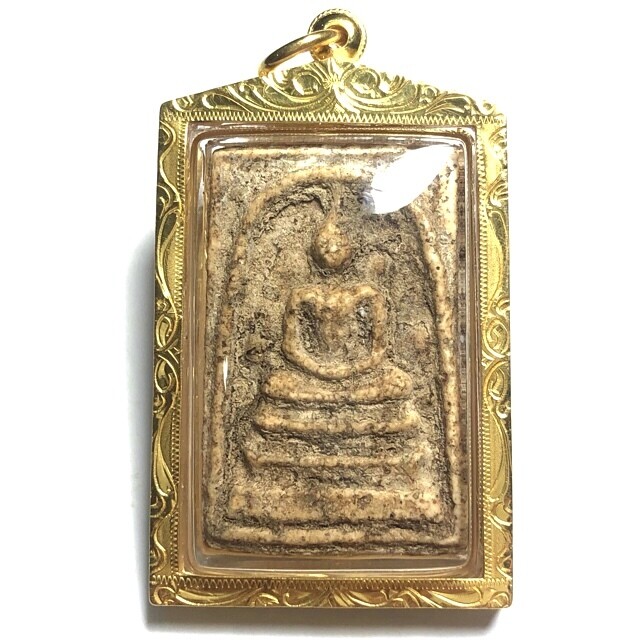
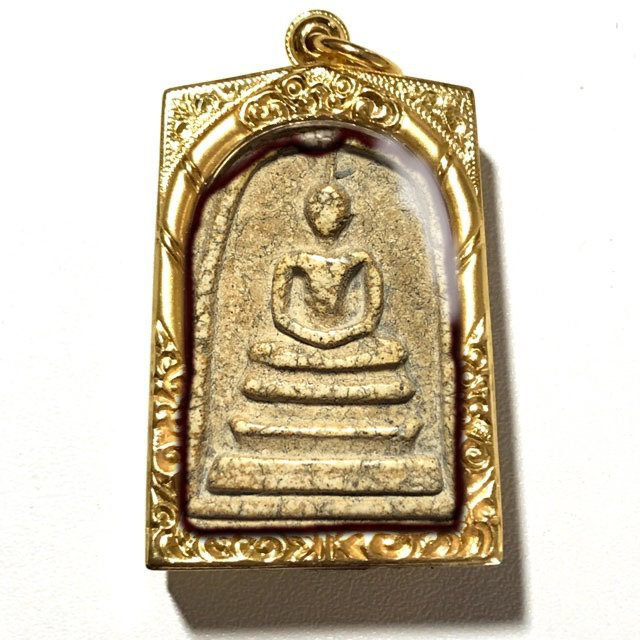

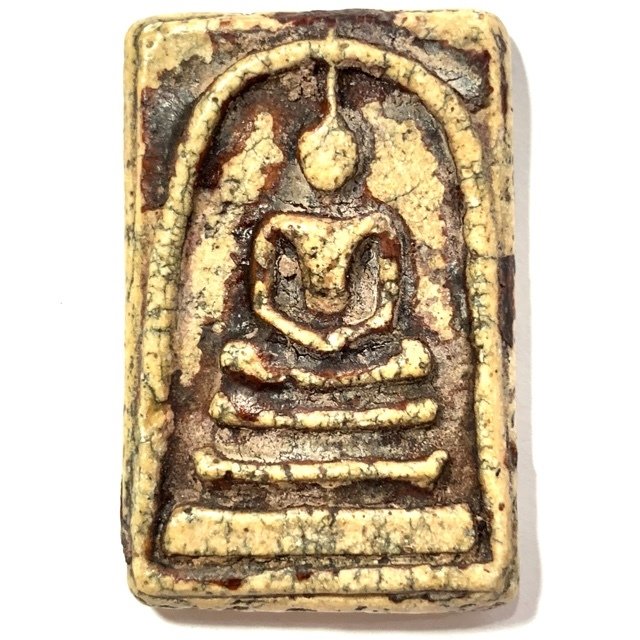
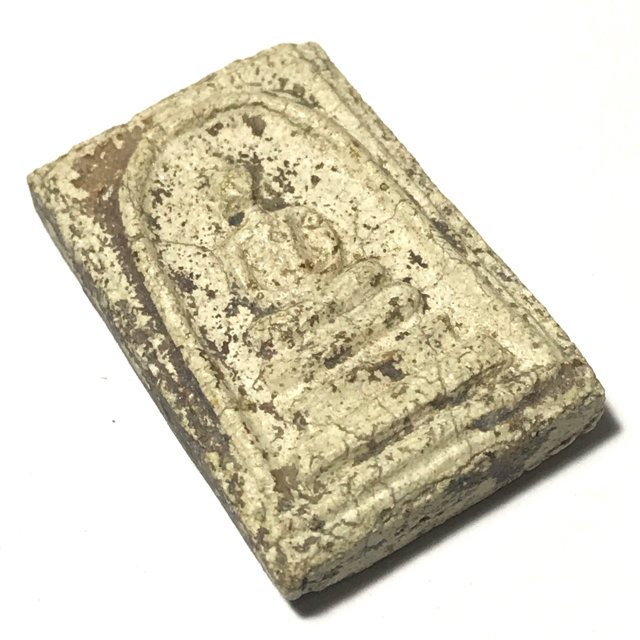
References and Works cited
-
- ปาฏิหาริย์ ตำนานพระสมเด็จ จักรพรรดิแห่งวงการพระเครื่อง | เรื่องเล่าหลังเที่ยงคืน EP.23 – YouTube, accessed March 24, 2025, https://www.youtube.com/watch?v=2CGmTRGZcRk
- ประวัติและความเป็นมา “พระสมเด็จ วัดระฆัง พิมพ์ใหญ่”, accessed March 24, 2025, https://www.acicertified.com/eventDetail/16
- 普拉崇迪 Pra Somdej Wat Rakhang- King of Thai Buddha Amulets – พระสมเด็จวัดระฆัง, accessed March 24, 2025, https://www.prasomdejwatrakang.com/000009.htm
- รำลึกประวัติ สมเด็จพระพุฒาจารย์ โต พรหมรังสี ผู้ค้นพบบทสวดล้ำค่า “คาถาชินบัญชร” – Sanook.com, accessed March 24, 2025, https://www.sanook.com/news/9499294/
- ประวัติสมเด็จโต ฉบับพระยาทิพโกษา | ชาติกำเนิดและอัจฉริยภาพในวัยเด็ก – YouTube, accessed March 24, 2025, https://www.youtube.com/watch?v=ueX4BUfTkPU
- ธรรมที่ไม่เหมือนใครของสมเด็จพระพุฒาจารย์ โต พรหมรังสี – Thai PBS, accessed March 24, 2025, https://www.thaipbs.or.th/program/TruthNeverDies/watch/CMSenz
- วัดระฆังโฆสิตารามวรมหาวิหาร ความสำคัญแห่งศาสนสถานคู่เมืองไทย …, accessed March 24, 2025, https://nippangift.com/watrakhang/
- วัดระฆังโฆสิตาราม วรมหาวิหาร เที่ยวกรุงเทพ ไหว้พระริมแม่น้ำจ้าพระยา วัด …, accessed March 24, 2025, https://travel.trueid.net/detail/6p8rVWVebM6
- วัดระฆังฯ ที่มีอะไรมากกว่าระฆัง | แม่มา พาชม EP.08 – YouTube, accessed March 24, 2025, https://m.youtube.com/watch?v=vPUeEBObcTc&pp=ygUcI-C5geC4oeC5iOC4oeC4suC4nuC4suC4iuC4oQ%3D%3D
- วัดระฆังโฆสิตารามวรมหาวิหาร – Papaiwat, accessed March 24, 2025, https://www.papaiwat.com/th/story/category/detail/id/8/iid/115
- วัดระฆังโฆสิตารามวรมหาวิหาร | Trip.com กรุงเทพฯ, accessed March 24, 2025, https://th.trip.com/moments/detail/bangkok-191-119996428/
- วัดระฆังโฆสิตาราม – สำนักงานราชบัณฑิตยสภา, accessed March 24, 2025, http://legacy.orst.go.th/wp-content/uploads/2018/04/01242561-%E0%B8%A7%E0%B8%B1%E0%B8%94%E0%B8%A3%E0%B8%B0%E0%B8%86%E0%B8%B1%E0%B8%87%E0%B9%82%E0%B8%86%E0%B8%AA%E0%B8%B4%E0%B8%95%E0%B8%B2%E0%B8%A3%E0%B8%B2%E0%B8%A1.pdf
- วัดระฆังโฆสิตารามวรมหาวิหาร – หอสมุด วัง ท่าพระ, accessed March 24, 2025, http://www.thapra.lib.su.ac.th/web-temple/index.php?option=com_content&view=article&id=15&Itemid=17
- พระสมเด็จวัดระฆังฯ ของสมเด็จพระพุฒาจารย์ (โต พรหมรังสี) – ศิลปวัฒนธรรม, accessed March 24, 2025, https://www.silpa-mag.com/culture/article_129508
- ข่าวภาพถ่ายเมื่อปี พศ. ๒๔๐๗ สมเด็จพระพุฒาจารย์ (โต พรหมรังสี) วัดระฆังโฆสิตารามวรมหาวิหาร, accessed March 24, 2025, https://monkhistory.kachon.com/362454
- พระอาจารย์นาค จิตรกรยุคสร้างบ้านแปงเมือง, accessed March 24, 2025, http://www.era.su.ac.th/Mural/nak/
- หอพระไตรปิฎกของวัดระฆังโฆสิตารามวรมหาวิหาร – สารานุกรมไทยสำหรับเยาวชนฯ, accessed March 24, 2025, https://kanchanapisek.or.th/sub/book/book.php?book=30&chap=2&page=t30-2-infodetail04.htm
- พระสมเด็จวัดระฆังฯ สุดยอดพระพิมพ์แห่งกรุงรัตนโกสินทร์ – Anurak Magazine, accessed March 24, 2025, https://anurakmag.com/sustainability/04/03/2023/phra-somdej-wat-rakhang-the-best-of-rattanakosin/
- พระสมเด็จวัดระฆังฯ พุทธคุณมากล้น ใครได้ครอบครอง โชคดีร่ำรวย – ไทยรัฐออนไลน์, accessed March 24, 2025, https://www.thairath.co.th/horoscope/belief/2830091

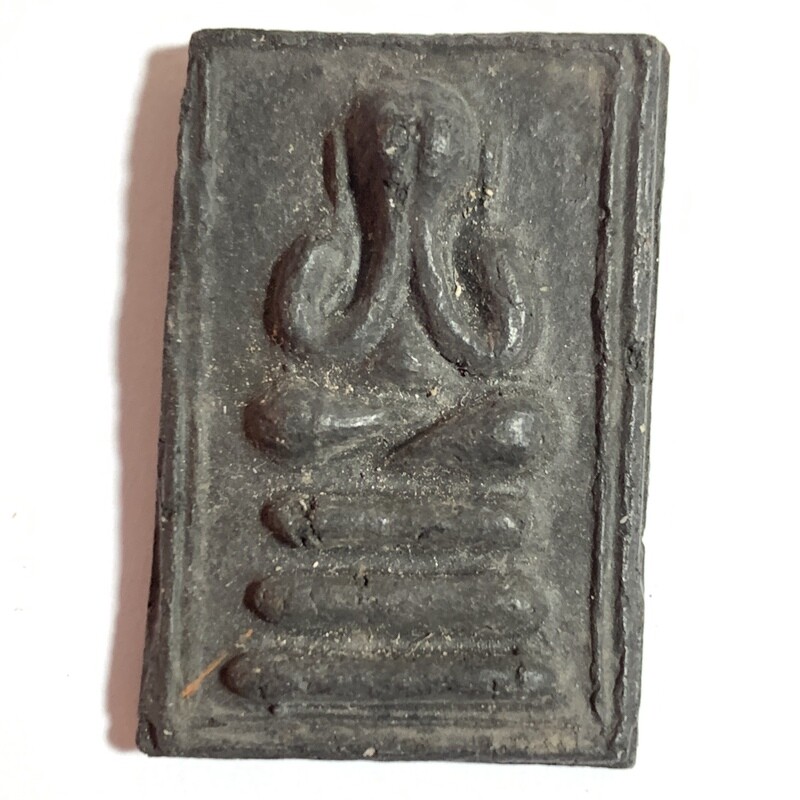
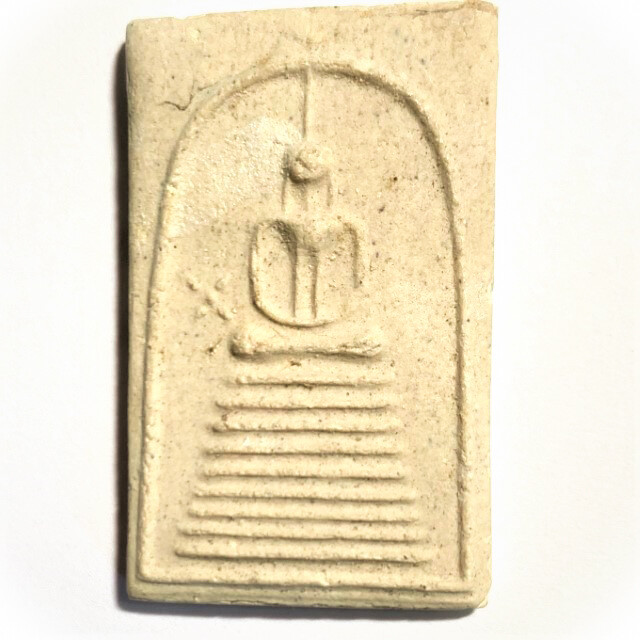
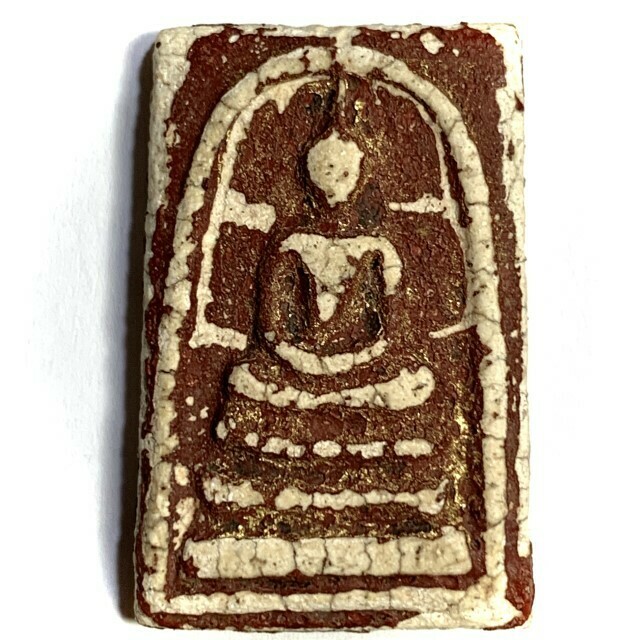
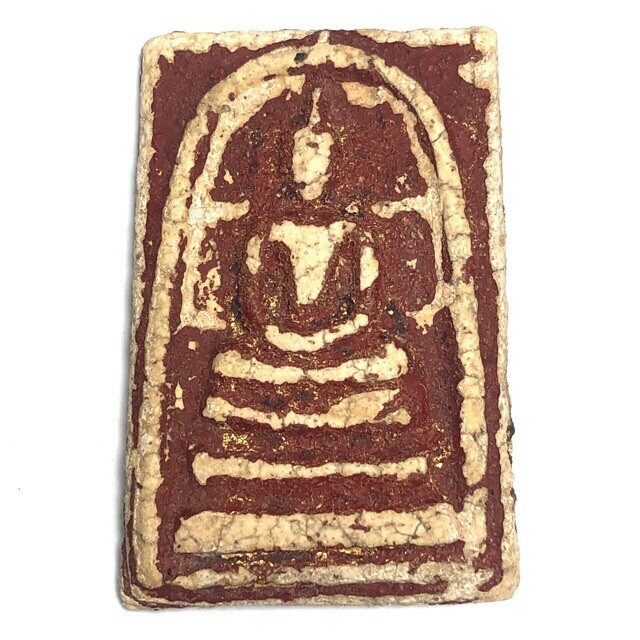

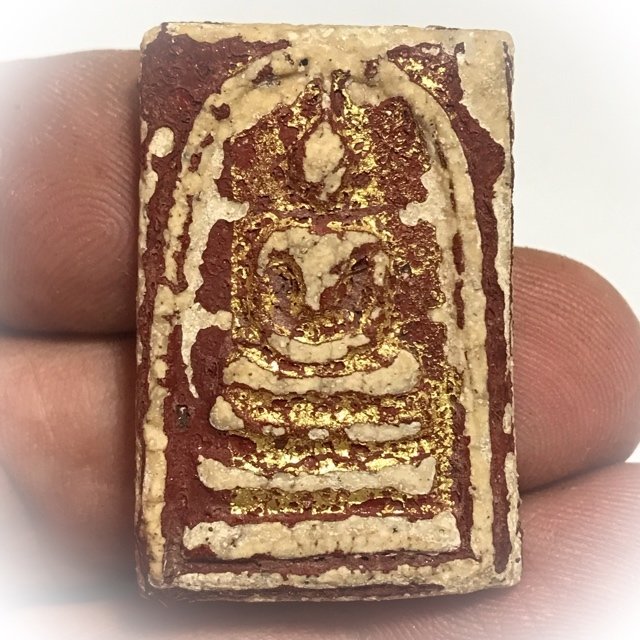
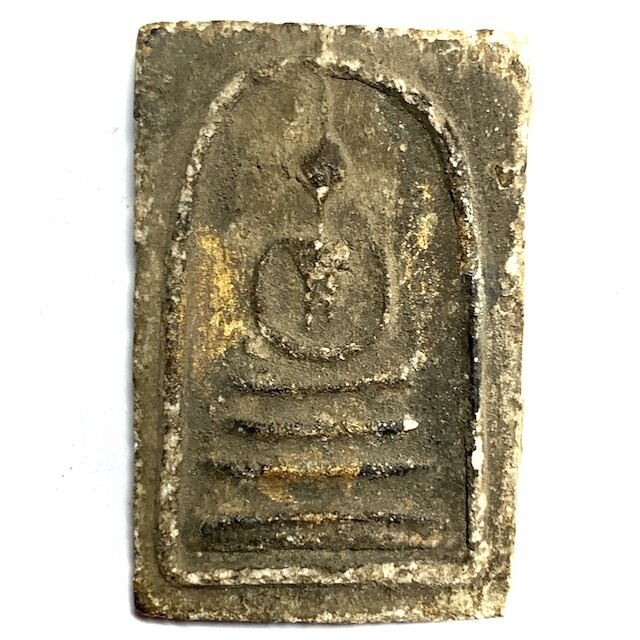
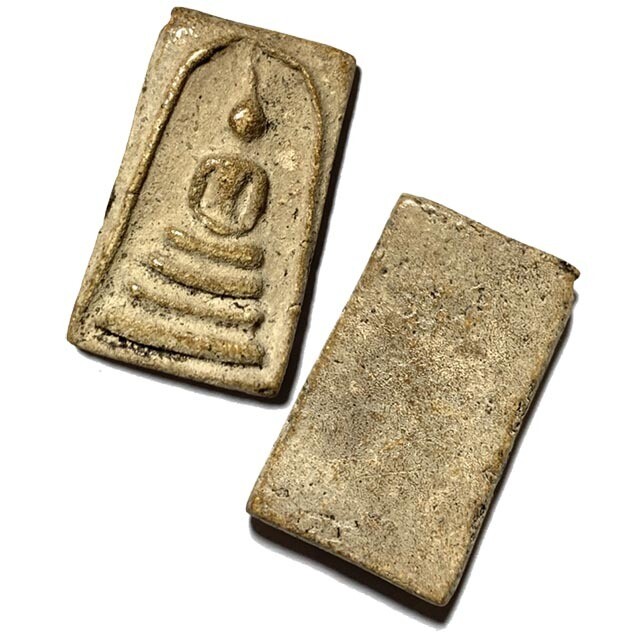
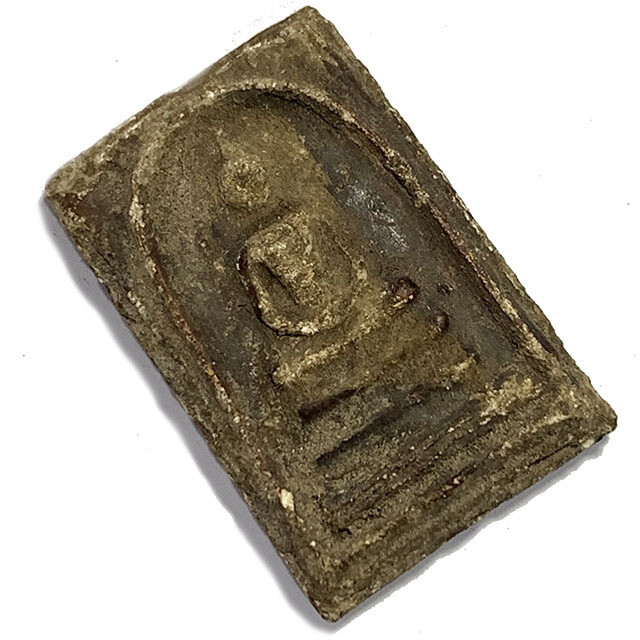
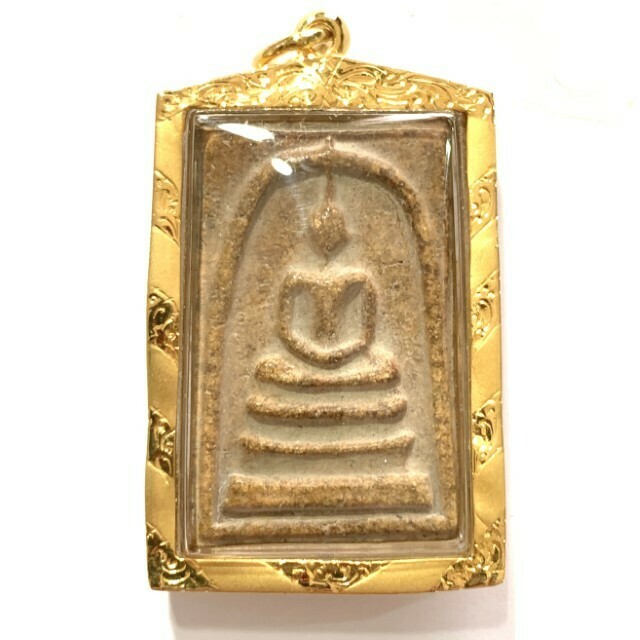
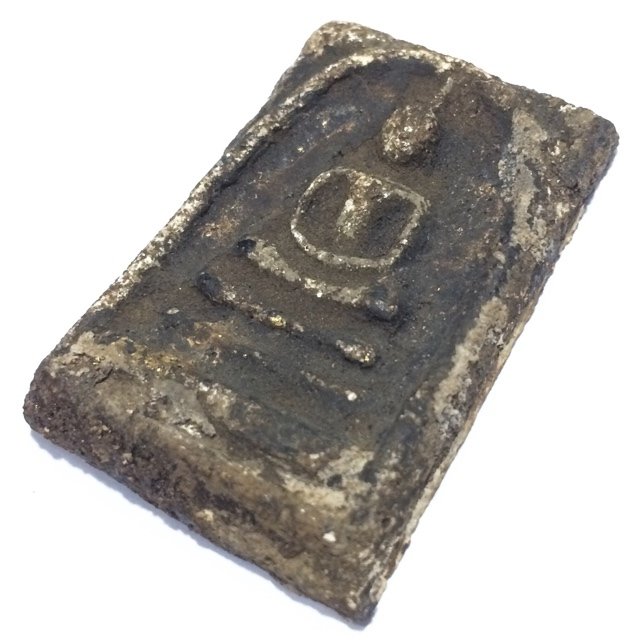
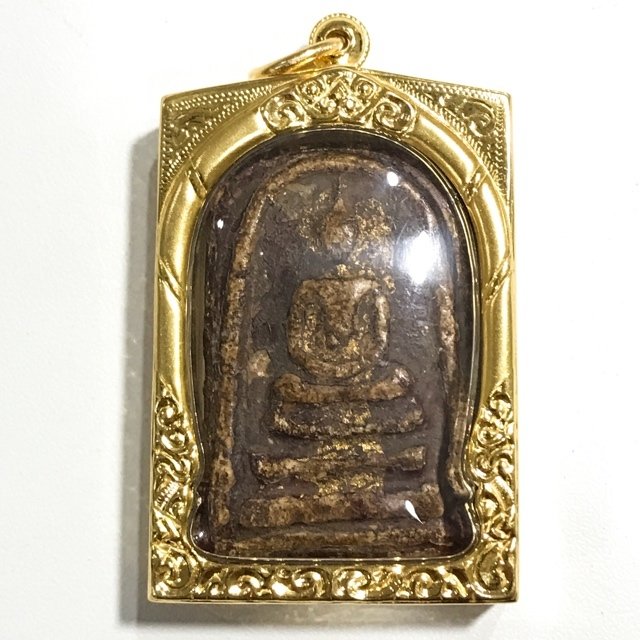
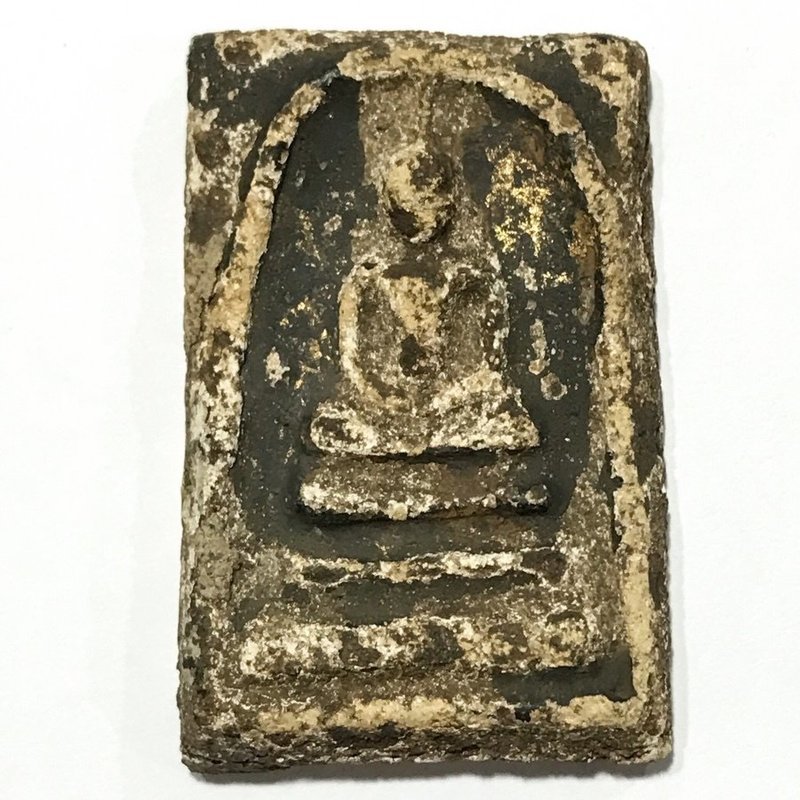
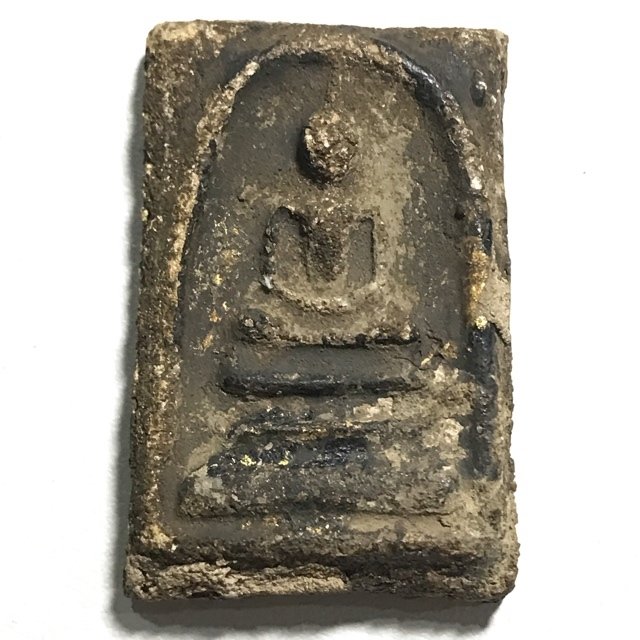
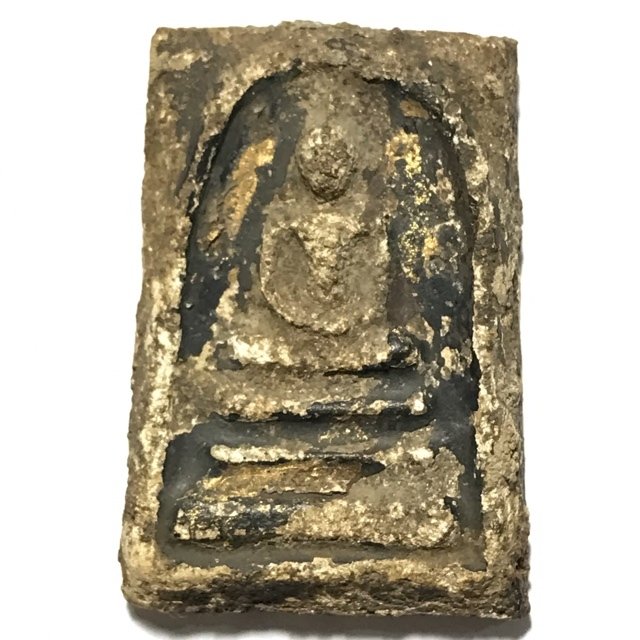
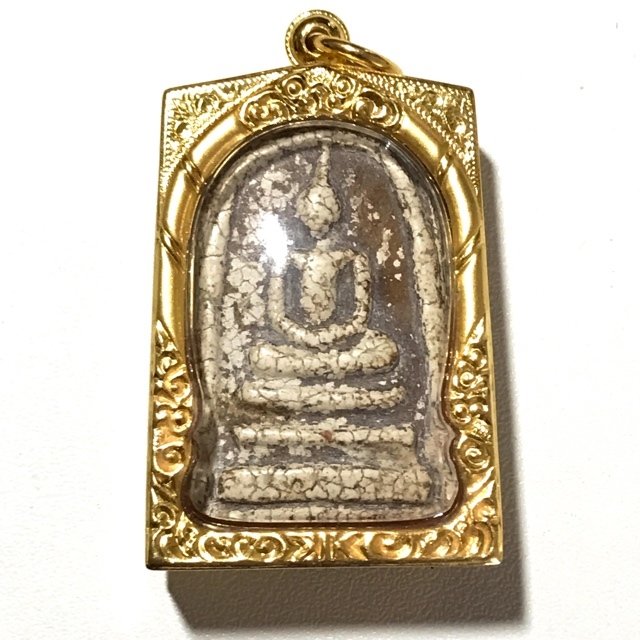
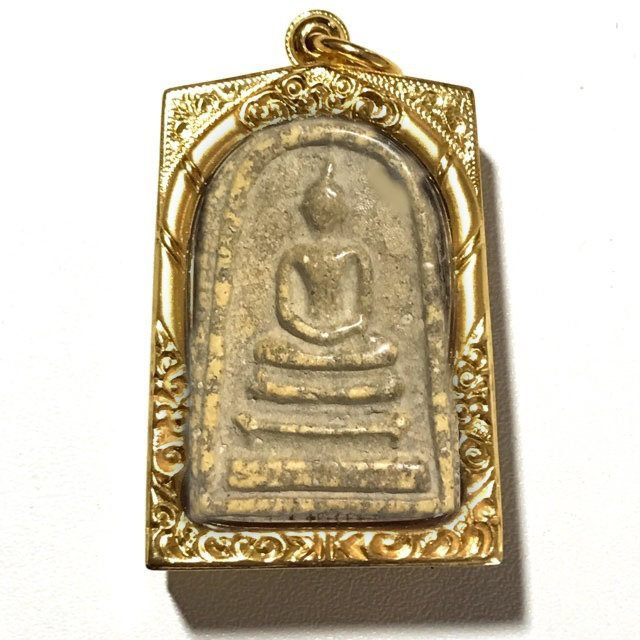
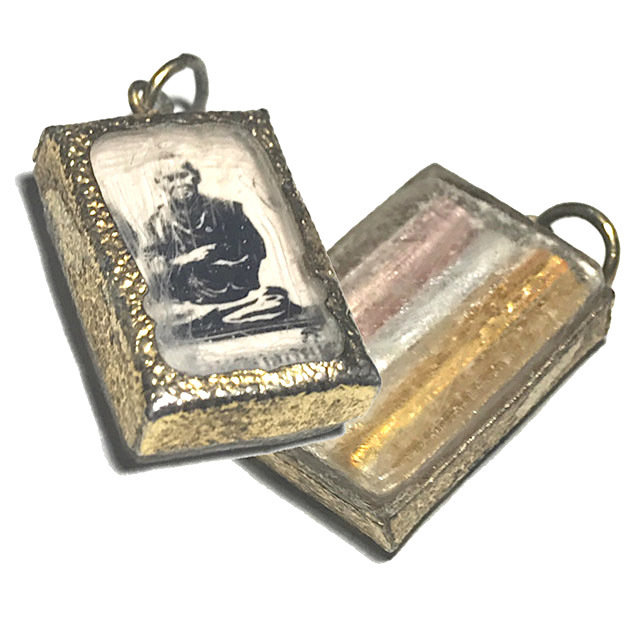
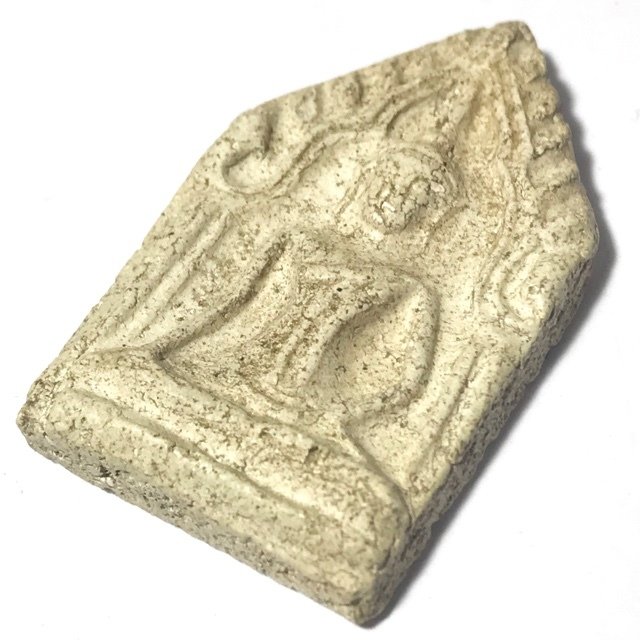
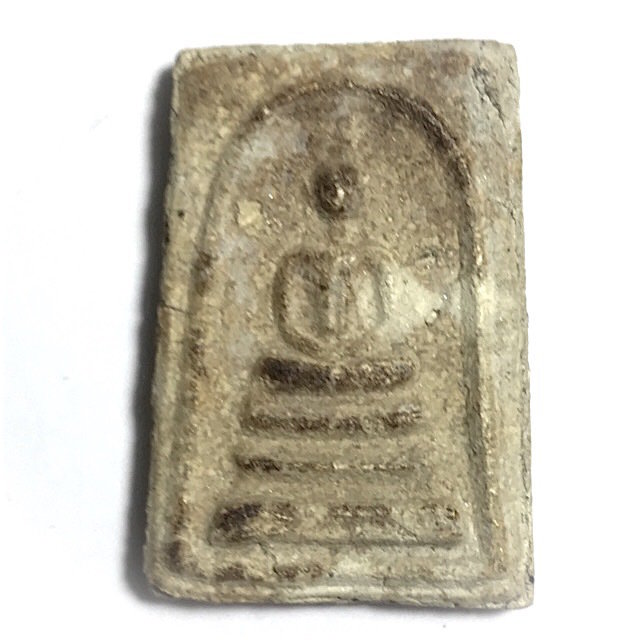
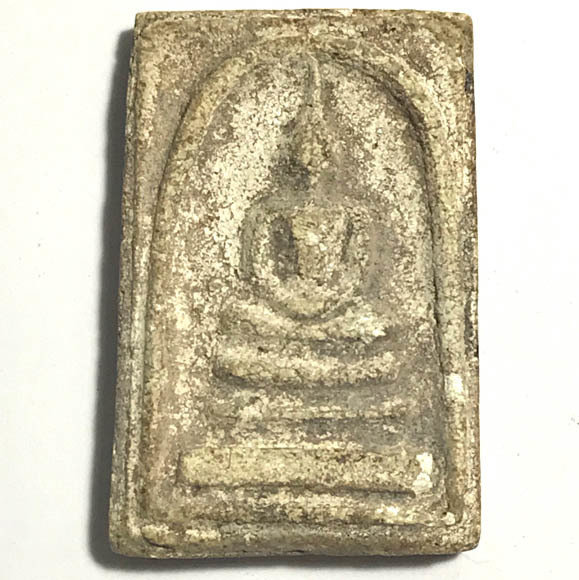
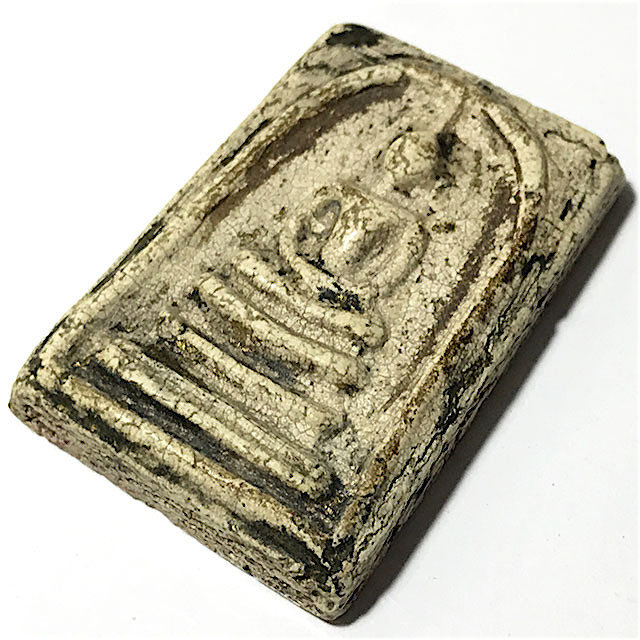
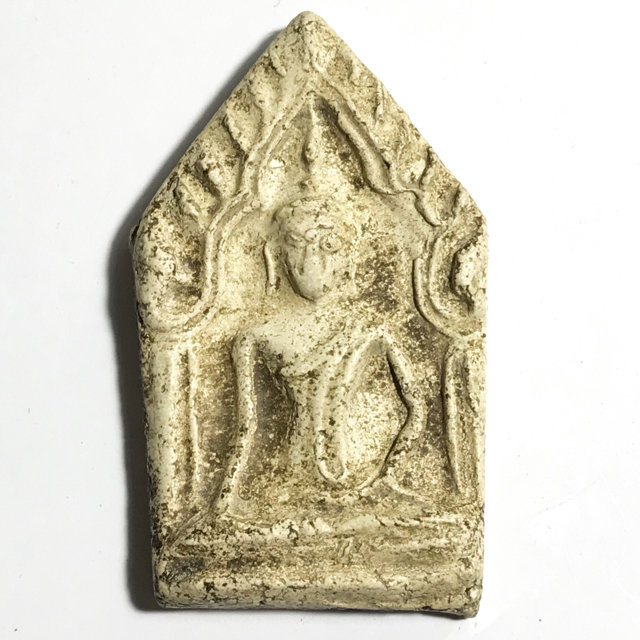
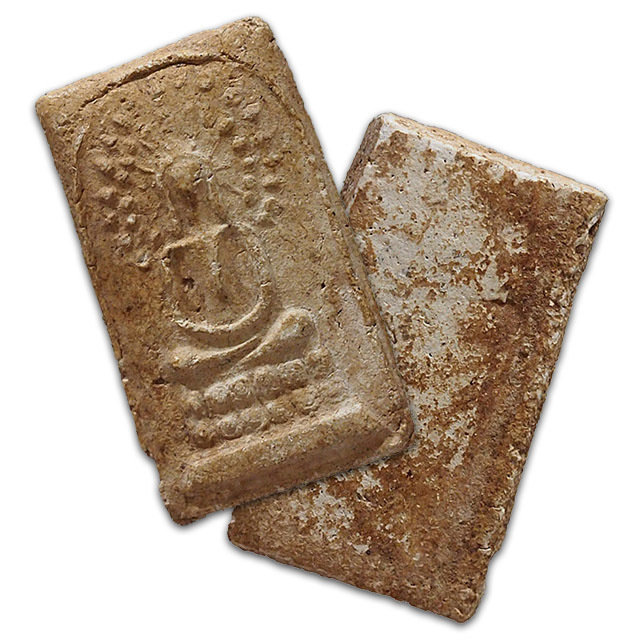
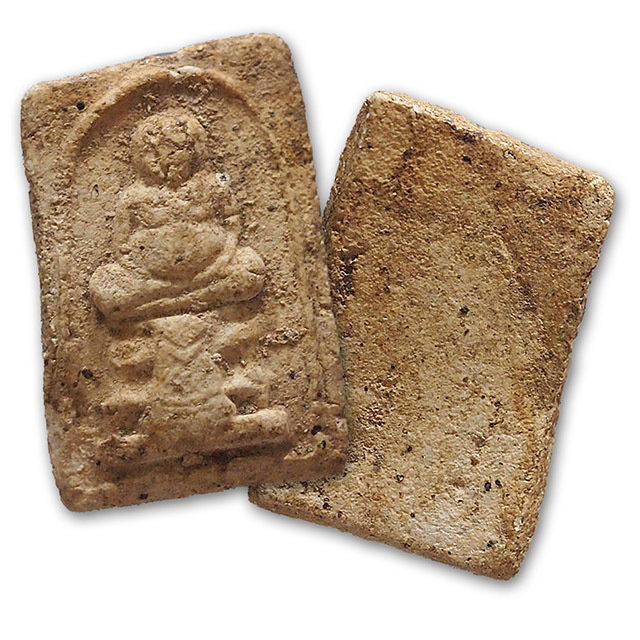
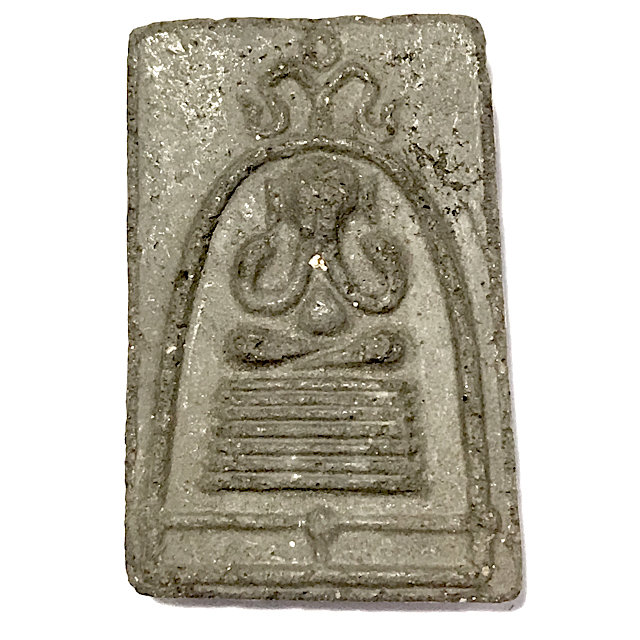
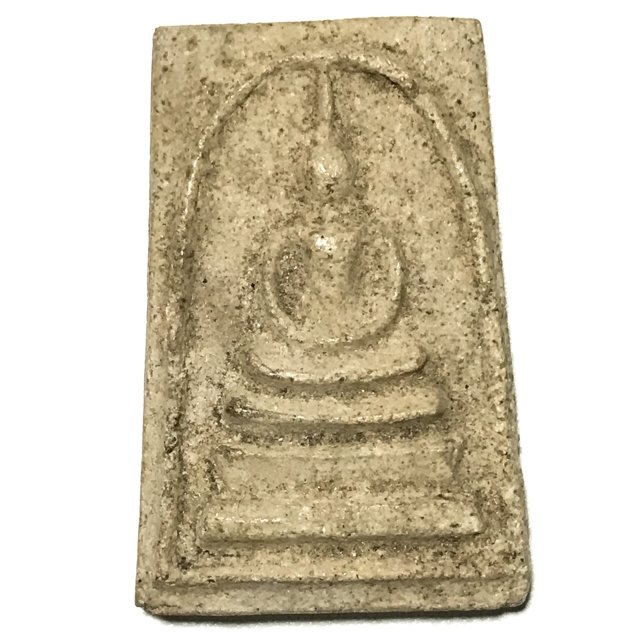

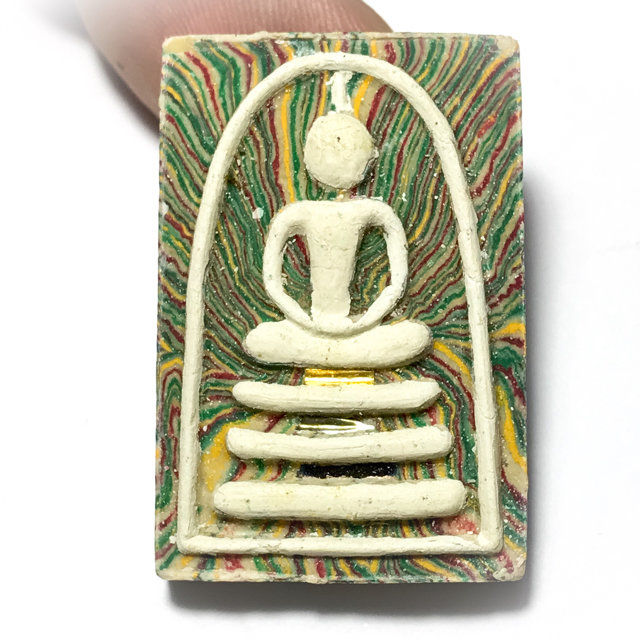
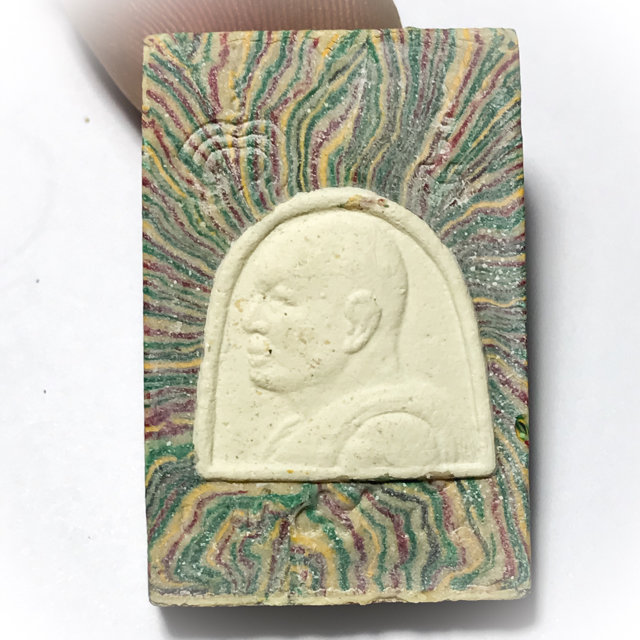
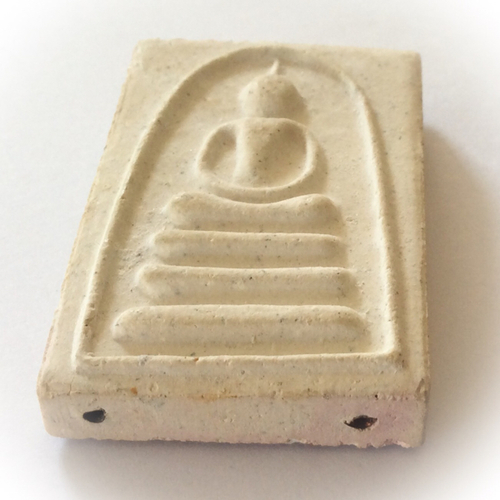
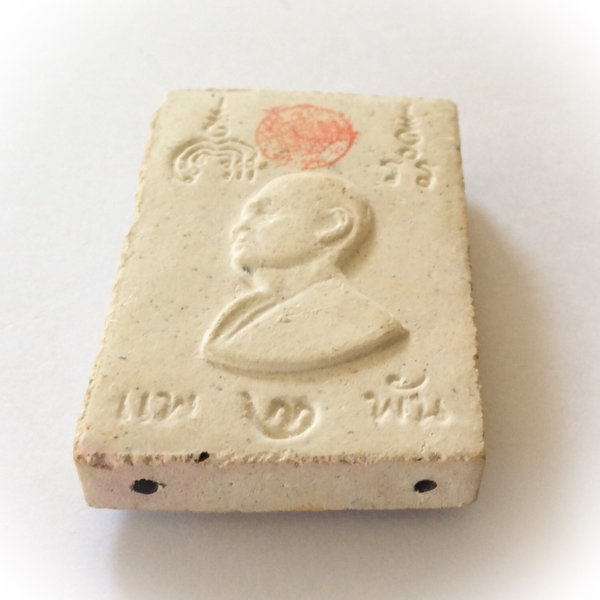
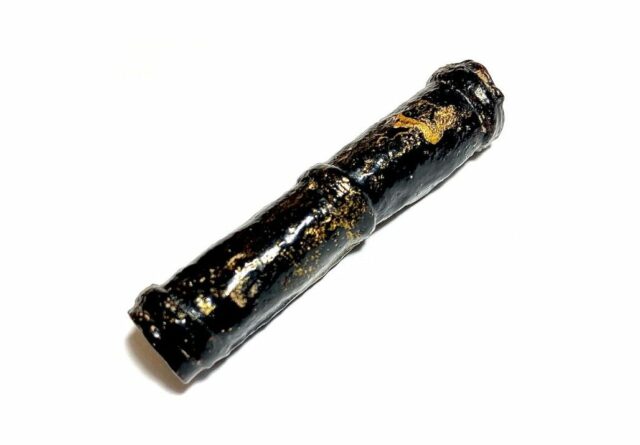

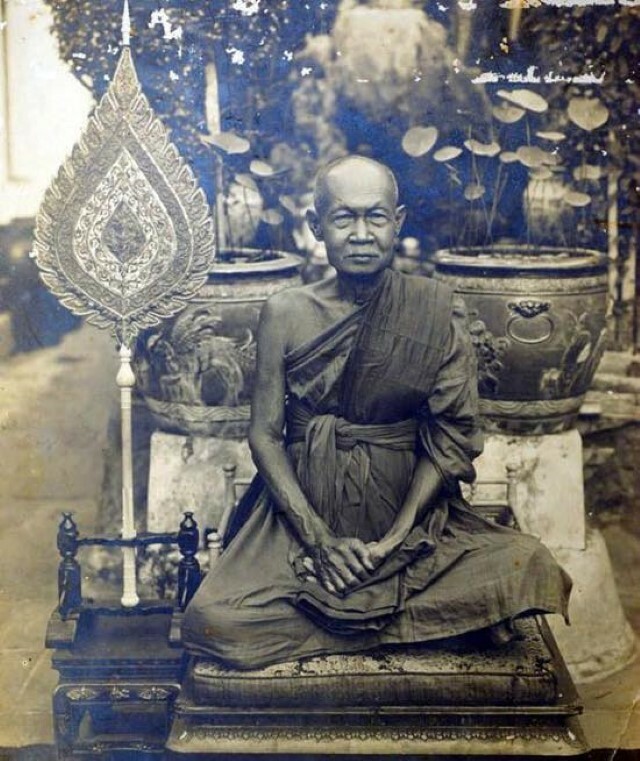
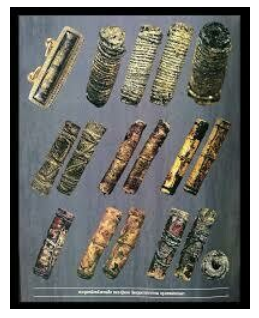
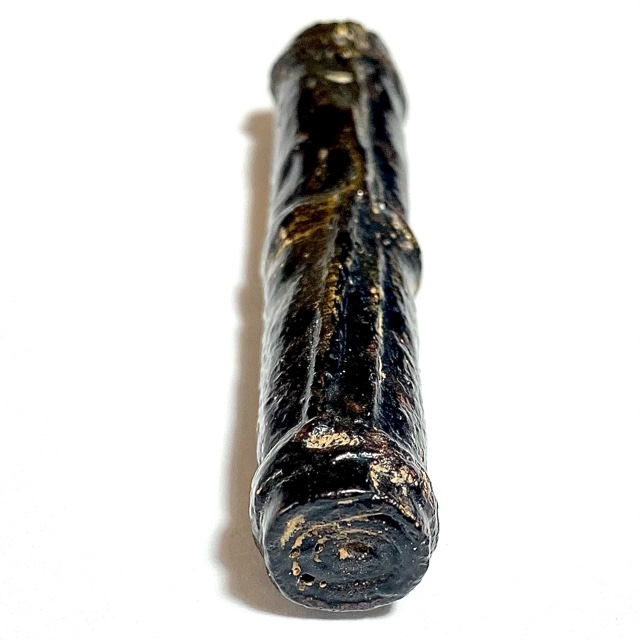
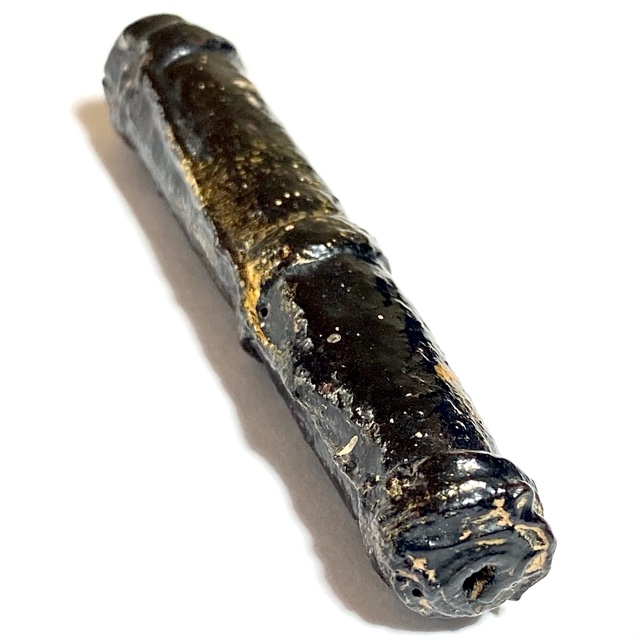 One famous story tells of how Luang Phu Nak’s devotees would notice that even buffaloes would cower in fear when they passed by, sensing the powerful magic of the Takrut Hnaa Bpaag Suea. This anecdote has become a testament to the amulet’s potency and Luang Phu Nak’s exceptional spiritual powers.
One famous story tells of how Luang Phu Nak’s devotees would notice that even buffaloes would cower in fear when they passed by, sensing the powerful magic of the Takrut Hnaa Bpaag Suea. This anecdote has become a testament to the amulet’s potency and Luang Phu Nak’s exceptional spiritual powers.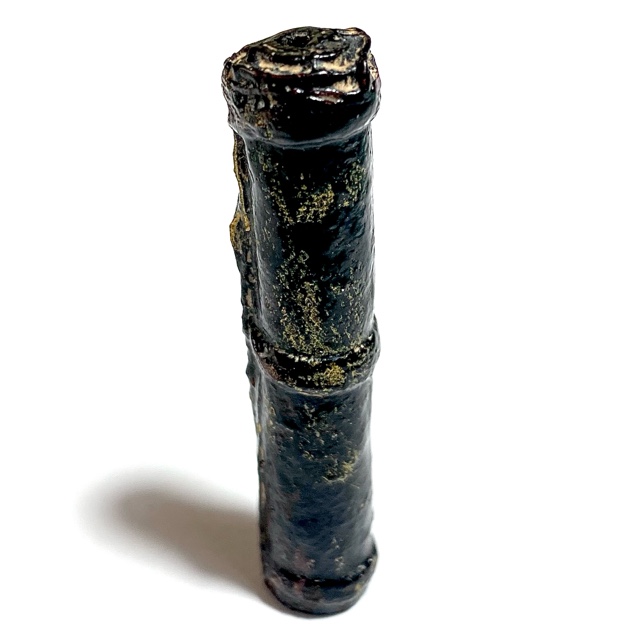 The Takrut Hnaa Bpaag Suea of Luang Phu Nak, Wat Arun, is a legendary amulet that has captured the hearts and imaginations of collectors and enthusiasts around the world. Its exceptional powers and benefits, combined with its rarity and historical significance, make it a truly unique and valuable talisman. This also reminds us of the importance of preserving the cultural heritage and spiritual traditions of Thailand, and the enduring legacy of Luang Phu Nak, a true master of the ancient Wicha, and grimoires of mystical arts.
The Takrut Hnaa Bpaag Suea of Luang Phu Nak, Wat Arun, is a legendary amulet that has captured the hearts and imaginations of collectors and enthusiasts around the world. Its exceptional powers and benefits, combined with its rarity and historical significance, make it a truly unique and valuable talisman. This also reminds us of the importance of preserving the cultural heritage and spiritual traditions of Thailand, and the enduring legacy of Luang Phu Nak, a true master of the ancient Wicha, and grimoires of mystical arts.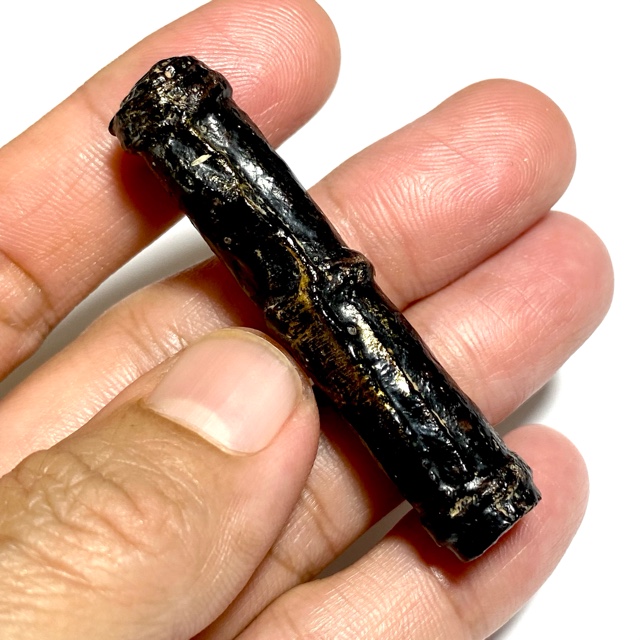

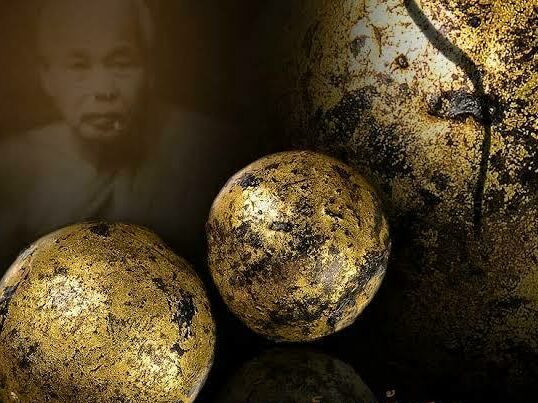
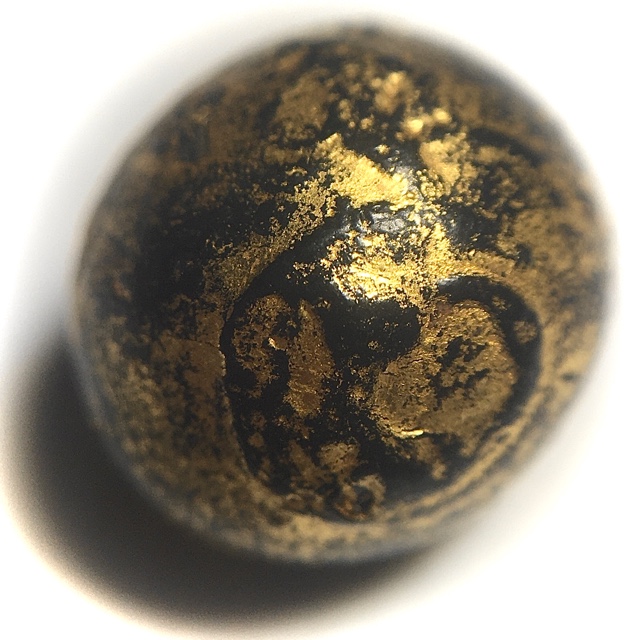

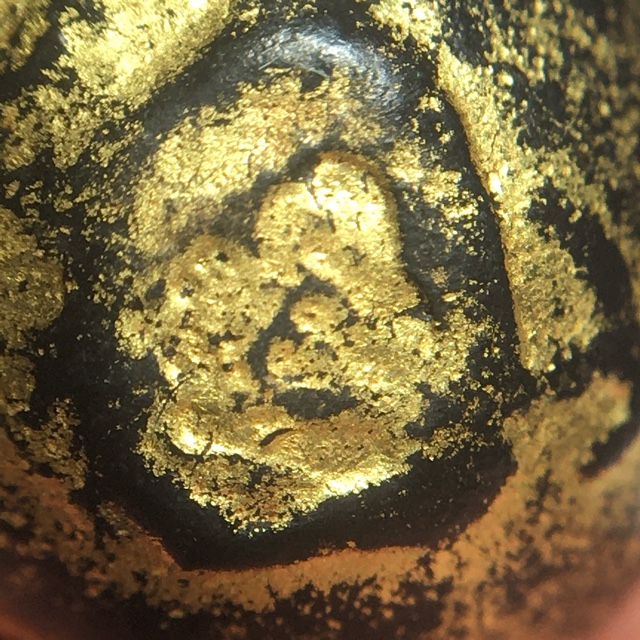
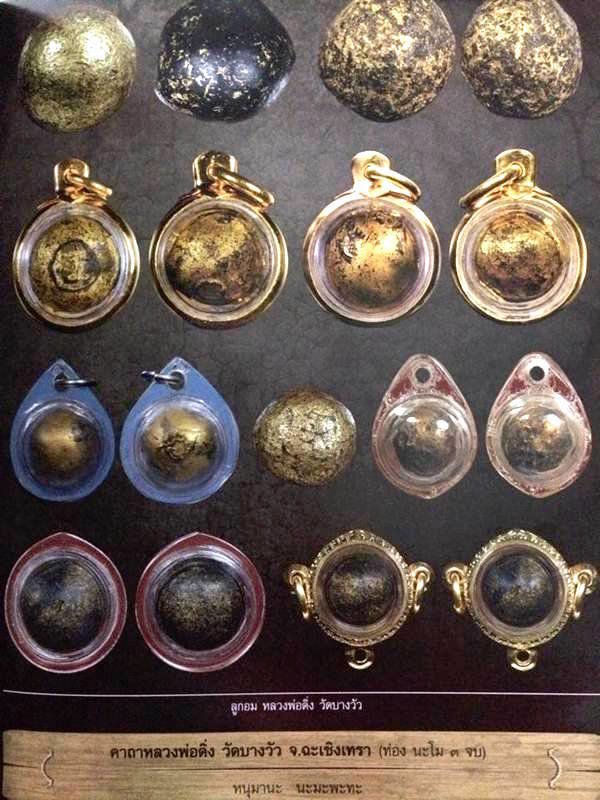
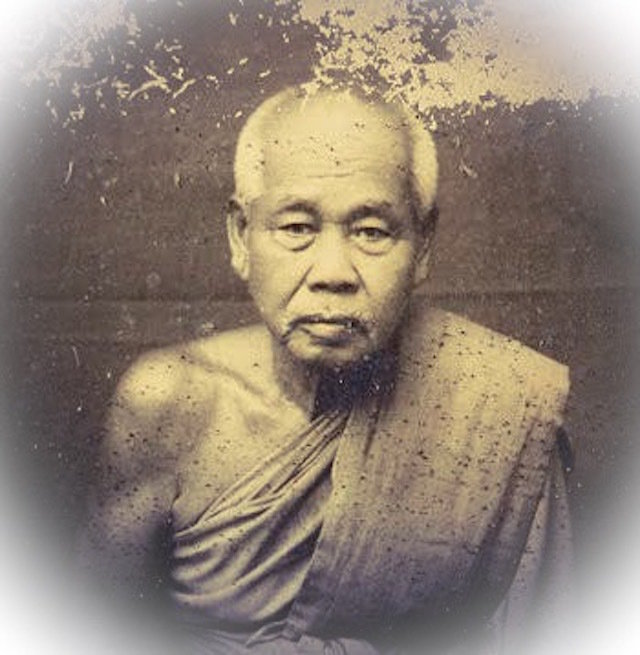
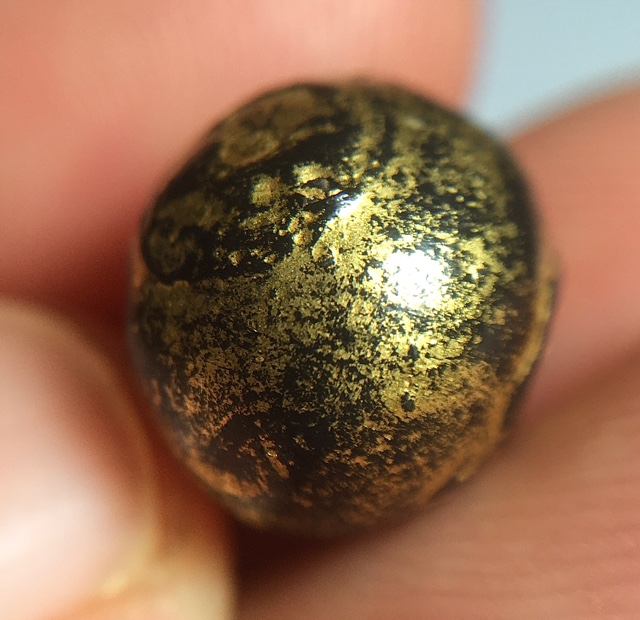
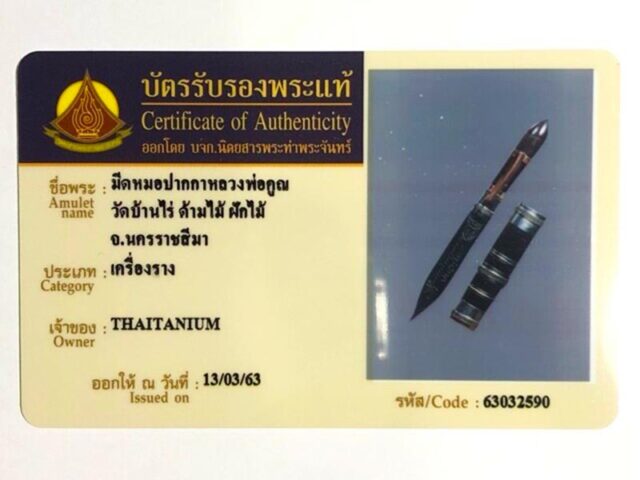
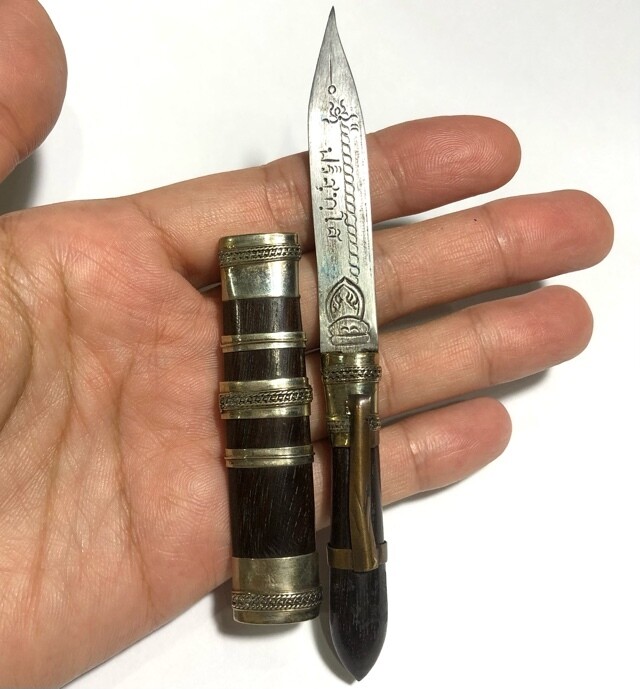






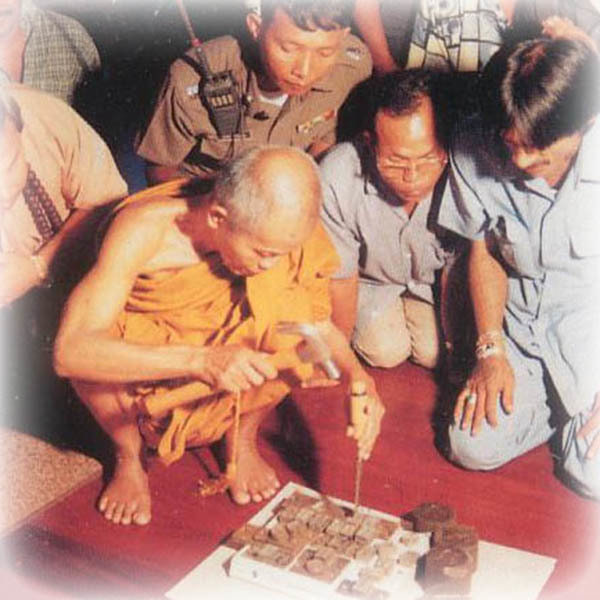


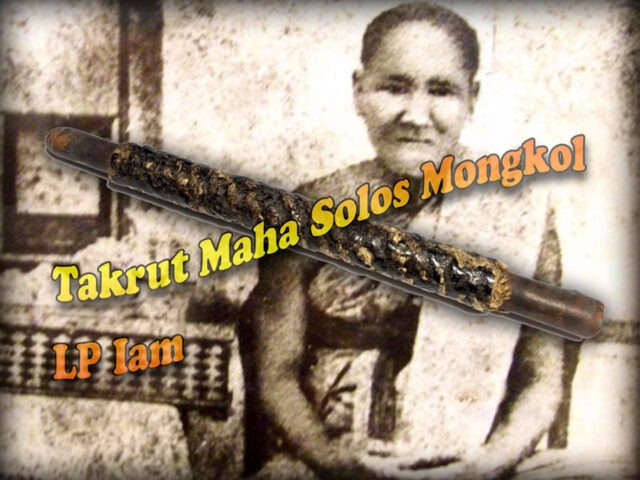
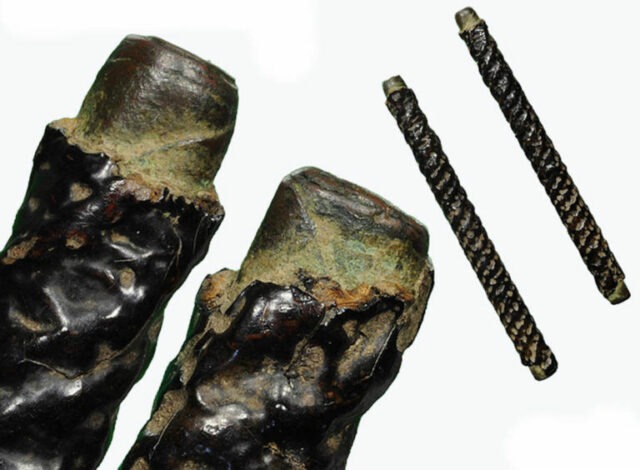
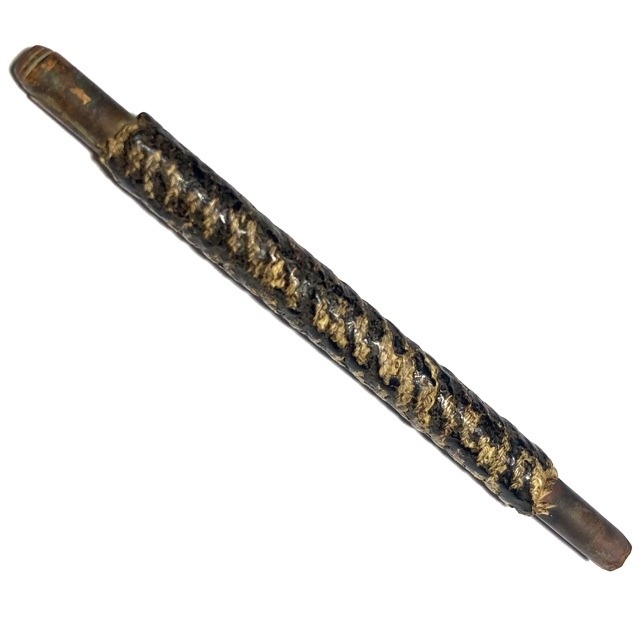
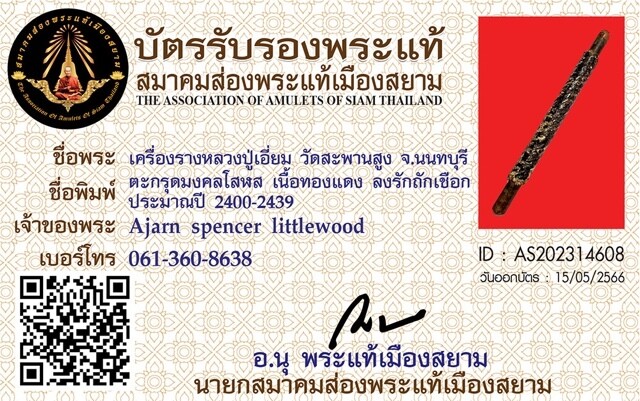
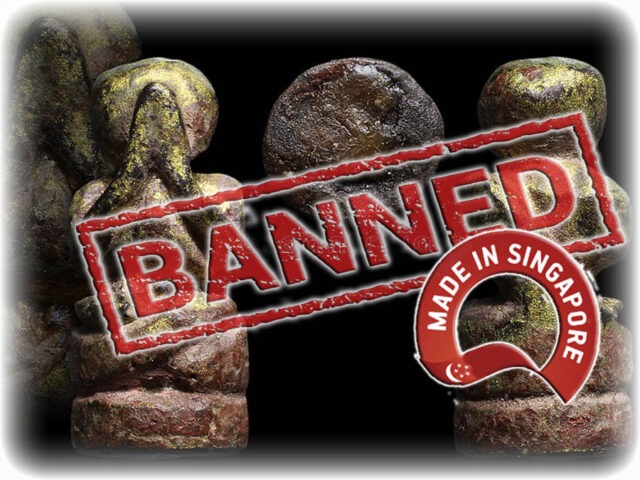
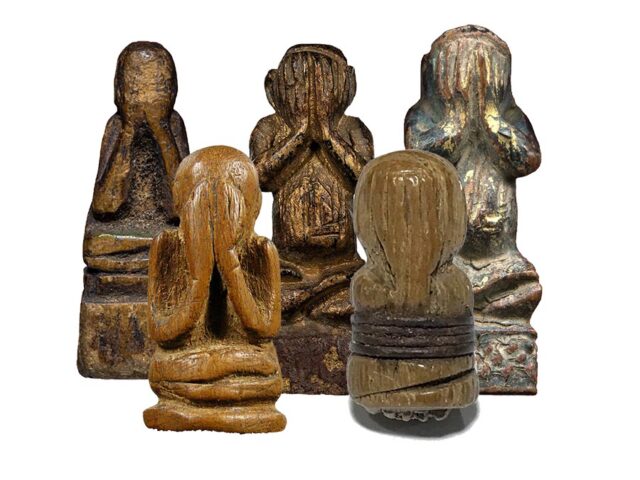
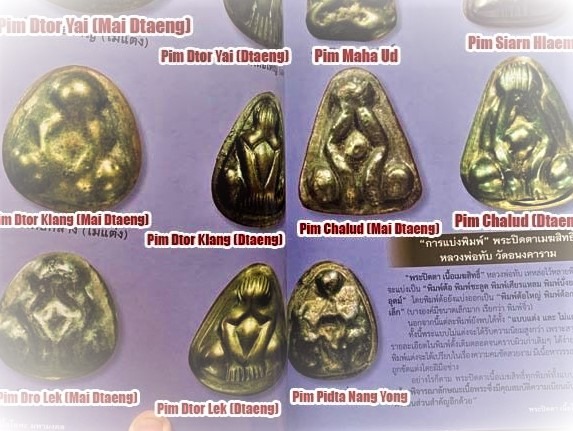
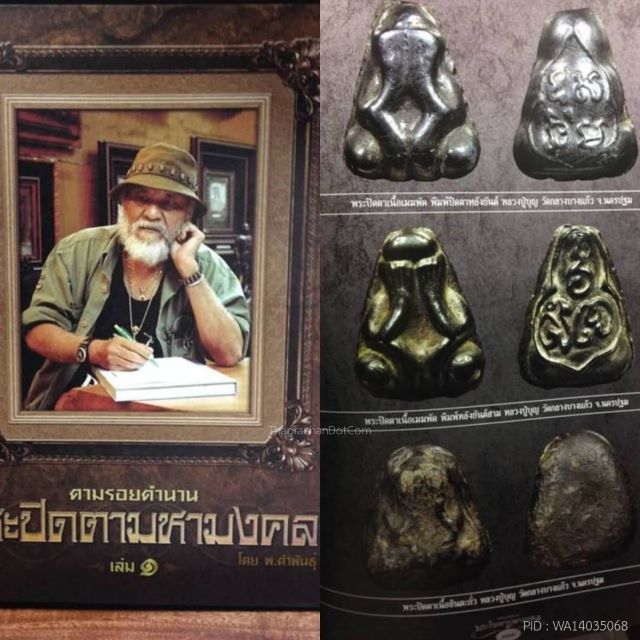
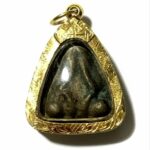
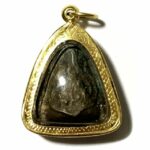
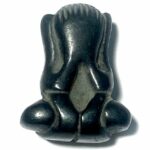
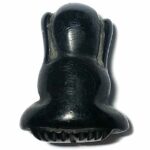
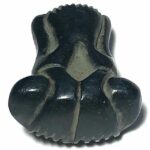
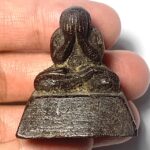
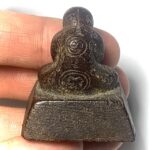
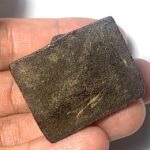
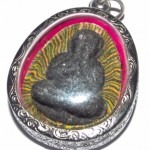
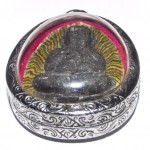
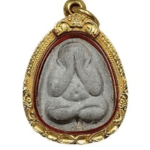
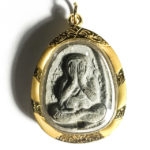
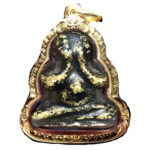

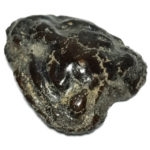
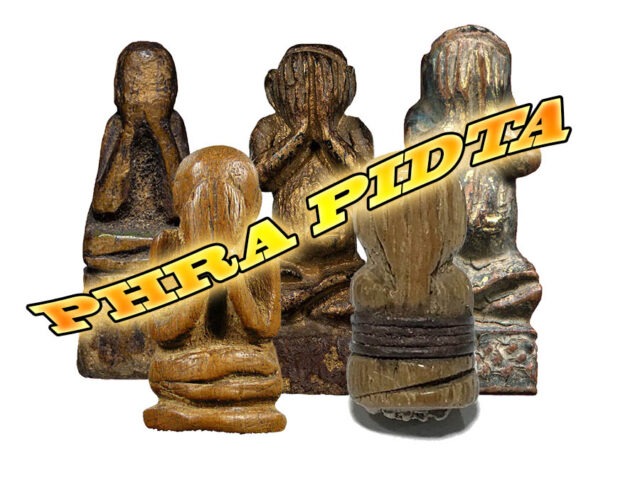
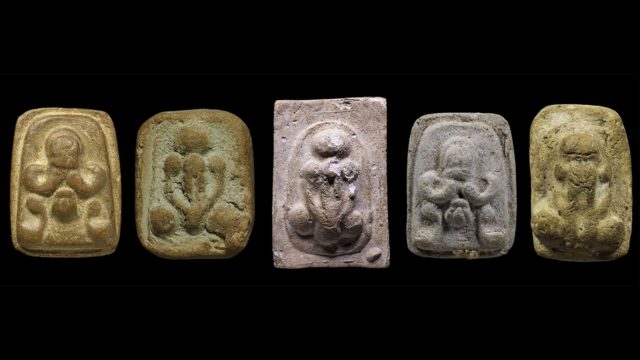
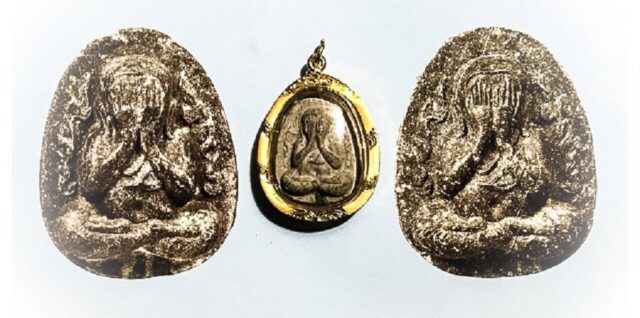
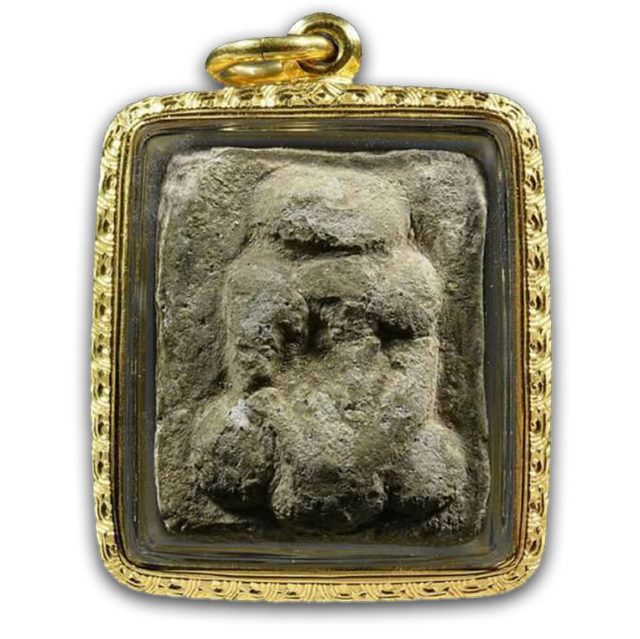
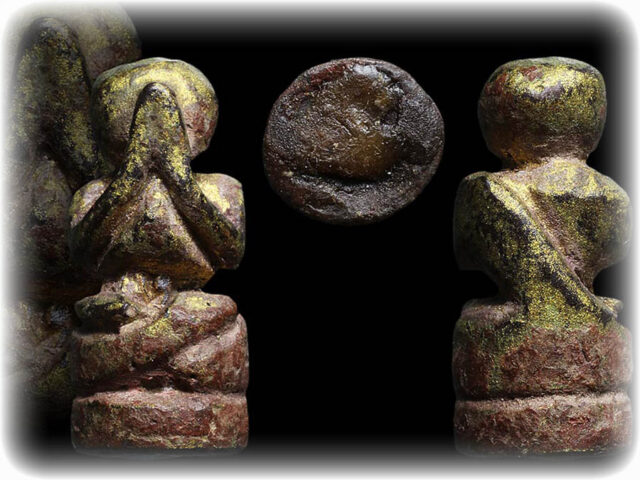
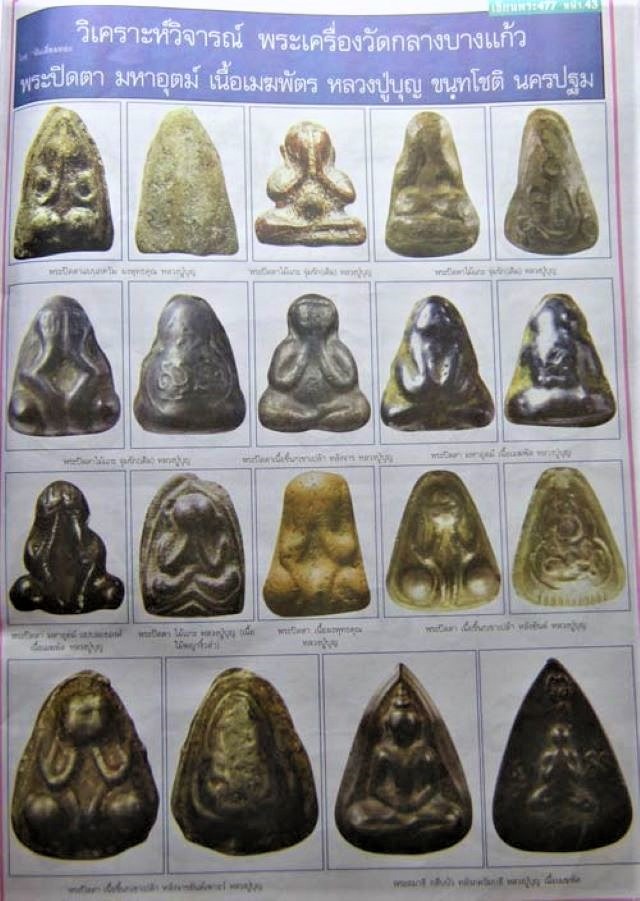
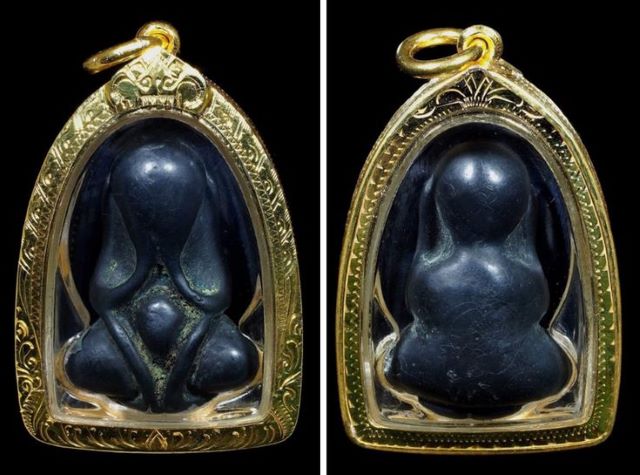
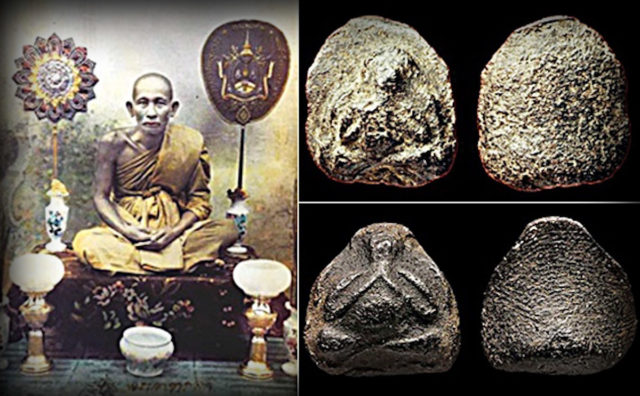
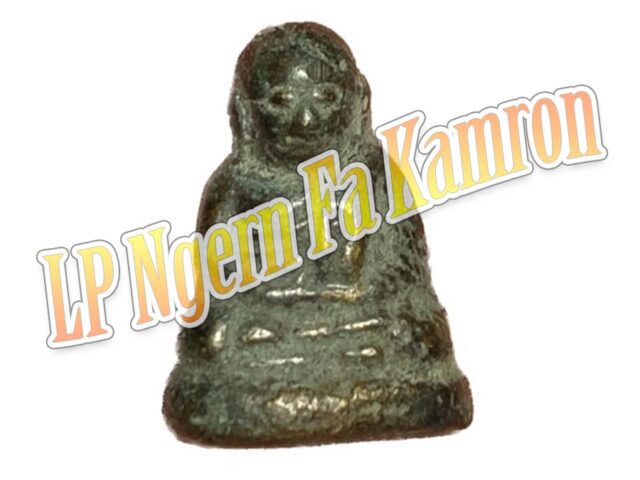

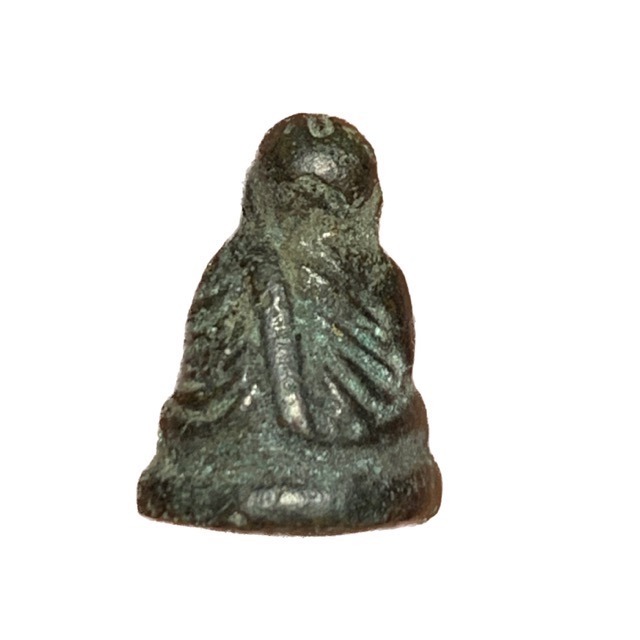

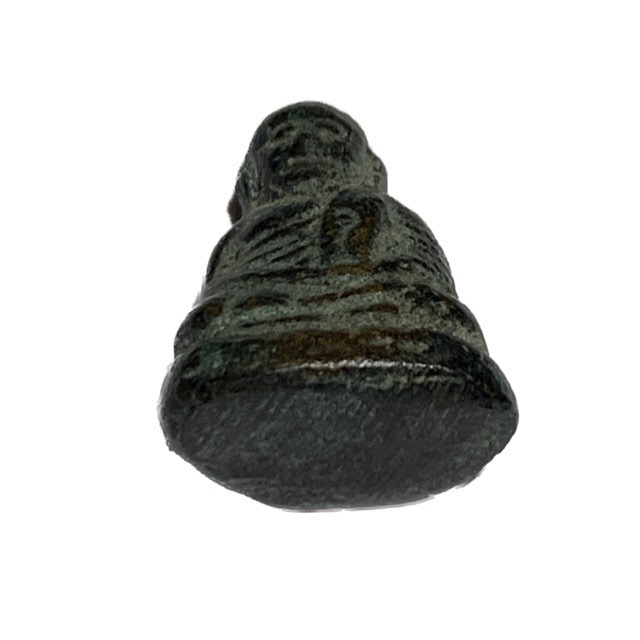

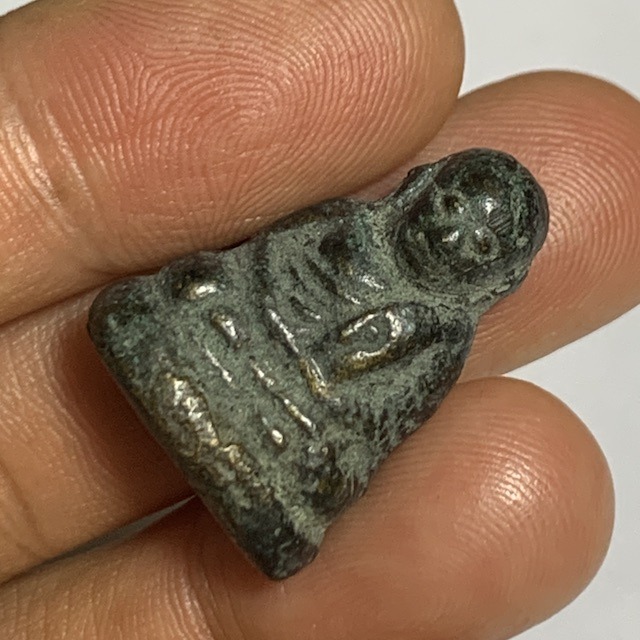

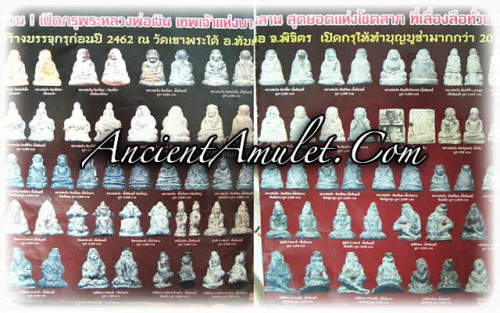
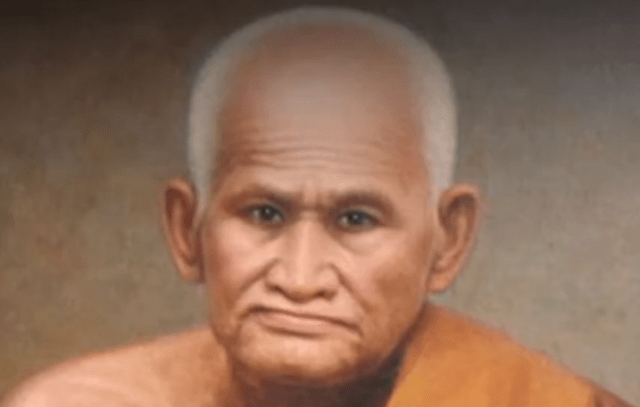
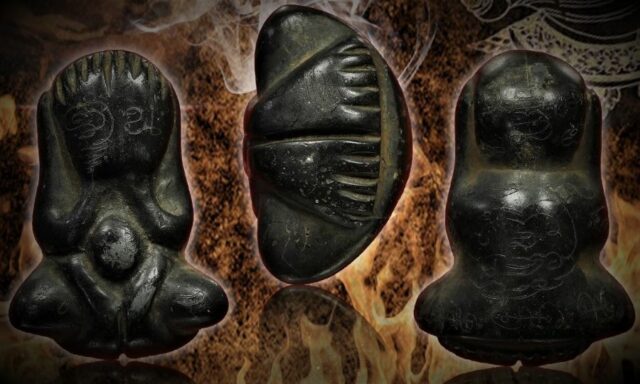
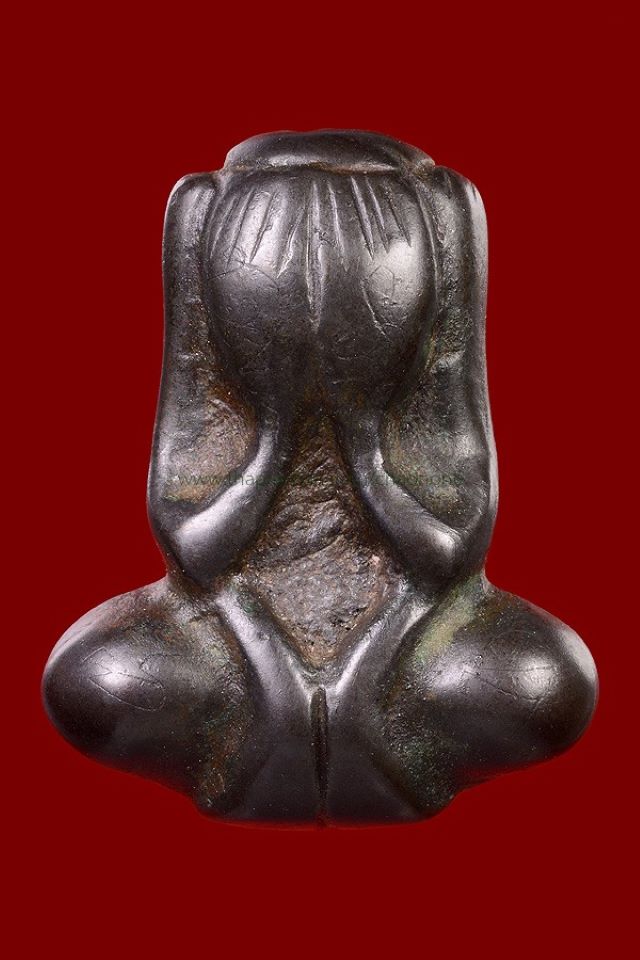
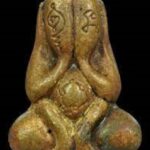
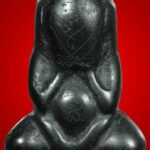
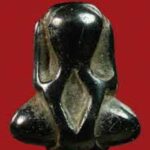
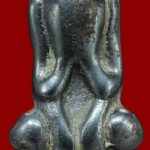
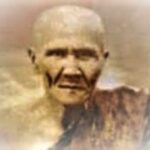
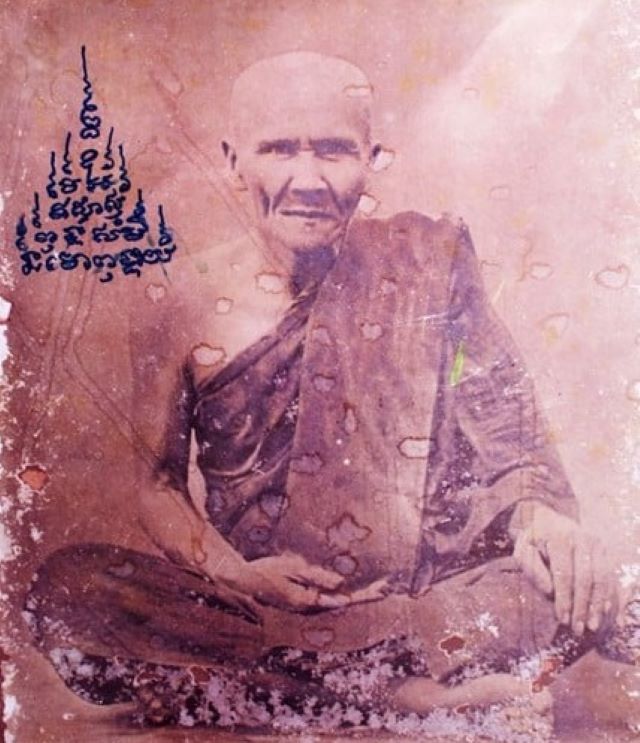
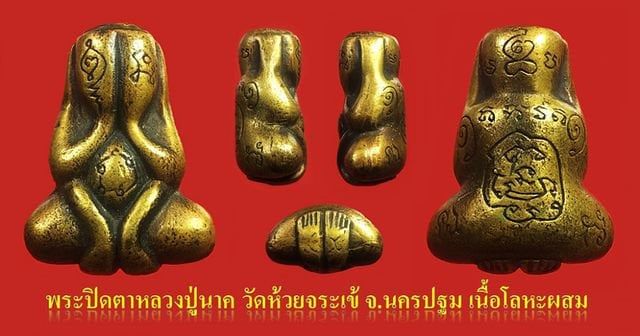
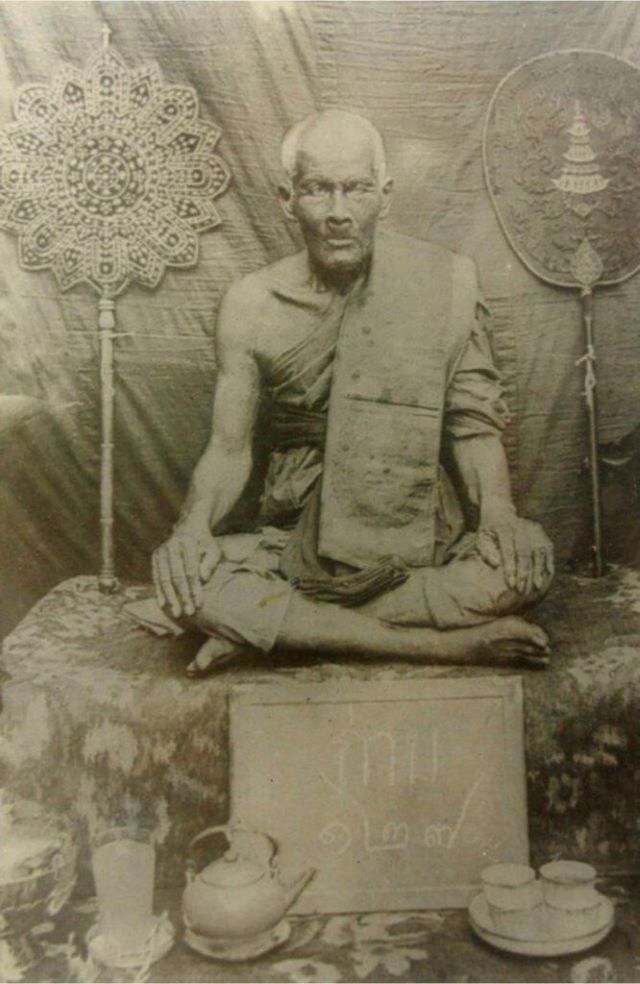
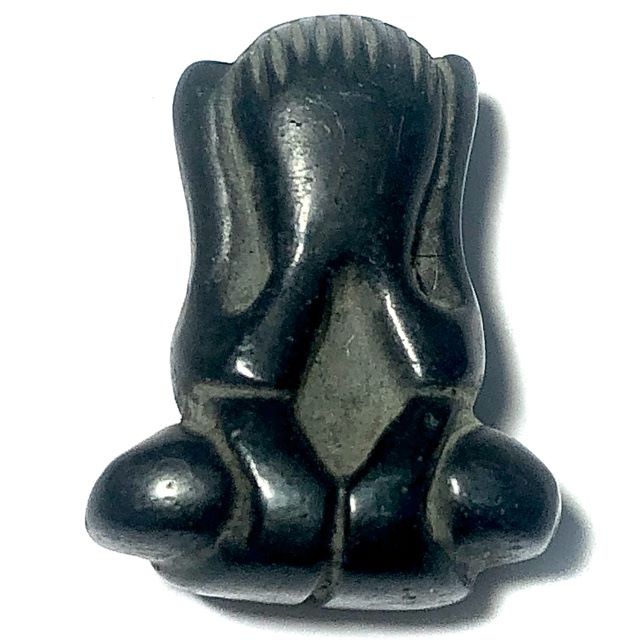
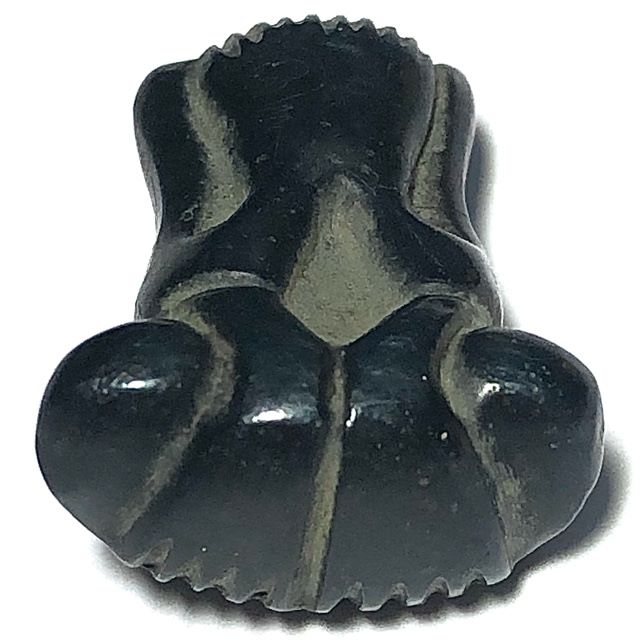
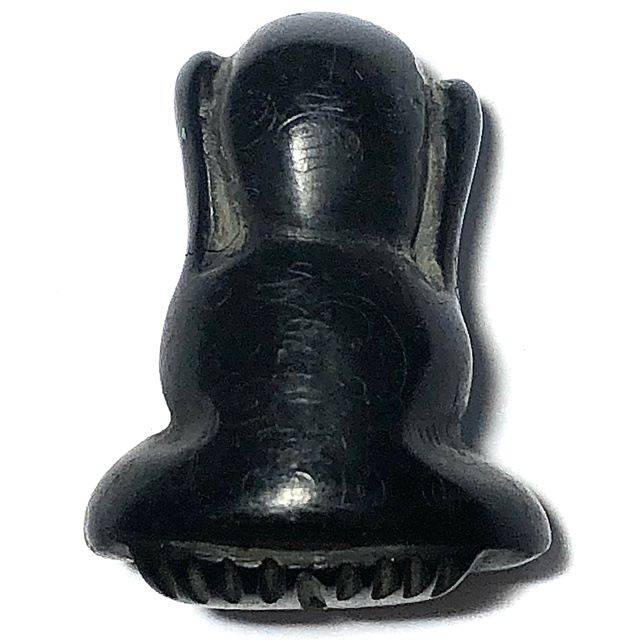
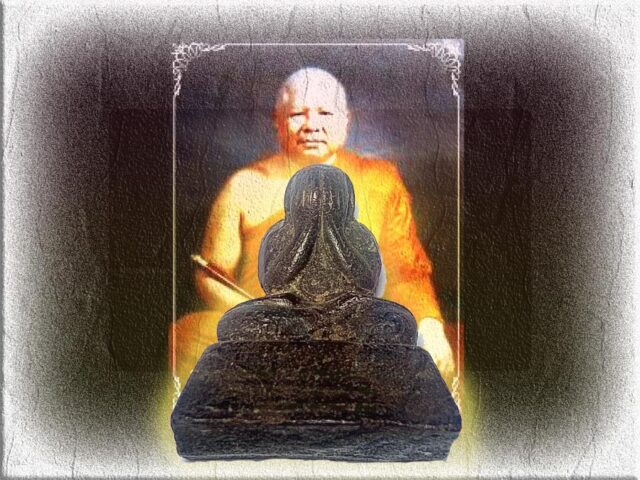
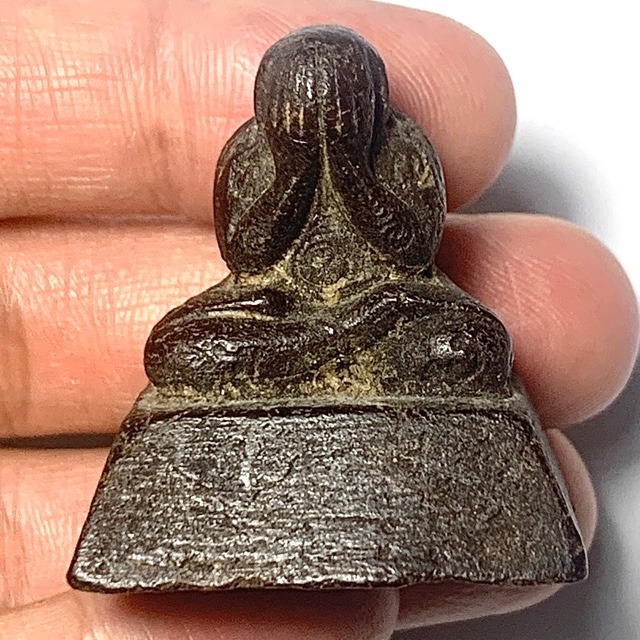

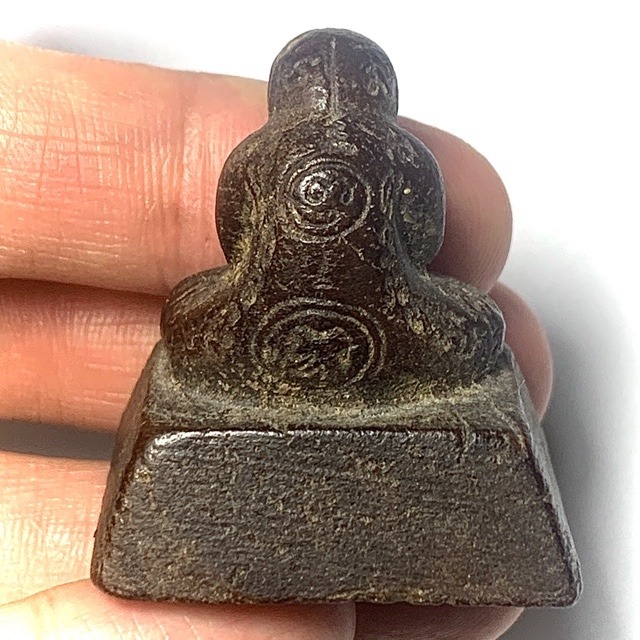
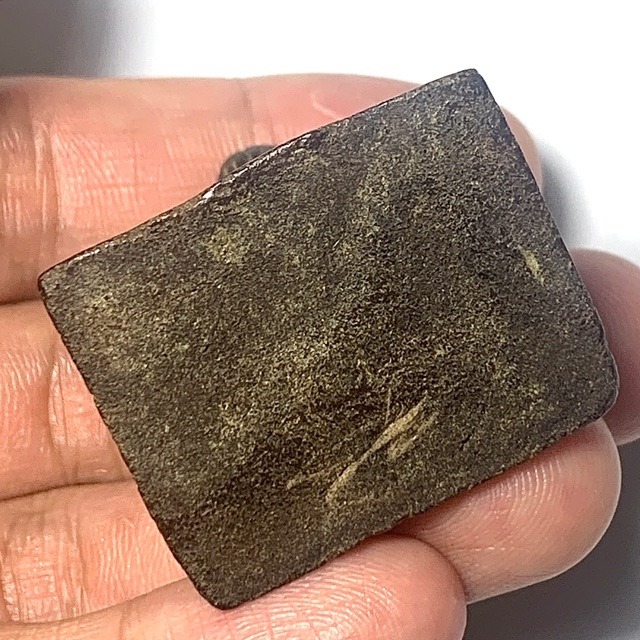

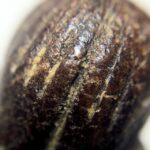
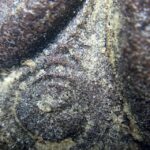
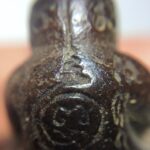
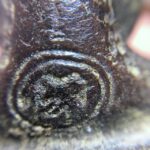
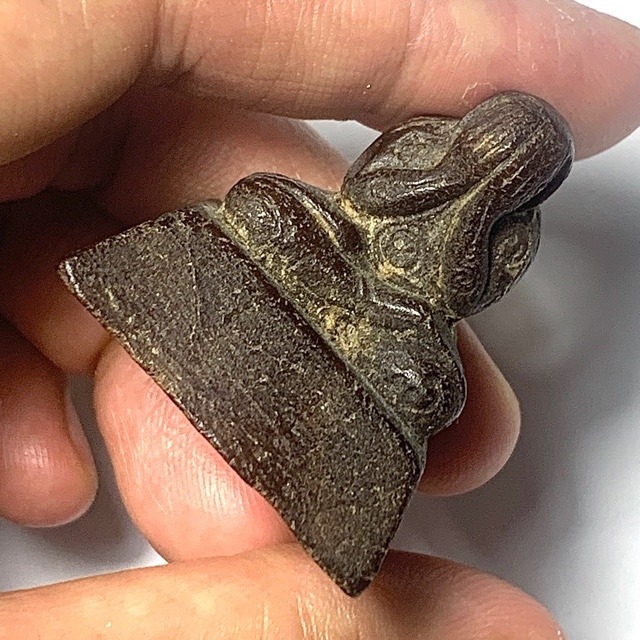
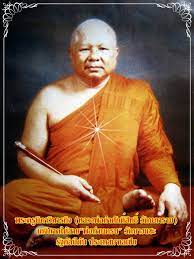

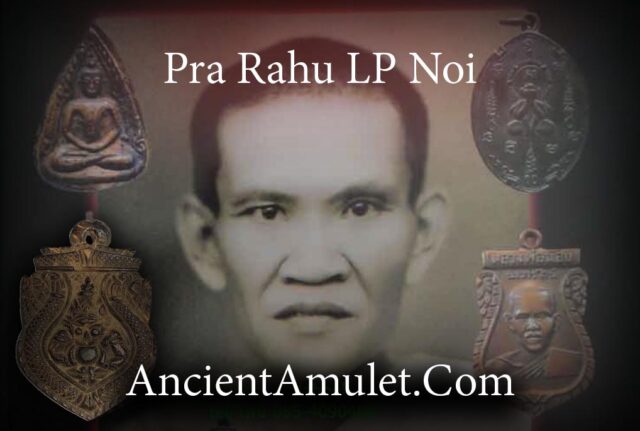
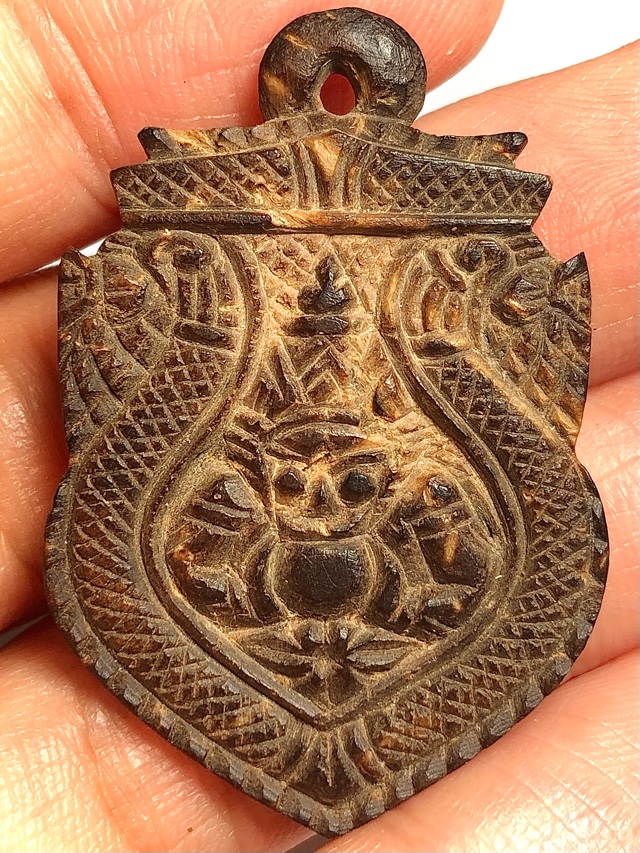
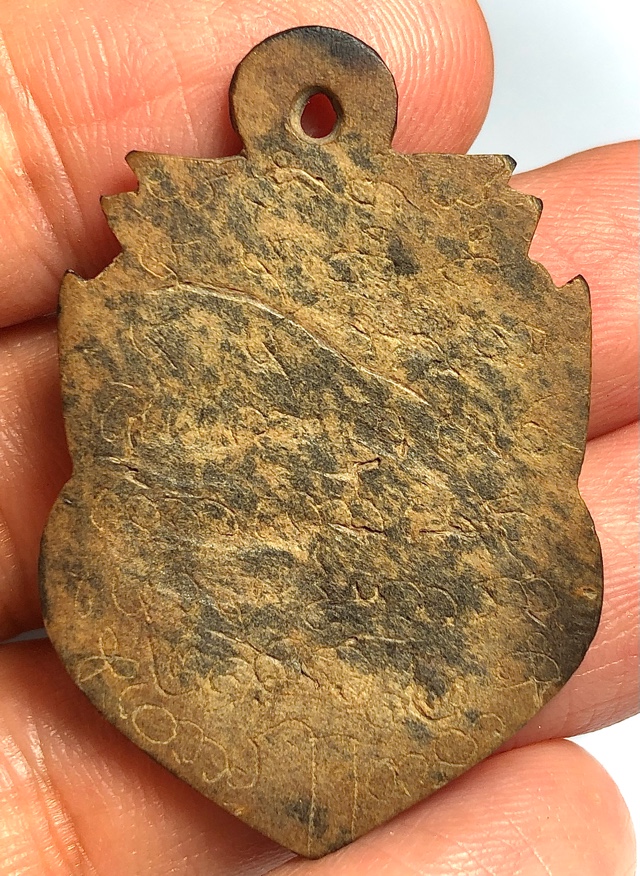
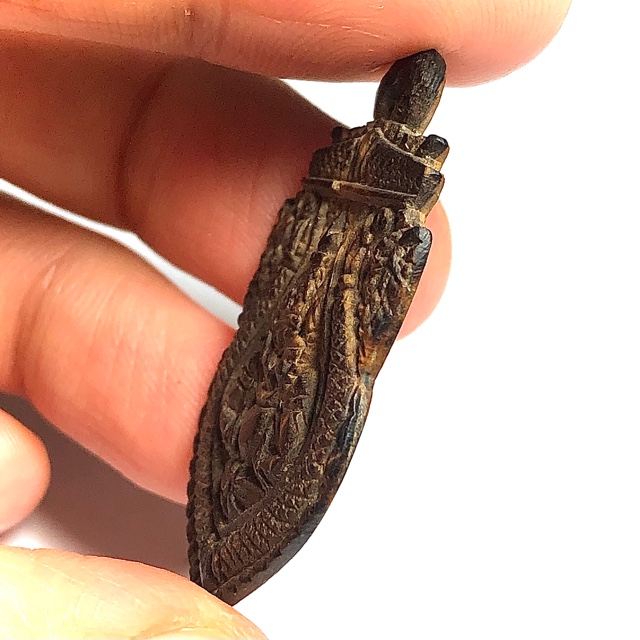


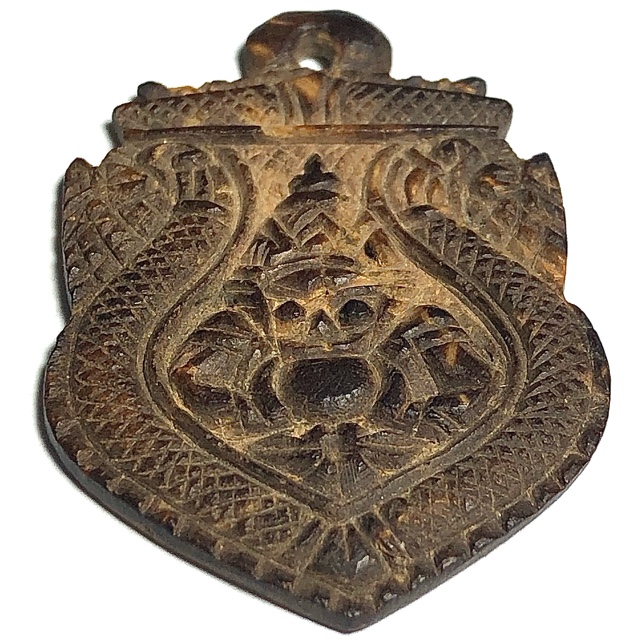
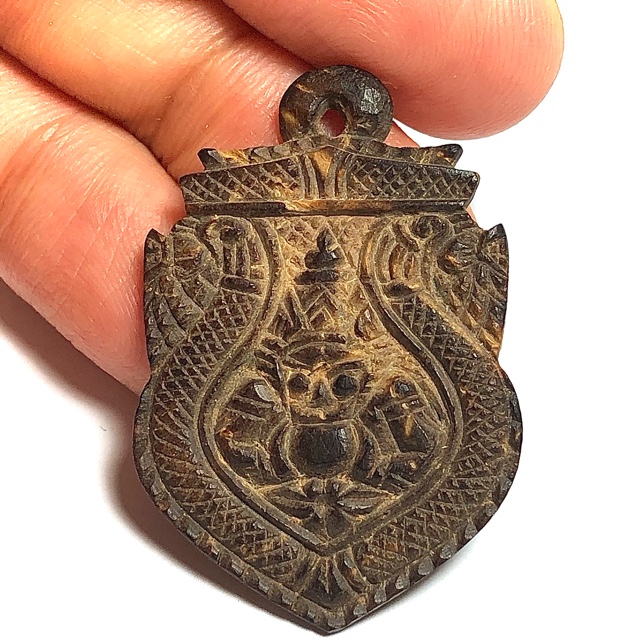
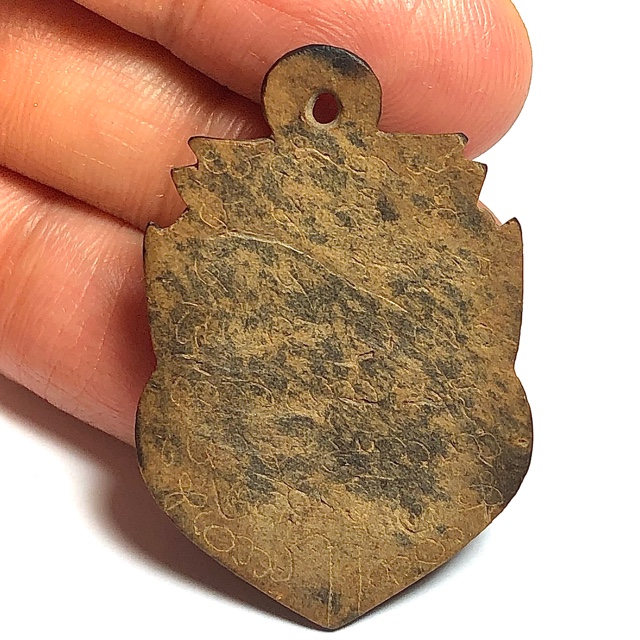


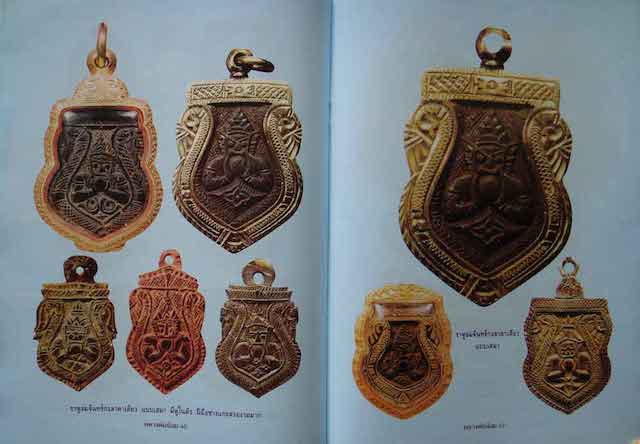
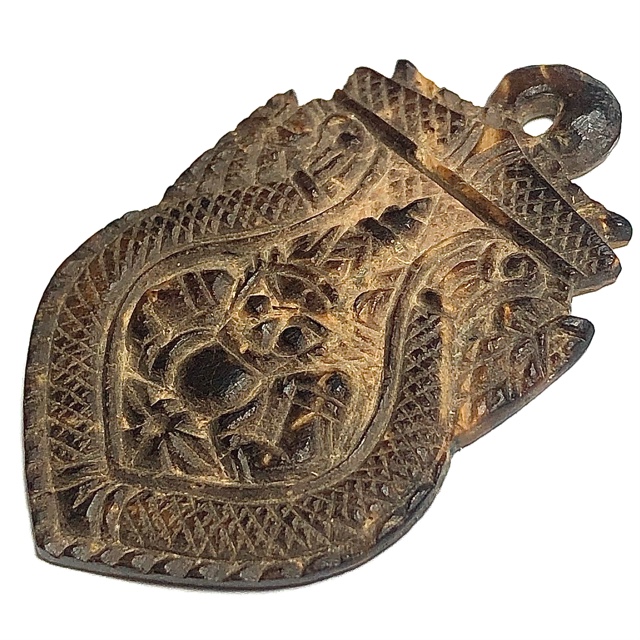
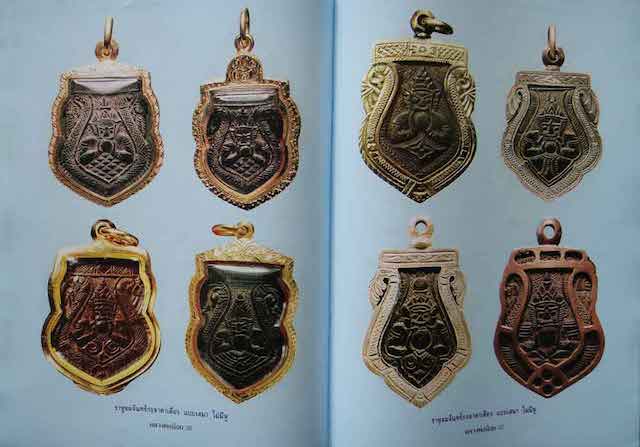
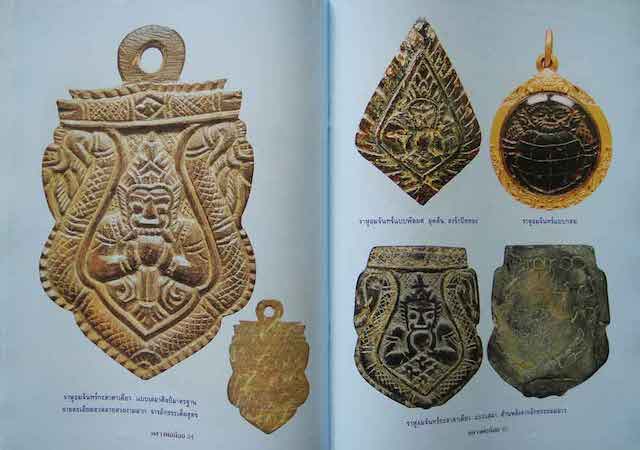
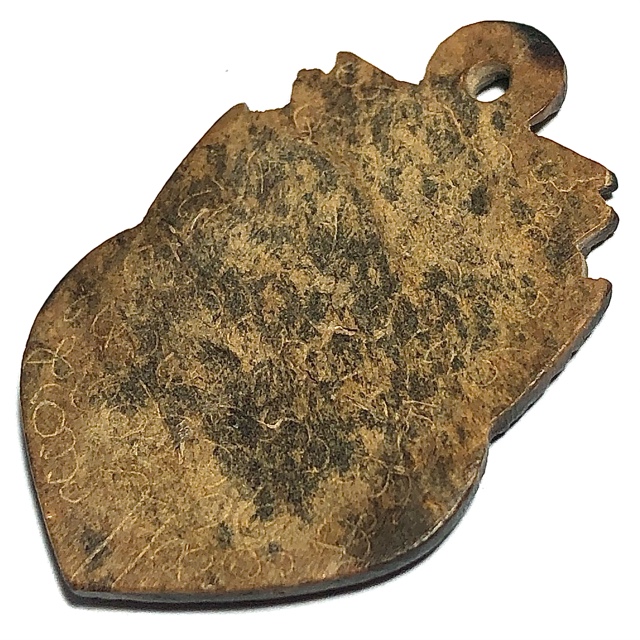
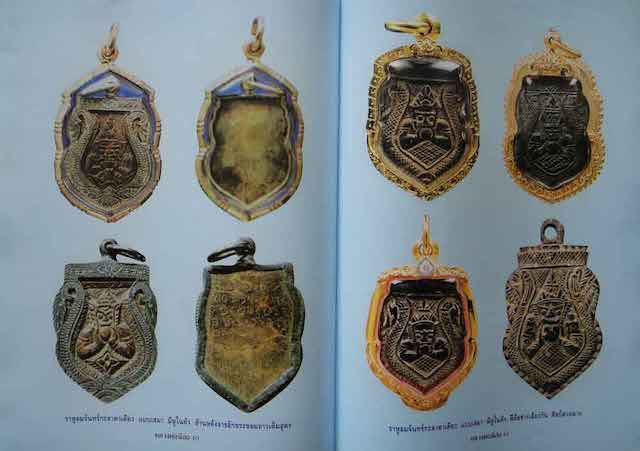
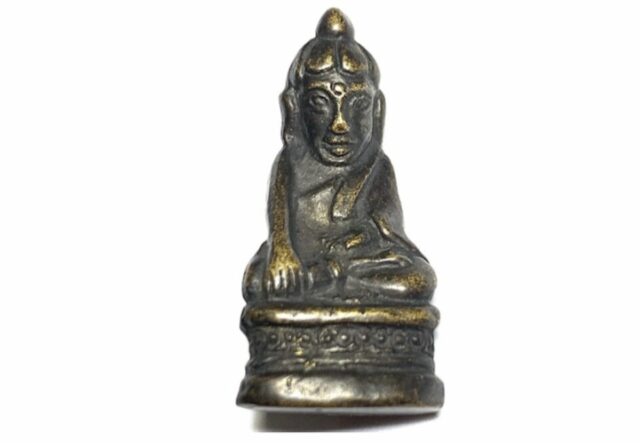
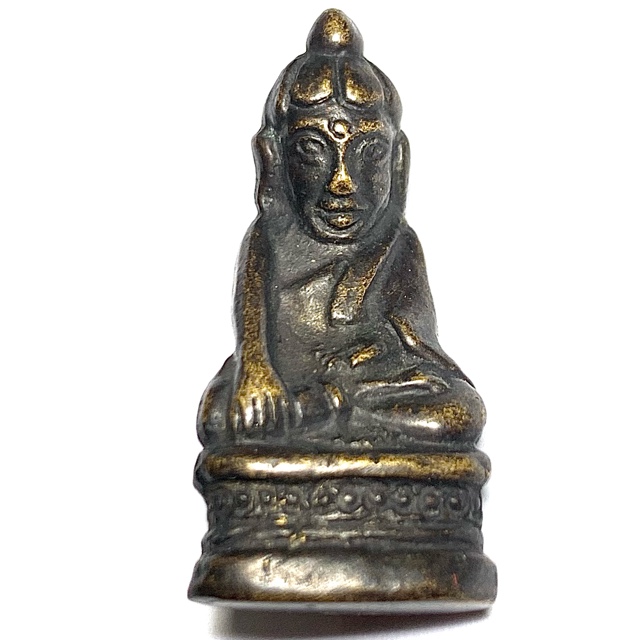
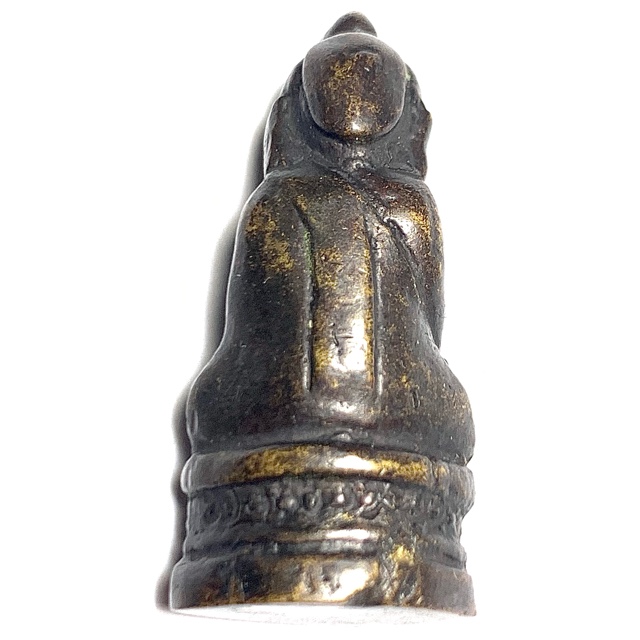

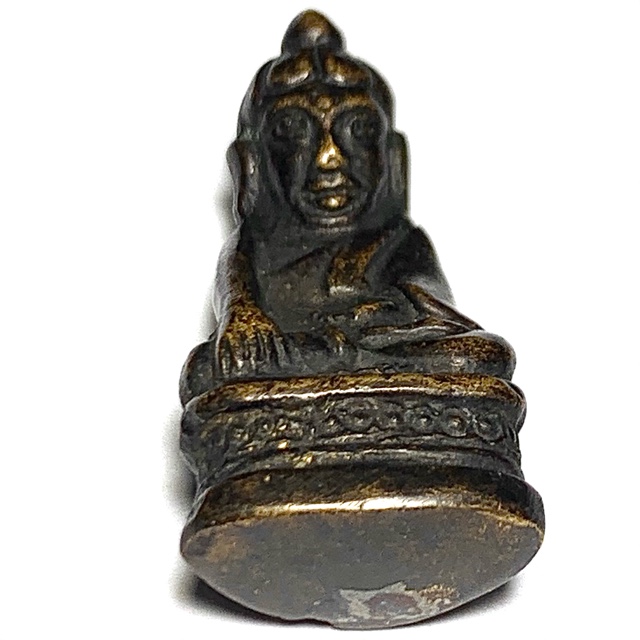
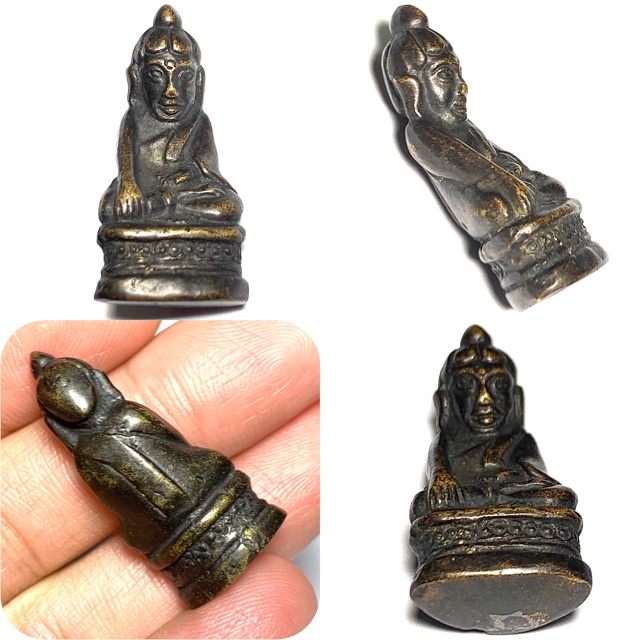
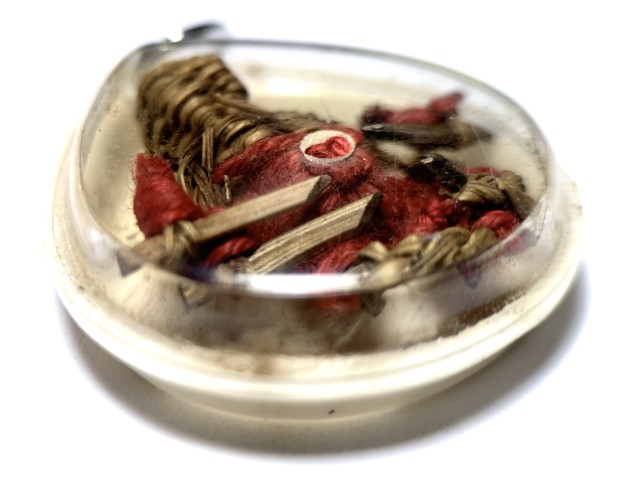
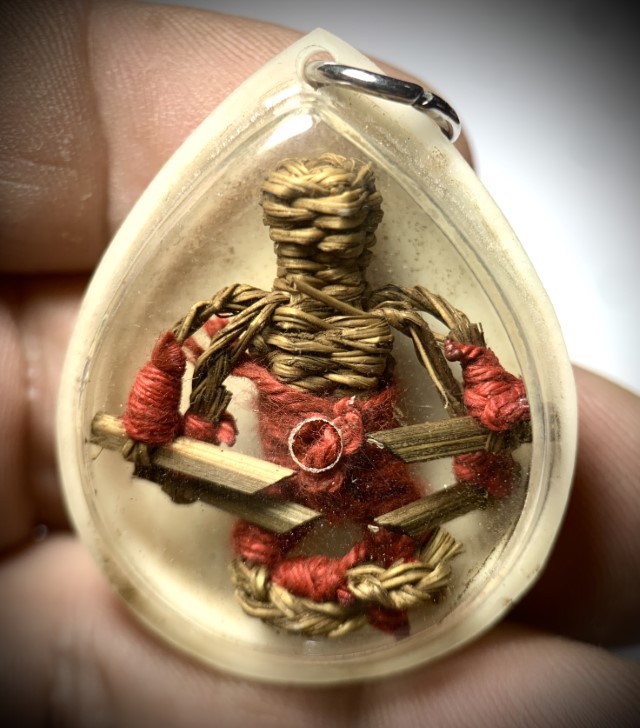
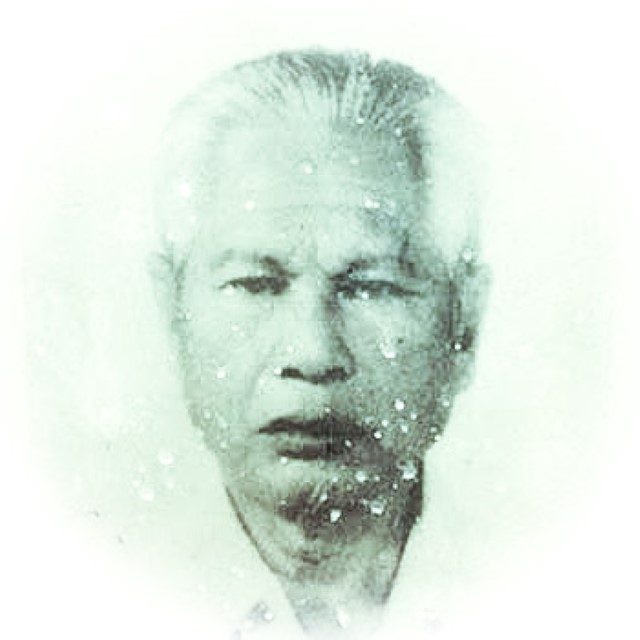
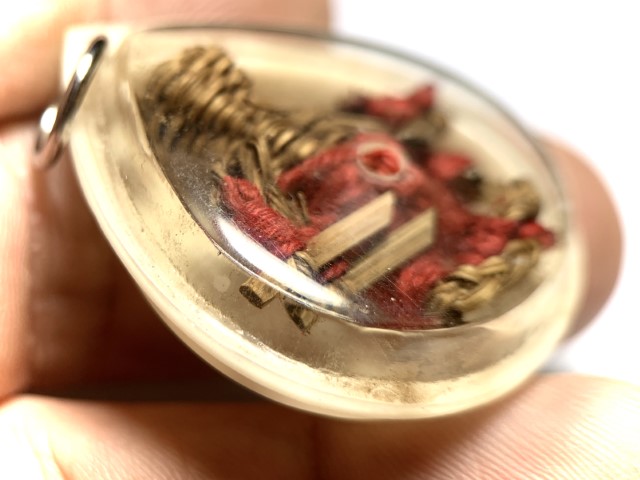
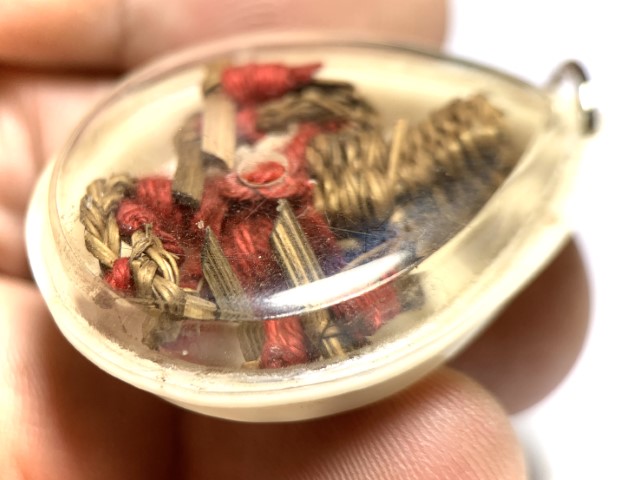
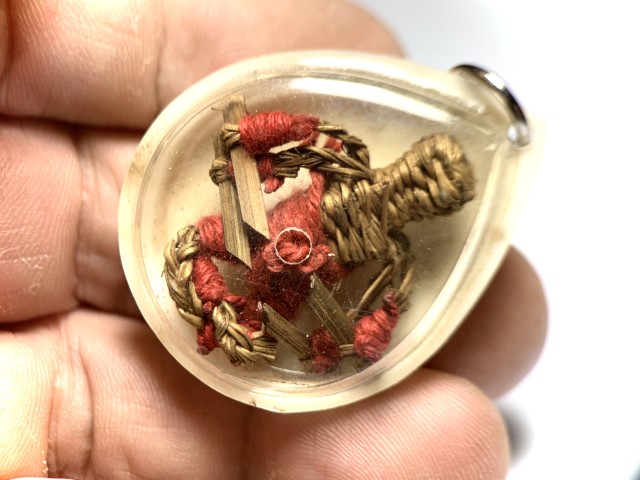
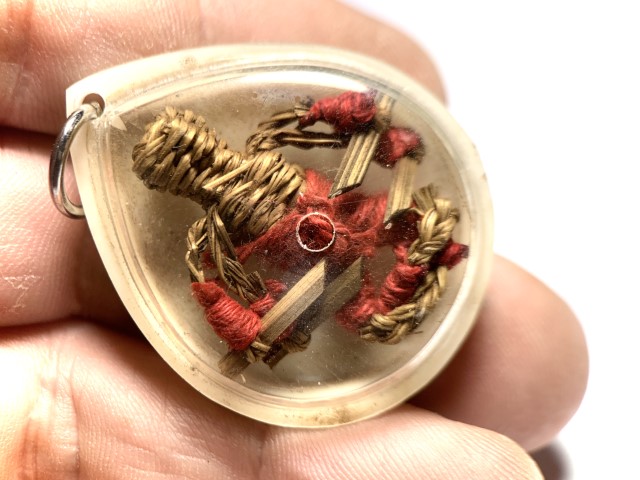

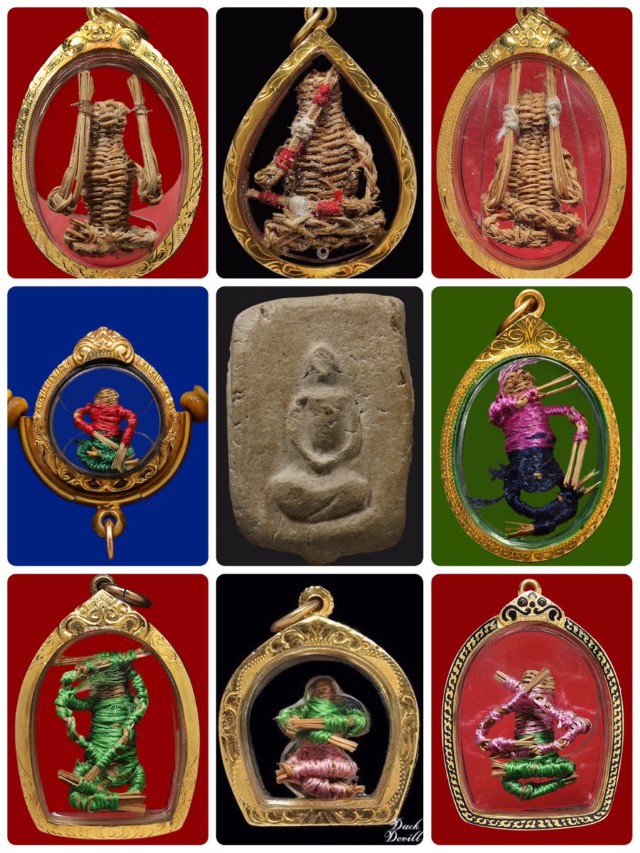
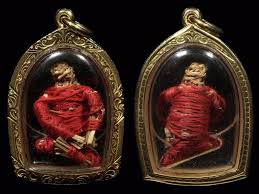
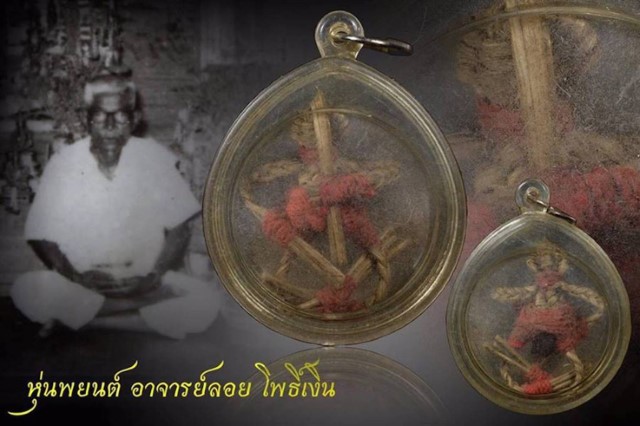
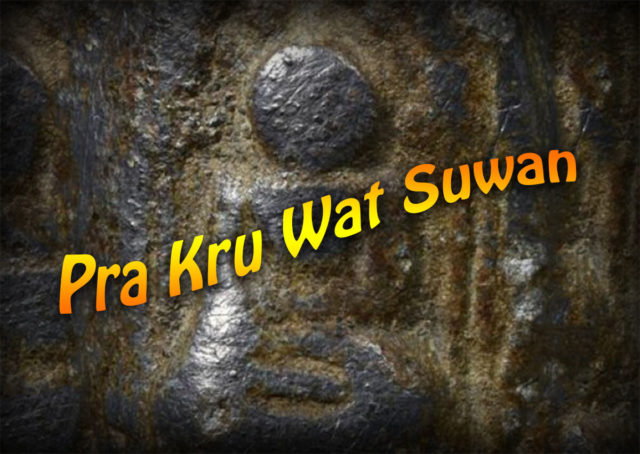
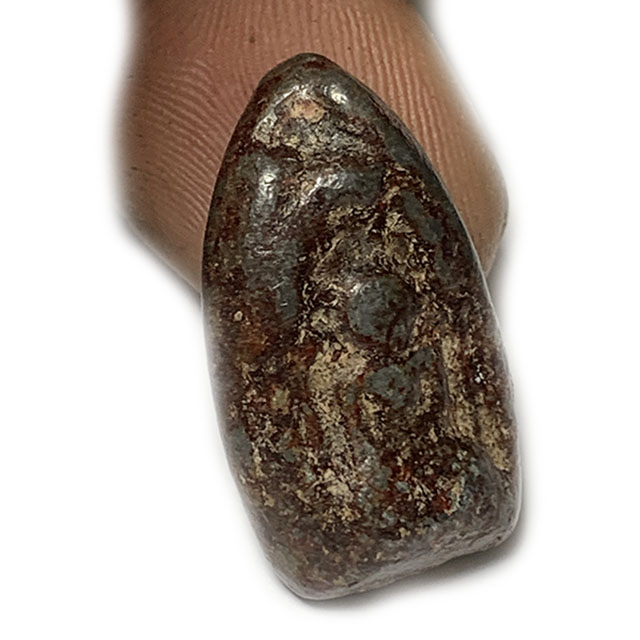


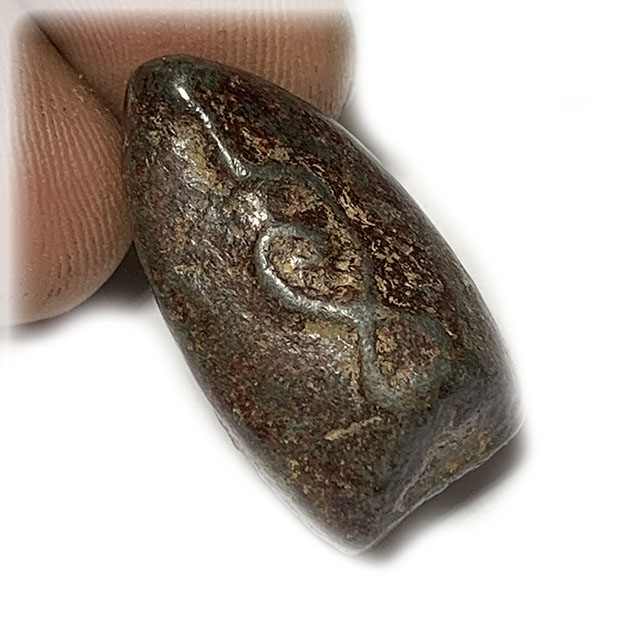

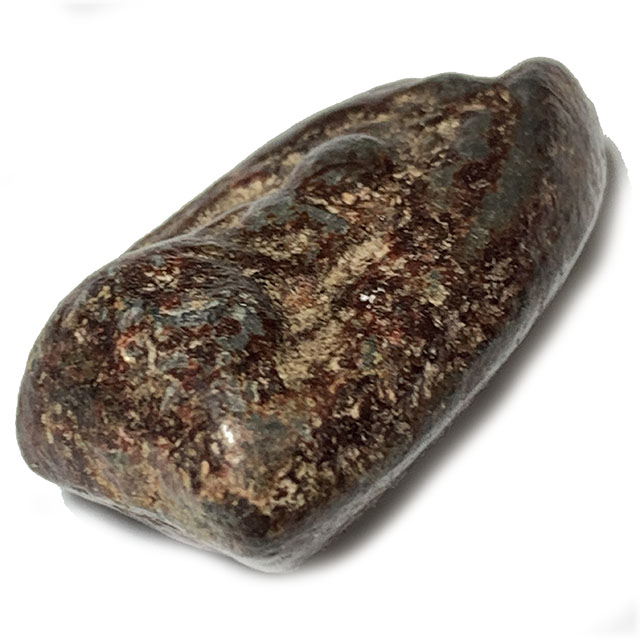
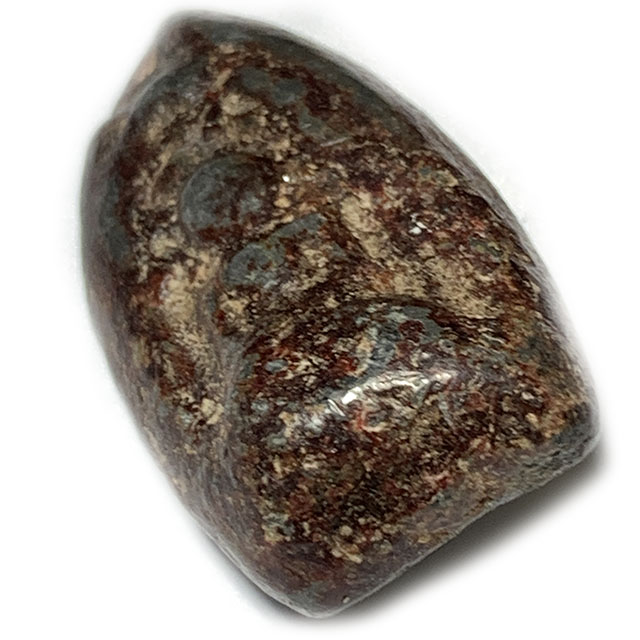
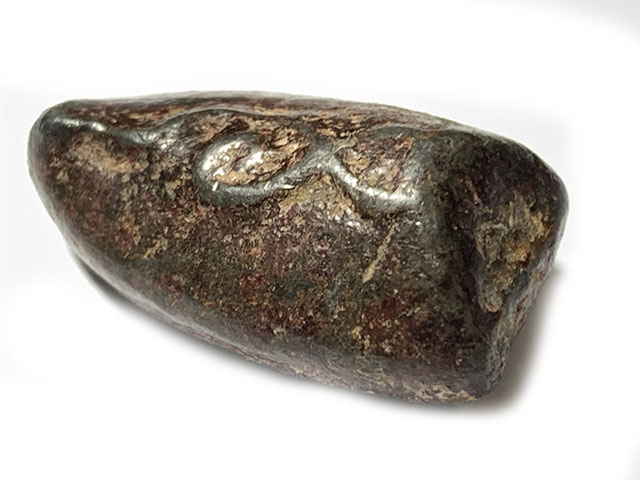
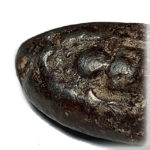
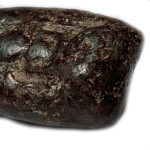
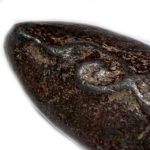
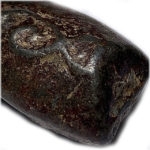


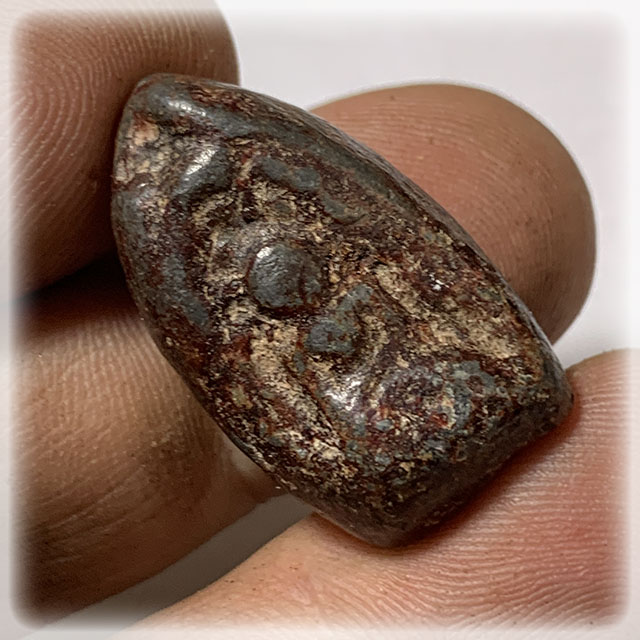

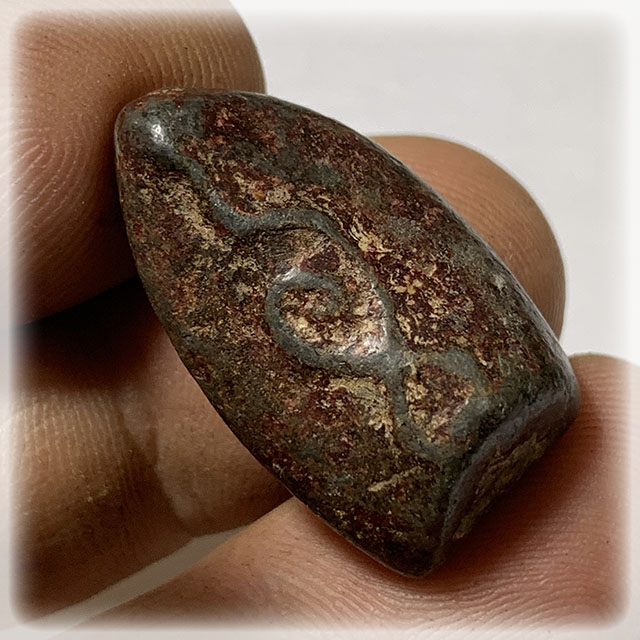


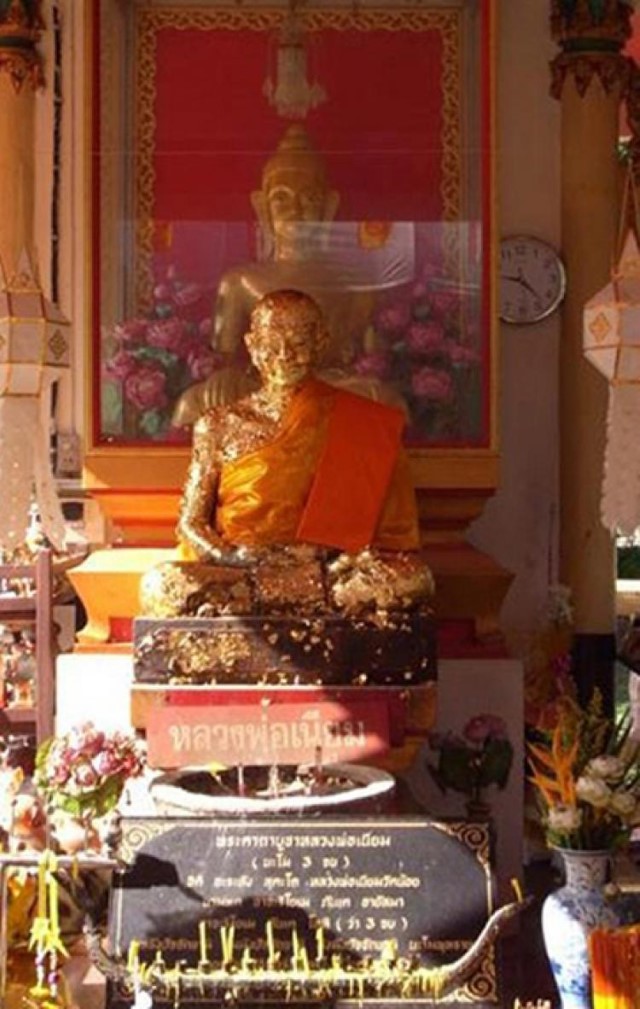
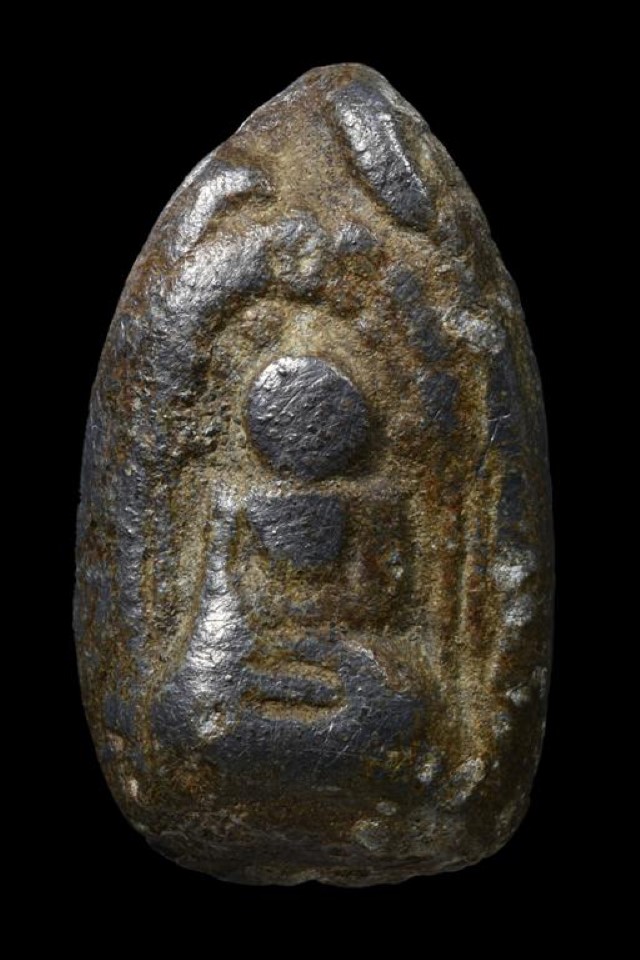
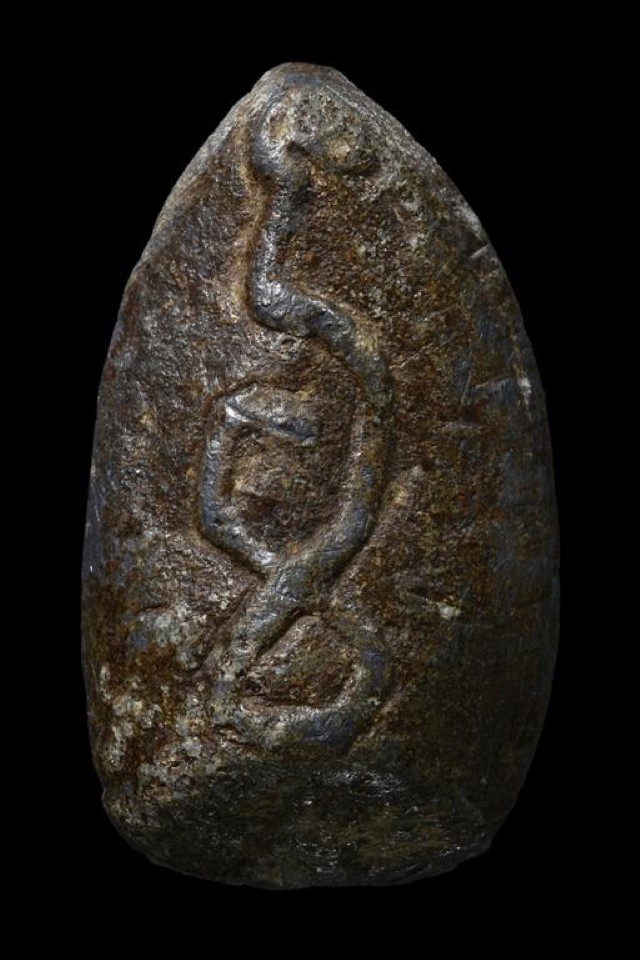
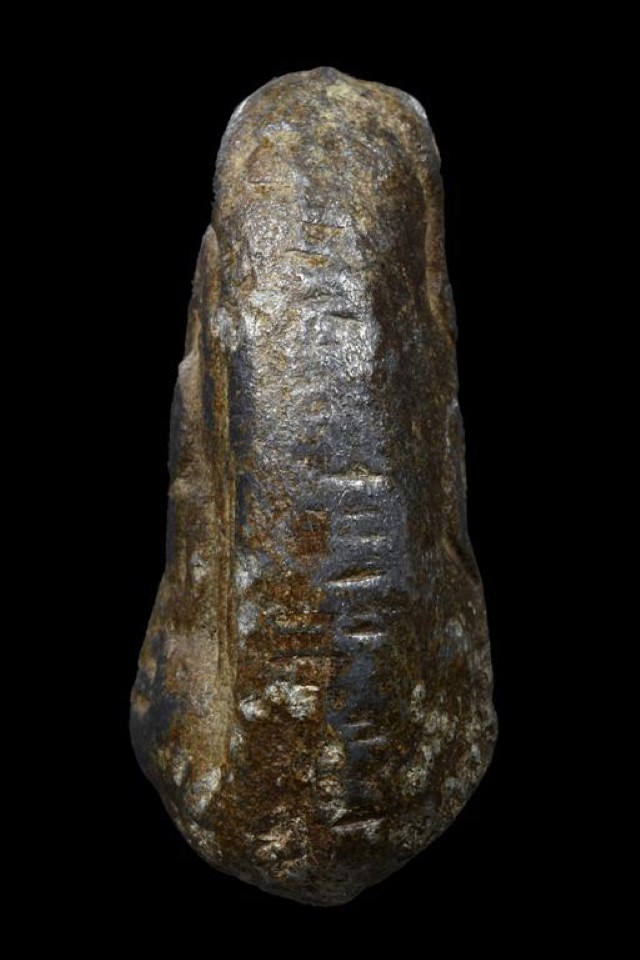
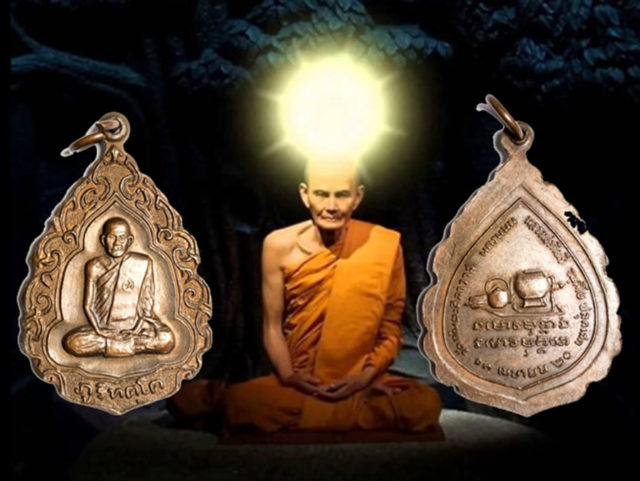

 The amulet has the images of an almsbowl, a kettle and a Glod Umbrella, the basic traveling necessities of the Thai Tudong Forest Tradition Lineage of LP Mun. The amulet was released in 2520 BE, and is first edition, after Luang Por Kinaree released his own first edition coin with his own image in the year 2519 BE. This series of amulets were fashioned in the same shape, but with the image of Luang Phu Mun Puritatto, blessed by Lineage Master, and Abbot of Wat Gantasilawas, Luang Por Kinaree Jantiyo, in Grand Buddha Abhisekha ceremony. The ceremony was held directly at Wat Gandtasilawas in Nakorn Phanom, with a host of other great Tudong Masters of the Luang Phu Mun Thai Forest Tradition.
The amulet has the images of an almsbowl, a kettle and a Glod Umbrella, the basic traveling necessities of the Thai Tudong Forest Tradition Lineage of LP Mun. The amulet was released in 2520 BE, and is first edition, after Luang Por Kinaree released his own first edition coin with his own image in the year 2519 BE. This series of amulets were fashioned in the same shape, but with the image of Luang Phu Mun Puritatto, blessed by Lineage Master, and Abbot of Wat Gantasilawas, Luang Por Kinaree Jantiyo, in Grand Buddha Abhisekha ceremony. The ceremony was held directly at Wat Gandtasilawas in Nakorn Phanom, with a host of other great Tudong Masters of the Luang Phu Mun Thai Forest Tradition.





















